The leading authority in photography and camera gear.
Become a better photographer.
12.9 Million
Annual Readers
Newsletter Subscribers
Featured Photographers
Photography Guides & Gear Reviews


Best Fuji Lens For Travel
What's the best Fuji lens for travel? This guide takes you through 5 top picks of the best zooms to primes to pair with your Fujifilm X-Series camera.
Camera Gear Guides | Fujifilm Lens Guides | Lens Guides | By Greg Cromie
If you use Fujifilm X-series cameras and are often on the move, this guide to the best Fuji lens for travel photography is definitely worth a read.
Whether you’re keen to shoot panoramic vistas with wide angle lenses, or prefer to get close up action shots with a zoom lens, one thing’s for certain – you’re going to want lenses with stellar image quality!
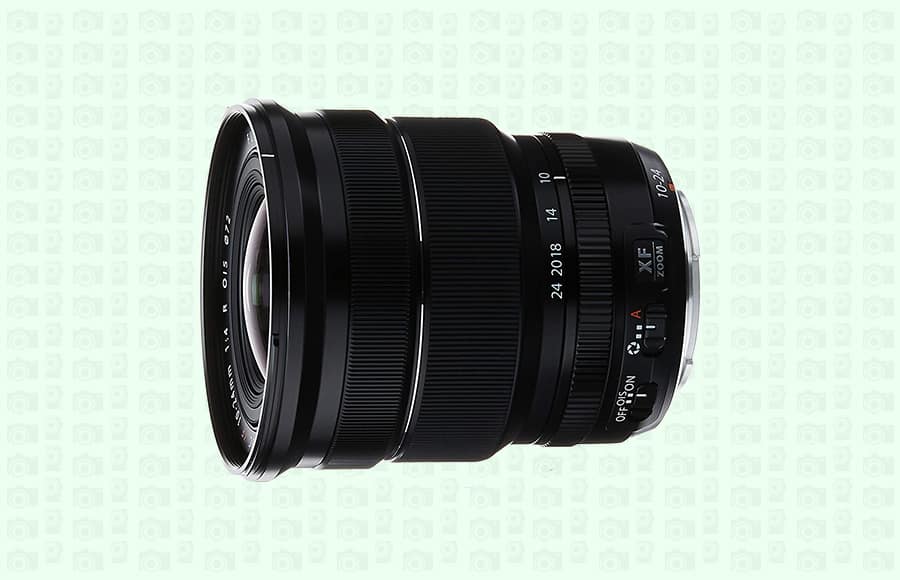
Capture stunning vistas on your travels with this super light and durable wide-angle lens.
With so many amazing Fuji lenses on offer (see them here ), it’s hard to know which ones to pick to satisfy your photography wanderlust.
To save you some time, we’ve hand-picked the best 5 options in 2024.
Let’s take a closer look.
Table of Contents
Best Fuji Lens for Travel in 2024
1. fujifilm xf 10-24mm f/4 r ois.

See More Reviews
- Lightweight
- Optical Image Stabilisation (OIS) switch
- Beautiful bokeh
- Edge-to-edge sharpness
- Balance is a little front heavy
- Not weather-sealed
It’s evident that Fujifilm develops some of the best high-quality lenses to suit all photography genres. So when it comes to choosing Fujifilm lenses for travel photography, you’re somewhat spoiled for choice.
If you’re planning on travelling to a destination with gorgeous wide vistas and landscapes, then one of your first choices for a lens is the Fujifilm XF 10-24mm f/4 ( reviewed here ). This is the best Fuji travel lens that excels in capturing gorgeous landscapes.
This is one of the first and certainly one of the widest lenses in the Fuji lineup and has a 35mm equivalent focal length of 15-36mm. Out wide at 10mm, you have the capacity to capture sweeping landscapes or wide city views.
At the closer end of 24mm, you have a relatively natural field of view for closer situations such as architecture and street work. This makes it perfect for travel photography, especially if you’re visiting amazing cities with unique details.
Regardless of the intended use, this lens will give you a great amount of flexibility.
The Fuji XF 10-24mm is one of the older of the zoom lenses on offer, however, it’s built to last a lifetime. It features a full metal body including the lens mount making it a rugged lens but not one that’s weather resistant.
For a lens of this size, it’s not too heavy, however, the weight seems to be in the front of the lens rather than balanced. The total weight of the lens is 410gm and when paired with any of the Fujifilm cameras such as the X-T3, you have a total kit weight of just under 1kg.
When supporting this lens two-handed on a Fujifilm X Series body, the weight is evenly spread.
The lens has a total diameter of 78mm and a length of 87mm. This remains fixed as the zoom function happens within the lens barrel. The filter thread has a diameter of 72mm.
Overall it’s a neat lens that won’t dominate your travel bag or day pack when you’re out and about on your travels.
The lens sits well in your hand and the aperture, manual focus and zoom rings are all easily accessible with your fingers naturally sitting in place. Each of these rings has the necessary glides with just the right resistance to prevent slippage or knocks.
The Fuji XF 10-24mm f/4 features an Optical Image Stabilisation (OIS) switch, which is great for low light shooting and handheld shooting with slower apertures.
This lens would be perfectly paired with a camera such as the Fujifilm X-T3 which does not have In Body Image Stabilisation (IBIS).
The lens performs incredibly well in the autofocus department, and due to its maximum aperture of f/4, it has great edge to edge image sharpness. Given that this lens is primarily suited for shooting wide angle and ultra-wide landscapes and scenery, you’re likely to drop your aperture down to f/8.
In lower light settings, having a maximum aperture of f/4 is not ideal – however, thanks to the OIS, you can slow down your shutter speed considerably even if shooting handheld.
Unfortunately, the Fuji XF 10-24mm f/4 does not have weather resistant sealing. This is disappointing given the zoom system is all maintained in the barrel of the lens. However, it does have a minimal focus distance of around 10″ (25.4cm) making for some fantastic and dynamic close up images.
This Fuji lens is fantastic value at just under US$1,000. The newer Fuji XF 8-16mm f/2.8 currently retails for twice that price. In this area, the XF 10-24mm f/4 is a stand out performer at an amazing price.
As mentioned, if you’re looking at travelling to some truly beautiful scenic locations and landscape photography is your jam, then the Fuji XF 10-24mm f/4 is a must-have for your travel kit.
It may not be the only lens you choose to pack, but it will be the one you’re the most thankful for when you get home and see your images.
2. Fujinon XF 18-55mm f/2.8-4 R LM OIS
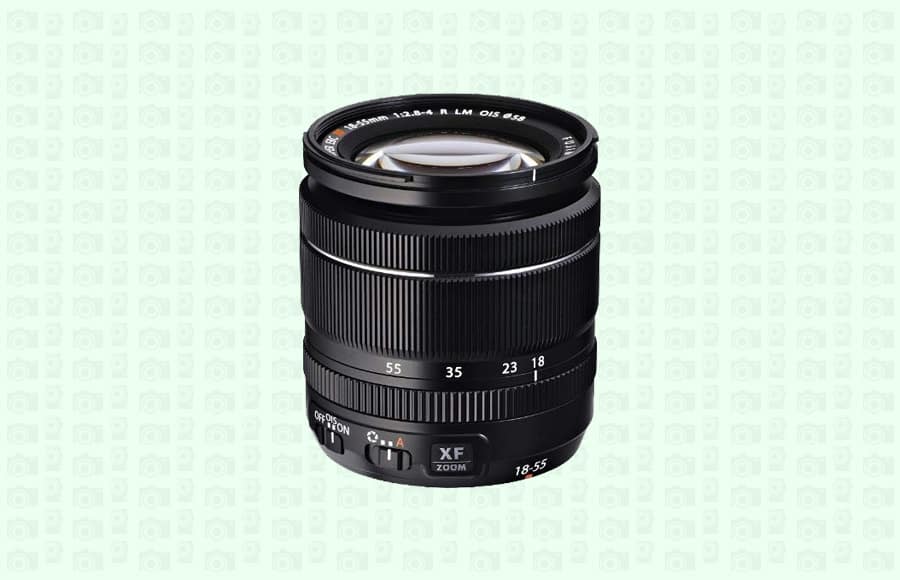
- Compact & neat design
- Flexible zoom range
- Minimal distortion
- Not great for macro
If you’re planning a photographic holiday and you want to pack a lens that you could pretty much rely on exclusively, then the Fujifilm XF 18-55mm f/2.8-4 is the one!
I’m not suggesting that this should be the only lens you take – however, if you’re travelling on a budget, or you want to travel compact and light, then this kit lens is a must-pack .
The XF 18-55mm is an incredibly compact lens that has a neatly aligned barrel made of durable materials. When zoomed in, the barrel extends but not unreasonably far. Each outer element of the barrel has the same diameter and, as a result, the whole lens design is clean and neat.
The manual focus and zoom rings are comfortable with a suitable amount of grip. The zoom ring has the desired amount of glide with enough resistance to prevent the lens from extending out due to gravity or movement.
This lens is a common choice for the Fujifilm kit lenses with their premium camera bodies which you can usually find at Amazon or in the Moment Store . The lens weighs only 310gm and when paired with a camera such as the Fujifilm X-E3, the total kit weight is only 647gm.
A combination such as this makes it an incredibly appealing travel kit especially if space and weight is a premium.
Further to this, the lens has a diameter of 65mm and a filter thread size of 58mm, making it a very comfortable lens to hold and control. This lens is 70.4mm in length when at the wide zoom and 97.9mm in length at the telephoto end.
In practical terms, it would be fair to ask what makes this one of the best Fuji lenses for travel. The answer is the versatility you get for the size of the lens.
Having an 18-55mm zoom range provides you with a lot of flexibility without having to pack bigger and heavier lenses.
At the wide angle end, 18mm gives you a great focal length for anything from landscapes and beach scenes to architecture and street work.
At the 55mm telephoto end, you have far more reach to gain greater details at temples, nature reserves and travel portraits. All of this in a lens that you can comfortably carry all day on the camera of your choice.
Given its compact size and low weight, the Fuji XF 18-55mm f/2.8-4 works perfectly with any of the X Series camera bodies produced by Fuji. Regardless if you’re shooting with the Fujifilm X-H1 or the far smaller Fujifilm X-T200 , this lens will be well balanced.
Of course, if you’re wanting to go for a more compact body, then I would recommend considering either the Fujifilm X-E3 or the Fujifilm X-T30 . Both of these are brilliant mirrorless cameras that are lightweight, feature-packed and perfect for travel.
Neither this lens nor either of these suggested Fujifilm cameras is weather-resistant; so caution should always be exercised when out in the elements.
The Fuji 18-55mm has a maximum aperture of f/2.8 at the wide end and f/4 at the telephoto end. While not the widest of apertures, you have ample opportunity to create great subject separation between your foreground and background subjects.
Further to this, low light performance can easily be managed with apertures at those levels.
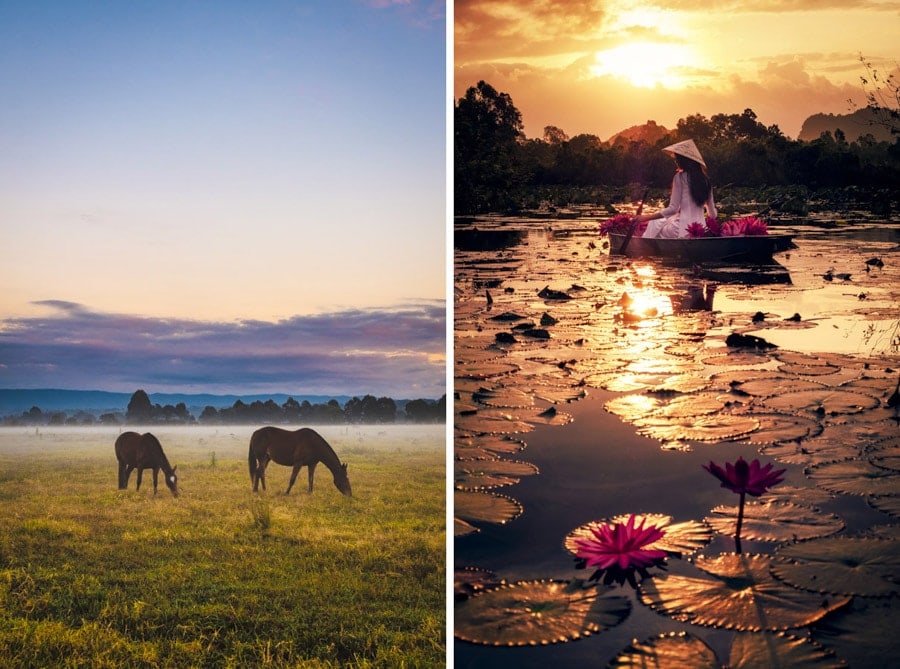
Fujifilm XF 18-55mm | © Bhagi Siva
Thanks to the included Optical Image Stabilisation switch on the barrel of the lens, you have greater low light control working at slower shutter speeds. Even with a Fujifilm X-E3, you can now have stabilisation available for stills and video.
As mentioned previously, the Fuji XF 18-55 is usually included with the mid-high end Fujifilm camera bodies. However, this little lens is one of the most highly acclaimed kit lenses on the market. At just under US$700, you’re getting an incredible lens that could be put to any task successfully.
In a travel setting, this Fuji lens will prove to be an excellent choice for all of your shooting needs. Regardless of your destination, you’ll be able to capture high-quality photos of interesting scenes both near and far – all with a single compact and highly functional camera with one great lens.
As another bonus, you can carry this kind of kit all day and in any setting without it becoming heavy or cumbersome.
The reasons above make it clear why this is not only one of the best Fuji lenses for travel photography, but one of the best Fuji lenses full stop. Happy travels!
3. Fujifilm XF 55-200mm f/3.5-4.8 R LM OIS
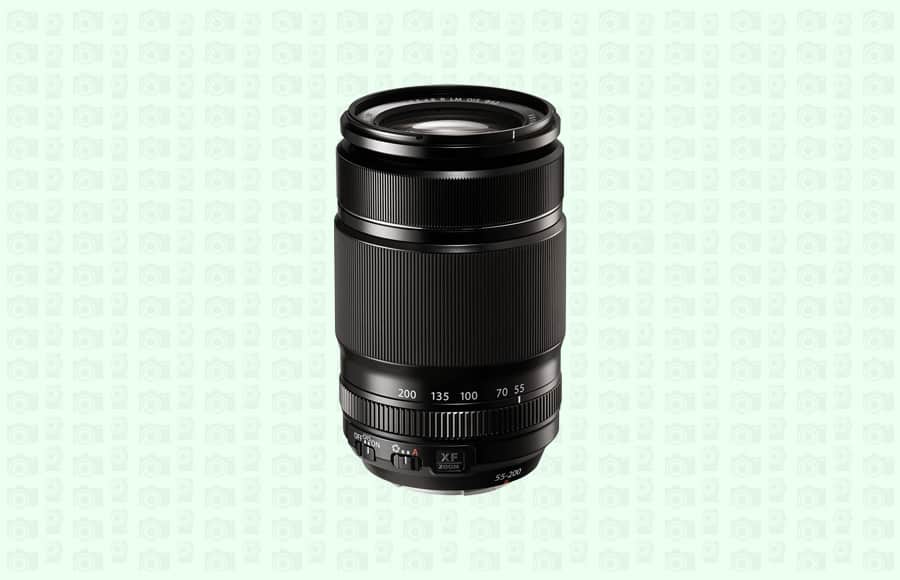
- Strong build
- Light for its size
- Quick and accurate autofocus
- Excellent image quality
- Some zoom creep
- Hunts for focus in low light
The Fujifilm XF 55-200mm f/3.5-4.8 is another incredible lens that clearly earns its seat at the table of best Fuji lenses for travel. It has very much been designed to be paired with the Fuji XF 18-55mm f/2.8-4 lens.
With this pair of lenses, you have a very comprehensive travel kit. The smaller 18-55mm lens will cover your wide angle work and this 55-200mm will cover the things you cannot reach. This will be a perfectly suitable kit to carry with you all day.
The Fuji 55-200mm has an incredibly strong build with metal and durable plastic body. The aperture, zoom and manual focus ring are well made and hug the body comfortably with no slack. Much like the Fuji 18-55mm, this lens has a very clean design that has the same diameter barrel for the length of the lens.
Given the range of this lens, it has a lot of glass elements and you would think that would make this a large and heavy lens. However, Fujifilm has been able to engineer this lens to have a minimal design, size and a short travel distance for the zoom function.
The lens has a diameter of 75mm with a filter of 62mm for attaching ND or Polarizing or other such filters and accessories .
When the lens is zoomed in at the widest, the barrel is only 118mm long. At the telephoto end, the lens only extends another 59mm to 177mm to reach the 200mm zoom range.
As the Fuji XF 55-200mm lens weighs just 580gm, you can easily pair it with a Fujfilm body such as the XT-3 and get away with a carry weight of just over 1kg.
For a flagship camera and telephoto zoom lens to be such a light combination makes it ideal for being out and about in nature. This combination makes others regard this as the best Fuji zoom lens for travel.
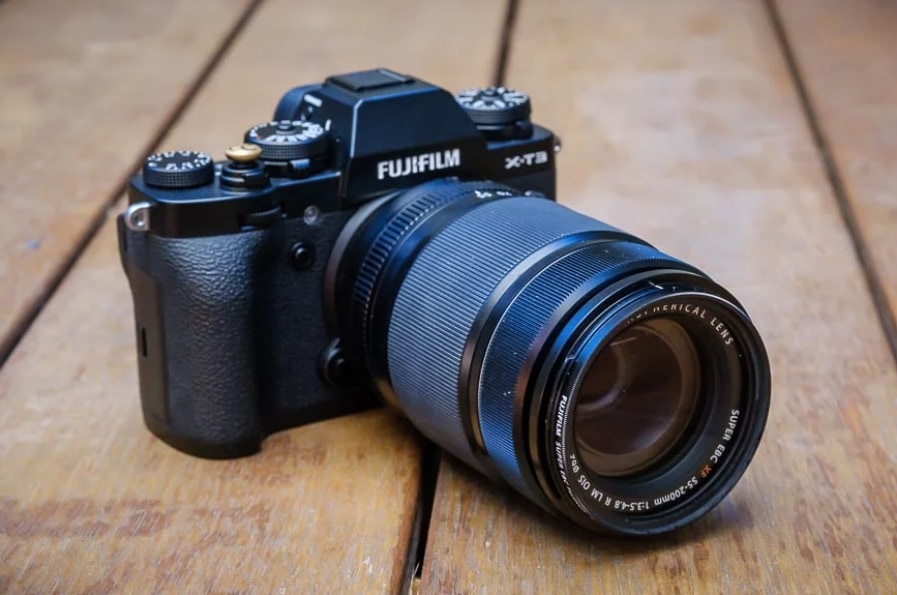
Attached to a Fujifilm X-T3 | © Greg Cromie
When paired with a camera such as the X-T3 (see image above), the combination forms a comfortable balance in your hand.
The XF 55-200mm doesn’t create distortion by being too front heavy or impact your ability to shoot at lower speeds or with the zoom fully out.
Each of the control rings on the lens has a nice buttery smooth travel with just the right amount of resistance. We found that, on the odd occasion, the lens extends due to gravity if held pointing down. A minor issue as you generally work out your zoom distance once you bring the camera up to your eye.
Just like the smaller XF 18-55mm lens, this one also features Optical Image Stabilisation (OIS). This is a great aid when photographing moving objects such as wildlife at the full telephoto end of the range.
Speaking of tracking subjects, the autofocus on this lens is incredibly quick and accurate.
The Fuji XF 55-200mm is able to capture focus quickly at any focal length and ensure you achieve clear and sharp images. Regardless of the focal distance, you’re guaranteed edge to edge sharpness.
In general, the autofocus system is quite responsive and quick to secure focus with no hunting. However, in lower light settings the focus hunting starts to become more obvious. While this can be corrected to some degree with IOS, the issue is worth pointing out.
The XF 55-200mm currently retails for just under US$700 and for that, you’re getting a high performing lens that will deliver exceptional image quality.
Fuji also has on offer the optically brilliant XF 50-140mm f/2.8 that’s weather-sealed but does not have as long a range. This lens is over twice the price at around US$1,600.
If you did decide to complete your kit with this lens and the Fuji XF 18-55, you would have everything you need for a holiday adventure and never miss a shot. You’d have a wider zoom for landscapes and street work. Then you’d have the Fuji XF 55-200 to capture incredible detail in architecture or to capture wild animals on safari.
A lens of this nature, with its excellent image quality, fast focusing performance and great focal range, could be used in a number of scenarios. Travel photography is one of them. After all, you want to be able to return from your travels with the most amazing images you can get.
4. Fujifilm XF 23mm f/2 R WR
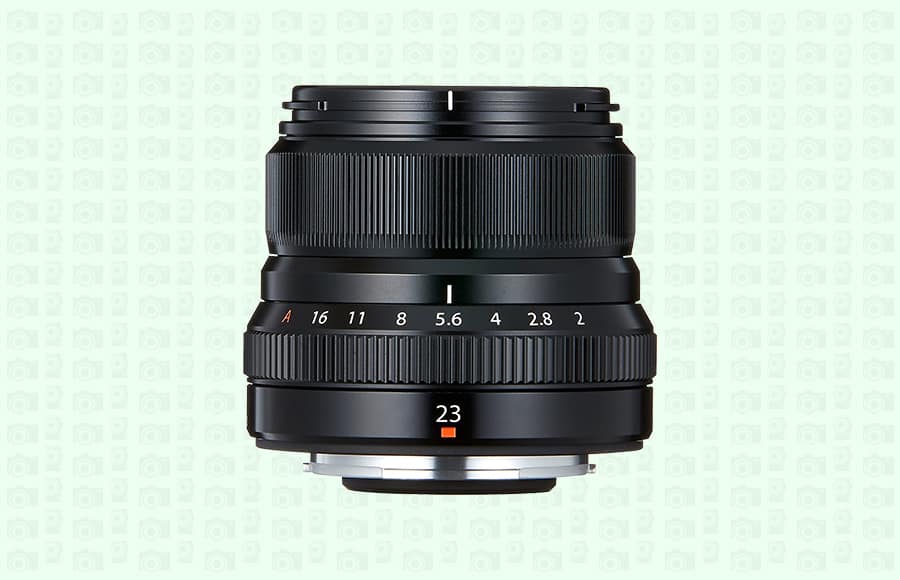
- Super small and portable
- Weather and dust resistant
- Fast and silent autofocus
- Great in low light
- Slightly soft edges when wide open
- No image stabilisation
As you know, there are many different types of travel experiences to be had. And every situation requires a certain type of lens to ensure that you capture what you want to remember. The temptation is always there to take everything just in case you don’t have the right lens and miss a shot.
What if you went in the other direction and decided to just take one lens with you – and not a zoom? Just a single prime lens!
In my opinion, the Fujifilm XF 23mm f/2 is the perfect lens to take with you when you want the most minimal kit you can carry. People will call you crazy but you must have confidence that you can make it work – in the right setting. The Fujifilm XF 23mm f/2 is the best Fujifilm travel lens to pull this off.
This is one of the smallest lenses in the Fujifilm lineup and is part of a series of re-designs that Fujifilm has carried out on a number of lenses with popular focal distances.
For example, the optically brilliant Fuji XF 23mm f/1.4 is one of the sharpest Fujifilm lenses available. It’s also one of the oldest lenses as it was one of the first Fuji primes on the market.
Recently, Fujifilm released the XF 23mm f/2 in a much smaller and weather-sealed body. This new Fujifilm lens has a unique design to it and it’s incredibly compact.
Other lenses in this re-release range are the XF 35mm f/2, the XF 50mm f/2 and the XF 16mm f/2.8. These prime lenses all have a similar retro design and size to keep the range connected.
When we say that this is a tiny lens, it really is: it has a diameter of only 60mm and a minuscule filter thread of 43mm. The total length of the lens is 51.9mm. A lens of this size would be well suited to a camera such as the Fujifilm X-T200, the Fujifilm X-T30 or even the Fujifilm X-E3.
Regardless of its size, this 23mm f/2 prime lens is incredibly well built and tough.
However, don’t be deterred if you were considering pairing this with a Fujifilm X-T3 or the new X-Pro3 . These lenses, given their retro design, look right at home on one of those flagship camera bodies. And at only 180gm, you could comfortably pair the lens to have a simple travel kit that weighs under 700gm.
Or, pair the lens with the smaller Fujifilm X-E3 and your travel kit drops to just over 500gm. With weight like that, you could hand hold your camera all day and not notice any strain or fatigue. You could get away with not having a camera bag and just keep your kit safely wrapped in your day-bag.
It’s that kind of convenience and simplicity that makes the weather resistant Fujifilm XF 23mm f/2 the best Fuji prime lens for travel – check out the video below… but don’t try this at home!
Despite its size, the Fuji XF 23mm is a very user-friendly lens as it sports both a marked aperture ring and a manual focus ring. These are both of a suitable width to identify with your left hand and control them accurately. Even with such a narrow barrel, you don’t feel like you’re creating a claw with your hand just to turn them.
When it comes to usability, this Fuji lens has incredibly quick autofocus in both good light and in low light. In fact, it’s one of the fastest autofocus lenses in the entire Fujifilm range.
What’s more is that due to the small size of the lens, its internal glass and focus motors, it draws hardly any power from a standard Fujifilm battery.
You can get far more shots with a lens of this style than from its much bigger brother.
While this lens does not feature image stabilisation, it does have a wide aperture of f/2 that allows for great subject separation and ample light to pass to the sensor.
Plus, given it’s so light, you have a far greater chance of hand-holding this lens while shooting at slower shutter speeds.
One of the only setbacks about this lens is that it delivers slightly soft edges when shot at f/2. Stepping down to f/4 and beyond seems to remedy this issue.
The Fuji XF 23mm f/2 currently retails for under US$450 and that’s in comparison to the original XF 16mm f/1.4 which retails for double that. Enough said really, as this is incredible value for money, especially for travel photography.
It’s a daring traveller that ventures out with a single lens with a 35mm equivalent field of view. But then again, this is about as close as you can get to the view our eyes naturally gain.
There’s something compelling in being able to capture that same view – and if you want to zoom, then do it the old school way and use your feet.
Be brave with one of the best Fuji lenses for travel and be rewarded on your next adventure.
5. Fujifilm XF 18-135mm f/3.5-5.6 R LM OIS WR
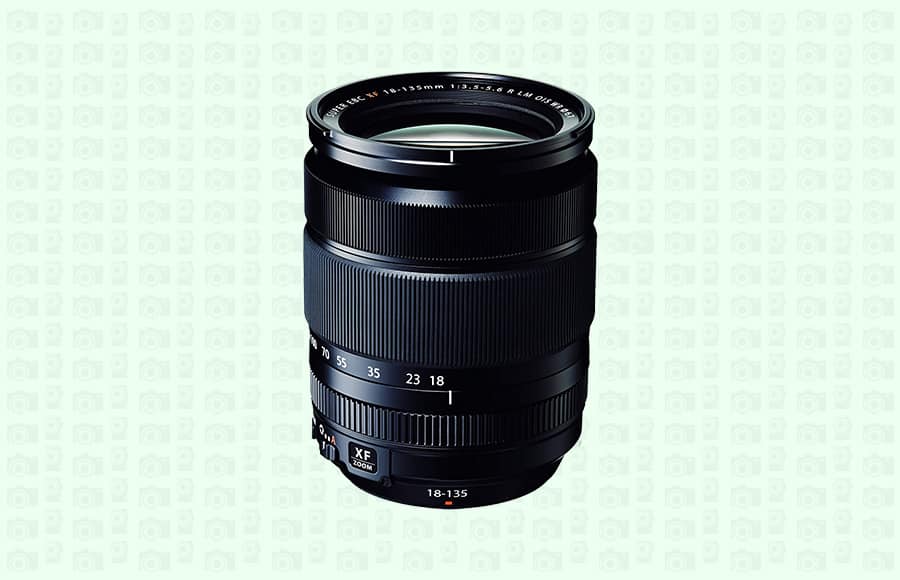
- Ultra versatile range
- Optical Image Stabilisation (OIS)
- Weather sealing
- Great bang for buck
- Softness when shooting in low light
- Some focus hunting
While on the topic of only carrying one lens to shoot it all, the Fuji XF 18-135mm f/3.5-5.6 is just such a lens perfect for travel photography.
If you’re not brave enough to just get by with a single prime like the XF 23mm f/2, then perhaps you’ll feel more comfortable with a zoom like this.
The Fuji XF 18-135mm is able to cover a very wide focal length and also achieve a decent amount of reach with its zoom. So if you’re on a long trip and don’t want to carry too much camera gear but equality want to capture everything, this is the lens for you.
Having that level of flexibility is ideal in a travel situation where you’re going from amazing vistas to tight old-town alleys.
For its range, the lens is actually quite compact and has a similar design quality to the XF 18-55mm f/2.8-4.
It has a long clean barrel with no protrusions and inlaid focus and zoom rings. Being the one lens for every occasion, this beauty also features Optical Image Stabilisation (OIS) and weather sealing.
Alongside its sturdy build qualities, the weather sealing makes the Fuji 18-135mm suitable for all conditions, from rain and hail to dust and snow.
When paired with a weather resistant Fuji body such as the Fujifilm X-T3, you have a completely weather-sealed kit.
The size of this lens can be deceptive as it covers such a wide range of view. The lens has a diameter of 75.7mm and a filter thread of 67mm making it easy to obtain lens filters.
With the zoom in, the lens is 97.8mm long and with the zoom fully out it’s 158mm in length.
In terms of weight, it’s 490gm which puts it comfortably between the Fuji XF 18-55 and the XF 55-200 in size and weight. Regardless, for a lens with this kind of flexible range, it’s certainly a very compact lens.
When combined with a smaller body such as the Fuji X-T30, this lens is only slightly front heavy, but otherwise, the balance is good. When it’s paired with a larger camera such as the X-T3, there’s a more accurate level of balance between the two.
Having said that, shooting with a lens of this nature requires two hands to control and stabilise the shot, so it would be well-matched to any Fuji mirrorless camera body.
The autofocus on the Fuji XF 18-135mm is reasonably good as it can precisely capture subjects in all manners of light with minimal sign of focus hunt. The greatest setback for this lens is how soft the image quality is, especially when shooting in low light.
With good light and aperture dropped to around f/8, you can get great image quality with good colour rendering and sharpness. However, in low light, this lens delivers very soft image quality, which is unfortunate given the level of versatility it offers.
In developing a lens of this nature and at this price point, it’s a shame that the trade-off has to be in the image quality.
Speaking of price, the Fuji XF 18-135mm currently retails for under US$900 and given the level of flexibility it provides, this is a great value lens. Keeping in mind that it’s the only camera lens in this guide with both OIS and weather sealing and a stellar zoom range, this is money well spent.
This Fuji lens is all about versatility and when you’re travelling, especially for long periods of time, versatility is your best friend.
You don’t pack all of your jackets when you’re travelling, you pack the most versatile for the situation. Packing the best loom lens for a range of situations is the very same logic.
Final Words
Whether you’re shooting a travel documentary photo story or simply want to capture your cherished holiday moments on film, you’re going to want to take your camera along for every moment of your adventures.
To get your best shots, you need the kind of lenses that are well suited to travel photography.
On top of that, you probably want to keep your kit relatively minimal and portable – which may mean leaving things like your macro lens at home and opting for a pancake lens or a versatile zoom.
If you’re a user of the Fujifilm system, you have some incredible options in this list. Any of these will serve you well during your next travel adventures.
You'll Also Like These:

I’m a Melbourne-based street photographer and blogger. I love to travel to Japan to photograph and document its dynamic people and culture.
The version of the 10-24 introduced in late 2020 is weather sealed.
Thanks for checking out my article. If you have any questions or comments then please leave them here and I will get back to you. Cheers. G
Hi, really interesting article. I’m a bit late to this one but it says 2021 so I’m going for it :-)
I’ve got the X-T30 and similar kit to the above including the 18-135 recently. I replaced the 18-55 as I thought I’d like a bit more reach but keep to one zoom lens for a compact / versatile kit.
I wondered whether you’d tried the 16-80mm? Looks good on paper – a touch lighter, a touch smaller, wider, sharper, faster – another good all in one – but with a good hit on the reach obviously.
Hi Mark, hi Greg,
Great review as usual! Travelling is really something different from the everyday photographic job, so one needs different tools. For my last trip abroad I took Fujinon 35mm f2 and Samyang (Rokinon) 12mm f2 with me. It was great and versatile, but manual focus on the latter lens is slower than the autofocus obviously. So maybe next time I would take the Fujinon 16mm f2.8 instead. BTW, sorry for being picky, but in the table at the beginning you have a terrific 23mm f2.0 lens, but the description says “Super Wide 2.8 Maximum Aperture”. So, the f value is wrong. Sorry again :-)
Hi Nikita. Thanks for your comment. I agree completely that travel gear is much different. I remember on my first trip to Tokyo a few years ago I took almost all of the lenses featured in this review. My kit bag was far too heavy and in some ways it limited my enjoyment. On my last trick to Tokyo, I only took the X-T3, 23mm f2 and the Fuji X70. Much more fun to work with the limited gear you have and make it work. I am considering taking the 16m f2.8 on my next trip too – great minds…As for the error in the table, I don’t create those so I will make sure that the person responsible is fired! Just jokes. We will get it sorted. Thanks again. G
Leave a Comment Cancel Reply
👋 WELCOME TO SHOTKIT!

🔥 Popular NOW:

Unlock the EXACT blueprint to capture breathtaking iPhone photos!
Shotkit may earn a commission on affiliate links. Learn more.
Join The London Crew: Grab this checklist with 110 things to do in london from a local.
Hues Of Delahaye
9 Best Fuji Lens for Travel [2024] – Fujifilm Lenses Review

Are looking for the best Fuji lens for travel? As someone who shoots all their photos with Fujifilm, I can help!
So, you have the new Fujifilm X-T5 camera, but the kit lens isn’t quite cutting it? Want to dive into the world of travel photography, but you know your current setup won’t be quite right for the job?
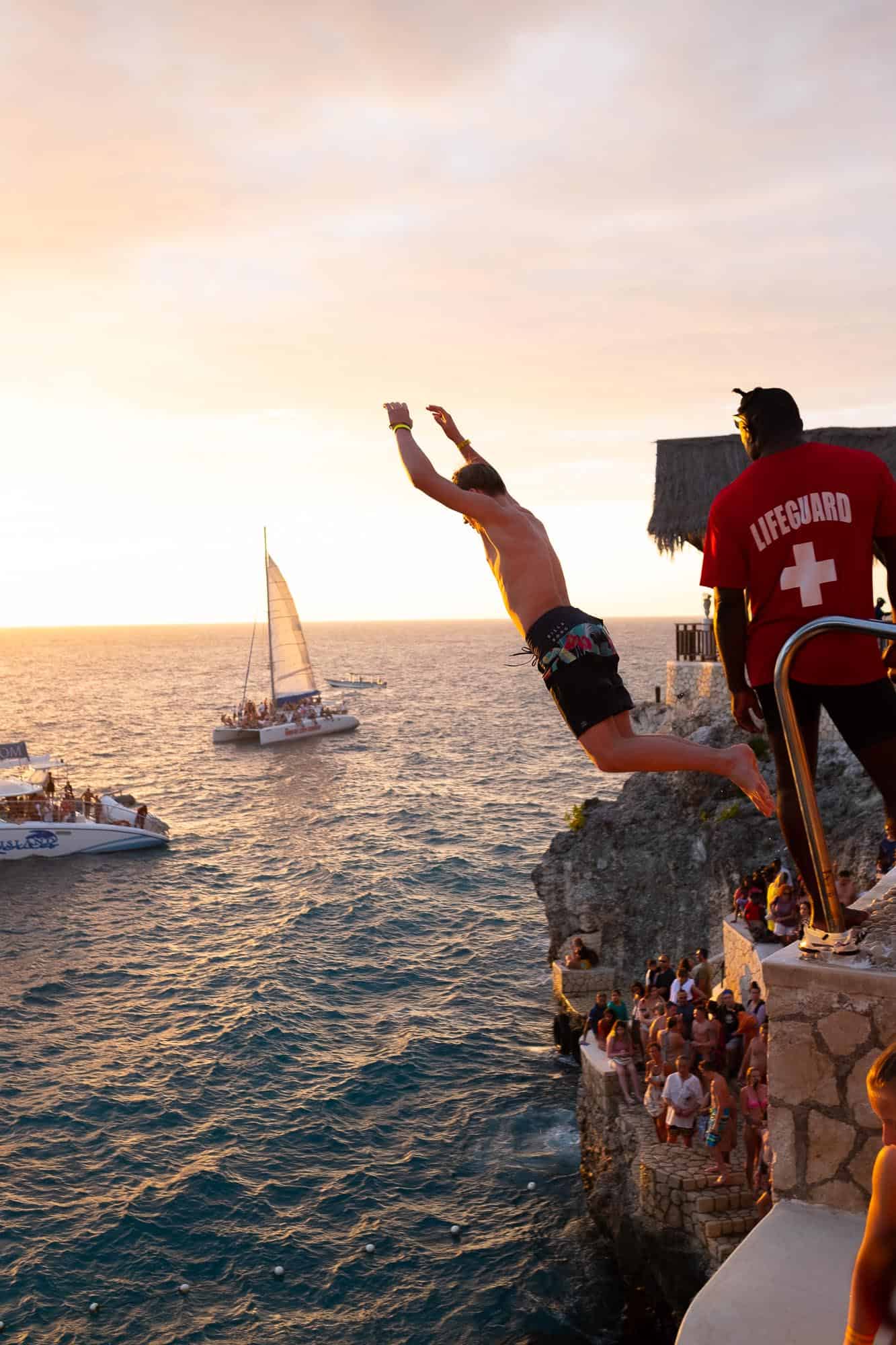
Well, let me help you find the best Fujifilm lens for travel for you as a Fuji enthusiast (aka Fuji fangirl). I’ve owned and shot with the Fuji X-series system exclusively for the last 6 years for my travel blog and clients.
I started with the Fuji X-T2 before upgrading to the Fujifilm X-T4 camera.
I’ve also dropped some major bank on Fuji lenses, starting from the humble kit lens (Fuji 18-55mm f/2.8-4 ) to the Bohek monster that is the Fuji 56mm f1.2 lens and knows that choosing the right lens for your travels can be an absolute nightmare.
The sheer number of options alone is overwhelming. And that’s without diving into the nitty-gritty specs and features of each one.

Fujifilm XF 16-55mm F2.8
The Fujifilm XF 16-55mm F2.8 R LM WR is a high-quality, all-around lens for photographers. With its excellent image quality and focus performance and accuracy, it’s one of the best lenses for travel and it works well with any X-series camera body.
But having the right lens can make a world of difference to your travel photography. So the process of choosing one is an adventure that all travel photographers must embark on at some point in their lives.
The good news is I’ve created a detailed guide to the best Fujifilm X mount lenses for travel on the market for travellers.
I’ve taken various aspects into account and reviewed, in detail, the 9 best Fuji X lenses for travel photography.
Best Fuji Lenses for Travel – Comparison Table
Here’s a quick comparison of my top picks before I get into the full reviews. Remember that all the lenses on this list are the best Fuji lenses.
Meaning they’re intended for use with Fujifilm’s X Series cameras. These are the cameras I’ve owned and the lens I’ve used with this system.
Best Fuji Lens For Travel
When you’re packing for a trip, you want to make sure you have the best photography gear with you to capture all the memories you’ll be making.
So, if you’re a Fujifilm shooter, what are the best Fujifilm lenses for travel? Here’s a list of our top picks:
Fujifilm XF 16-55mm F2.8 R LM WR – Best All-round Travel Lens

- 24-84mm equivalent zoom range for versatility
- Bright f/2.8 maximum aperture for shooting in low light and controlling depth of field
- Weather resistant
- Excellent image quality with reduced distortion and improved sharpness
- Quiet autofocus performance for video
- Relatively large and heavy compared to other Fujifilm lenses in the same category
- More expensive option within Fujifilm’s lineup of lenses
Check Price
My all-around top pick for the best Fujifilm travel lens is the Fujifilm XF 16-55mm F2.8 R LM WR . This is one of the best Fuji lenses (and the Best fuji XF travel lens); it is a versatile standard zoom lens designed for APS-C-format FUJIFILM X-Mount mirrorless cameras.
This also makes it, in my opinion, the best Fuji lens for hiking.
Offering a 24-84mm equivalent, wide-angle to the portrait-length range, capturing various subjects, from wide landscape shots to portraits.
This lens is characterised by its bright f/2.8 maximum aperture, which makes it adept in difficult lighting conditions and offers control over the depth of field.

The optical design of the Fujifilm XF 16-55mm F2.8 R LM WR lens comprises both aspherical and extra-low dispersion elements, which help to reduce distortion and colour fringing for improved sharpness and colour accuracy throughout the zoom range.
Nano-GI and HT-EBC coatings have also been applied to the lens elements to minimise surface reflections and prevent lens flare and ghosting.
The Fujifilm XF 16-55mm F2.8 R LM WR lens also features a weather-resistant design with 14 sealing points, enabling worry-free use in inclement weather conditions and freezing temperatures as low as 14°F.
Additionally, a Twin Linear Motor autofocus system delivers smooth, near-silent performance that is especially beneficial to video applications and when working in noise-sensitive areas.
This is one of the best Fujifilm lenses for travel and an excellent lens for hybrid shooters.
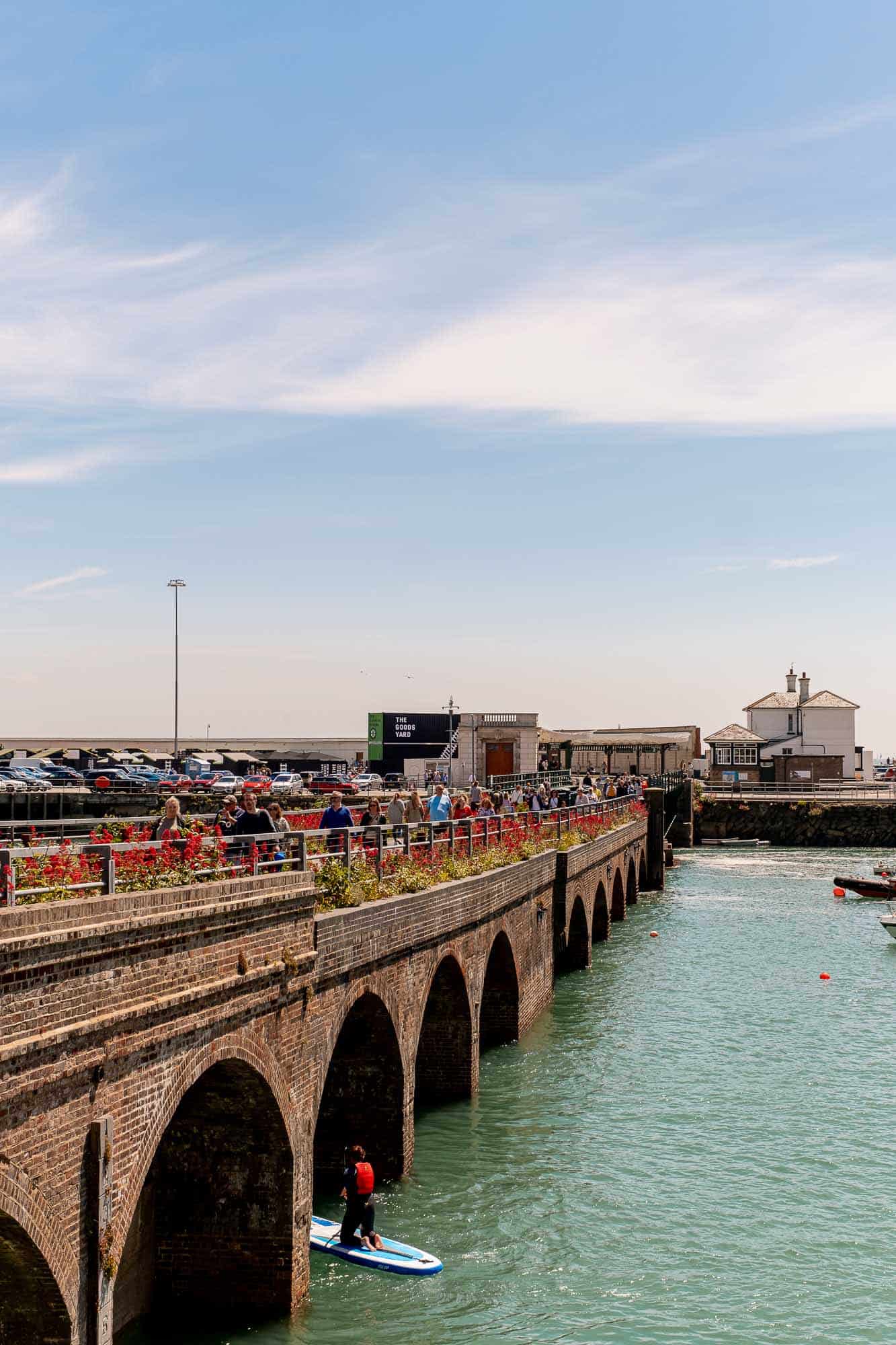
Image Quality
What really sets the Fujifilm XF 16-55mm F2.8 R LM WR apart is its excellent image quality. The optical design incorporates both extra-low dispersion and aspherical elements to reduce distortion and colour fringing, resulting in sharpness and accurate colour rendering throughout the zoom range.
- Type: Standard Zoom lens
- Best for: Travel photography
- Focal length: 16 – 55mm
- Aperture: f/2.8 – f/22
- Image stabilisation: No
- Built-in autofocus: Yes
- Weather sealing: Yes
FUJIFILM XF 10-24mm f/4 R OIS WR Lens – Best Fuji Lens For Landscape

- Excellent built quality
- Optical Image Stabilisation
- Poor Manual Focus
- Poor ring design
- More expensive compared to other options in Fujifilm’s XF lens lineup.
Check Price Here
The Fujifilm XF 10-24mm lens is a versatile zoom that can lend itself to a wide range of different subjects, particularly travel and landscape photography.
This XF10-24mm lens is weather-resistant, so you can shoot in adverse weather conditions. It also includes a more advanced Optical Image Stabilisation (OIS) system to help avoid unwanted camera blur in your images.
Design changes include an auto-position lock on the aperture ring to help prevent accidental aperture changes, and the body also weighs less at just 385g, so you can travel lightly.
Wide-angle 15-36mm equivalent focal length The XF10-24mmF4 R OIS WR offers a 35mm equivalent focal length of 15-36mm and a constant aperture of F4 regardless of where it is in the zoom range.
This Fujifilm lens has improved optical image stabilisation (OIS). A new and improved gyro sensor inside the XF10-24mmF4 creates an additional stop of stabilisation, bringing overall OIS performance to 3.5 stops.
This can be further extended to 6.5 stops when paired with the in-body image stabilisation (IBIS) in some X Series cameras.
The result is a whole new world of tripod-free opportunity, even after the sun goes down Advanced internal focusing system by utilising an advanced internal focusing system, the XF10-24mmF4 is capable of precision autofocus that is not just extremely fast but near-silent.
Weather-resistance against dust, moisture, and cold down to -10° In addition to its tough, metal external casing, the XF10-24mm F4 Fujifilm lens has been equipped with weather resistance that helps protect it from dust and moisture.
The lens can also operate in temperatures as low as -10°C, making it the ideal companion when battling the elements to get the perfect shot, from wild Arctic expanses to arid desert dunes.
As for image quality, this lens offers excellent sharpness throughout its zoom range and produces minimal distortion.
The lens handles chromatic aberration well, producing clear and vibrant images with true-to-life colours. Additionally, the aperture at f/4 allows for a nice depth of field to create a beautiful background blur (bokeh).
- Type: Wide-Angle Zoom
- Best for: Landscape photography
- Focal length: 10 – 24mm
- Aperture: f/4 – f/22
- Image stabilisation: Yes
Fujifilm XF 16-80mm f4 R OIS WR Lens – Most Versatile Lens

- Versatile Focal Length
- Lightweight and compact design
- Affordable
- Autofocus hunting in low light conditions
- Maximum aperture of f/4 not suitable for night
The Fujifilm 16-80mm lens is a great choice for anyone looking for a versatile and compact zoom lens. The Fuji XF16-80mm F4 R OIS WR lens consists of 16 elements in 12 groups, and one aspherical element is specially designed to minimise field curvature and spherical aberration.
This compact and versatile lens for any shooting situation also covers an effective focal range from 24mm to 120mm (wide angle lens to mid-telephoto ) and weighs just 15. 5 oz. (440 g).
The Fujifilm 16-80mm lens also features 6.0 stops of optical image stabilisation to shoot in a wide variety of situations. The autofocus on this lens is also quick and near-silent, making it ideal for street photography.
The Fujifilm 16-80mm lens stands out as one of the best zoom lenses in Fujifilm’s lineup thanks to its compact size, wide focal range, and impressive image stabilisation capabilities.
This lens also has weather sealing in ten places along the barrel, making it a durable and reliable option for any type of shooting situation.
Overall, the image quality from the Fujifilm 16-80mm lens is sharp and clear thanks to its use of aspherical elements and optical image stabilisation. The autofocus is also quick and quiet, making it easy to capture fast-moving subjects.
- Type: Standard Zoom
Fujifilm 18-55mm f/2.8 – 4 – Best Kit Travel Lens

- Solid build quality
- Brighter aperture than most kit lenses
- Sharp images
- Compact and lightweight
- Image Stabilisation
- Not weather sealed
- No number markings on the aperture ring
My all-around top pick for the best Fujifilm travel lens is the Fujifilm 18-55 f/2.8 . It’s a Fuji kit lens (but this is not your average kit lens) that’s compact and versatile, with a much brighter aperture than you’d usually find on a kit lens.
Weighing in at 308g, this lens is reasonably lightweight for a zoom lens. It’s compact, with an impressive build quality that feels robust. The zoom and focus rings are wonderfully smooth and heavy.
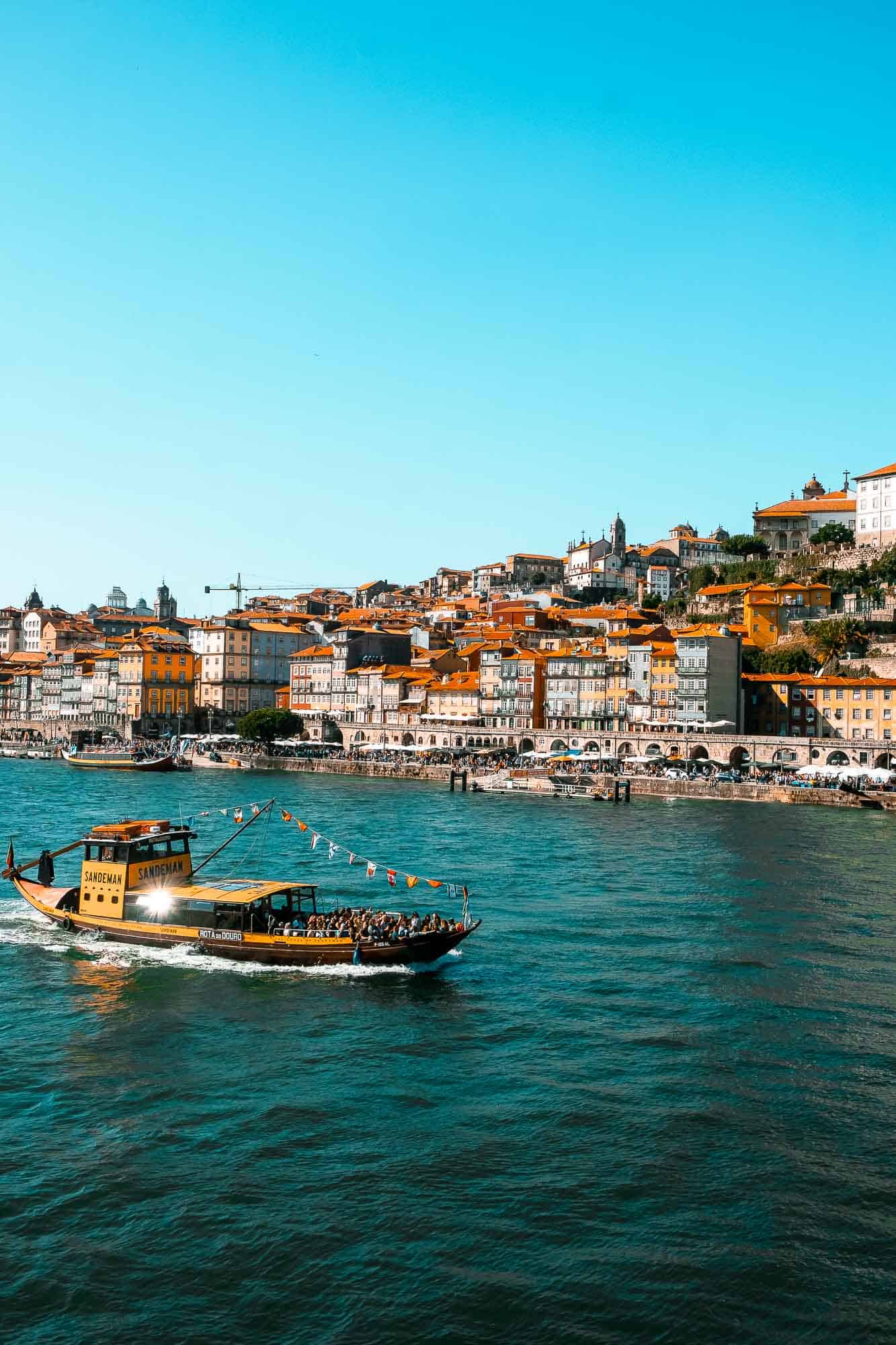
While it’s expensive for a kit lens, this is really affordable for its performance, at around £499. It’s constructed with 14 elements in 10 groups. This includes 1 extra-low dispersion element and 3 aspherical elements .
The lack of weather sealing won’t be a big issue for most casual photographers, but it’s worth considering. Not being able to shoot in strong winds and rain can limit opportunities.
This lens offers impressive sharpness for a relatively affordable zoom lens. Though sharpness can be lost a little around the edges in certain situations.
The relatively wide aperture allows for more out-of-focus backgrounds than most kit lenses. And the bokeh is pretty smooth.
As a fairly standard zoom lens, it can handle a variety of photography styles, from landscape shots to portraits. All in all, it’s a great all-rounder that offers impressive versatility and excellent performance for the price tag.
This lens is also great if you want to dabble in the video has optical image stabilisation and covers a focal length range from 27mm*1 wide-angle to 84mm*1 telephoto (equivalent focal length on full-frame).
Already made up your mind? Get this lens here
- Best for: All-round use for beginners
- Focal length: 18 – 55mm
- Weather sealing: No
Best Fuji Prime Lenses | Fujifilm X Mount Fuji Lens Review
Best Fujifilm’s prime lenses for travel are the: I review each of these in more depth in the following section.
Fujifilm 23mm f/2 WR – Best Lens For Street Photogrpahy
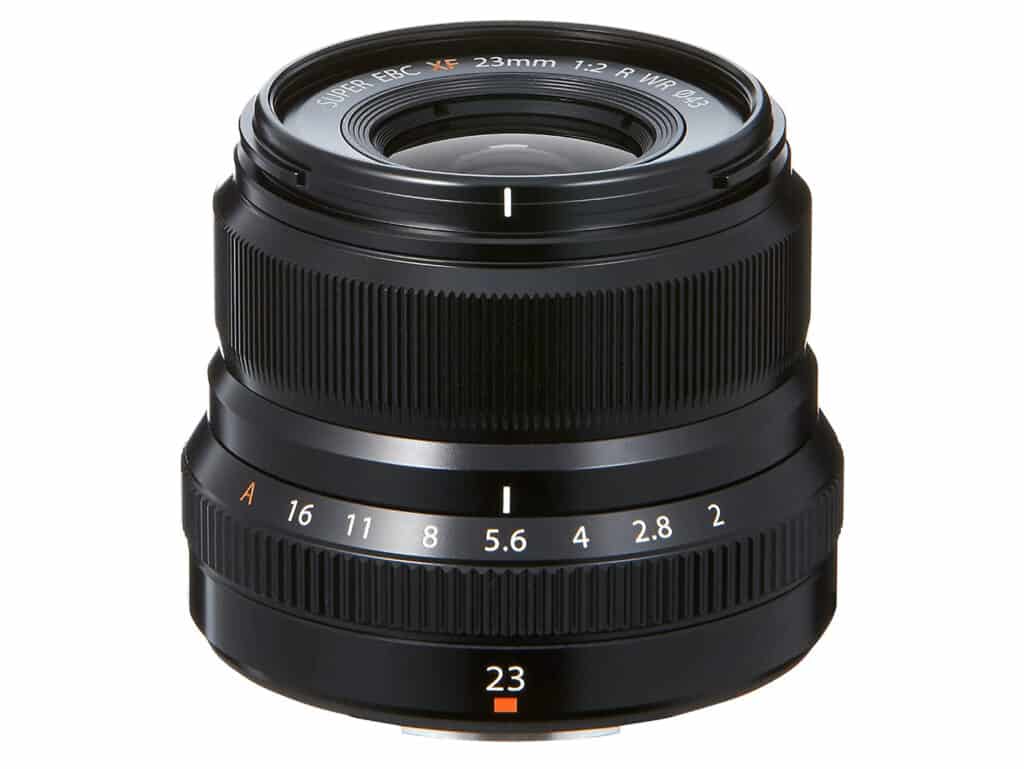
- Fairly large maximum aperture
- Quick, silent autofocus
- Weather and dust resistant
- No image stabilisation
- Not ideal for close-up shots
- Bokeh could be better
- Image sharpness fades at the corners
Fujifilm’s 23mm f/2 WR is a high-quality, relatively affordable lens that offers great value for money. It’s a Fuji wide-angle lens best suited to street and travel photography. This is one of the best Fuji prime lenses for travel.
At just 181g, this lens is relatively small and light when compared to other Fujinon lenses, which are ideal for on-the-go travel photography.
Considering this small stature, the 23mm f/2 is particularly comfortable with smaller cameras. With a build that is simple, sturdy, and fuss-free.
The included lens hood and cap are plastic rather than metal, but that’s hardly a deal-breaker.

It’s also weather and dust-resistant, unlike the other lenses on this list. So you can get good use out of it even when the sun stops shining or you head out on a more rugged adventure.
The autofocus is fast and silent, both big wins in travel photography. A downfall here, though, is that there’s no switch on the lens for manual focus, so you have to change to manual docs on your camera if you wish to do so.
This lens is available for a relatively affordable price. Which, paired with its high quality, makes it a great value buy. It costs around £429 and is more affordable than many other Fuji lenses. Just bear in mind that it doesn’t have onboard image stabilisation.
The lens configuration includes 10 elements in 6 groups, with 2 aspherical elements. You can read my in-depth review of the Fujifilm 23mm 2f lens .
The image’s sharpness is brilliant in the centre, but it fades slightly toward the corners. This may be a slight issue for some serious photographers, but it’s unlikely to affect most travellers.
You’ll find good sharpness if you play around with the f-stop (shooting between f5 – f8). And the lens offers simple, good-looking bokeh.

Considering its short focal length, this lens is best for landscape, travel and street photography. It’s good at capturing wide scenes rather than close-up subjects and full-body-person shots.
So, I wouldn’t recommend it if you enjoy taking portraits, as the wide-angle lenses tend to distort facial features.
- Type: Wide-Angle Prime
- Best for: Street photography
- Focal length: 23mm
- Aperture: f/2 – f/16
Fujifilm XF27mm F2.8 R WR lens – Best Everyday Use Lens

- Fast autofocus
- Wide F2.8 aperture
- Affordable price
- Produces sharp images with beautiful bokeh
- Focusing not super fast
- Not great close focus
The FUJINON XF27mmF2.8 R WR is a compact, ‘pancake-style’ lens. Weighing just 84g, it is designed to offer maximum portability without any loss of image quality.
Its natural field of view closely resembles what the human eye sees, making it great for everyday use.
However, it comes into its own when creating travel and documentary images or everyday use that exude the true essence of a location or area.
The 41mm equivalent focal length of the XF 27mm pancake lens closely resembles the field of view seen by the human eye, making it suitable for various subjects, such as portraits and nature photography.
This lens also offers weather resistance, so the elements can’t hold you back, and it features an aperture ring to change the settings easier.
The lens has an aperture ring to change the settings easier and weather-resistant construction.
As one of Fujifilm’s premium prime lenses, the XF 27mm offers excellent image quality in a compact design. Its versatility and portability make it a great choice for travel photographers.
This lens is weather-resistant and capable of operating in temperatures as low as 14°F (-10°C), making it the perfect companion for shooting in all conditions.
Regarding image quality, the Fujifilm XF27mm F2.8 R WR does not disappoint. The colours are vibrant and true to life, with excellent sharpness in both the centre and corners of the frame.
Its advanced optical design minimises aberrations and distortions for a high level of image quality.
This lens also produces beautiful bokeh, making it an excellent choice for portraits or close-up shots. Overall, this lens delivers professional-level results at a fraction of the cost.
- Type: Standard Prime
- Best for: Everyday use
- Focal length: 27mm
- Aperture: f/2.8
Fujifilm 35mm f/1.4

- Very wide maximum aperture
- Brilliant image quality
- Top-notch build quality
- Lightweight and compact
- Versatile focal length
- Great for low light photography
- Not weather resistant
- The aperture ring can feel a little loose
Fujifilm’s 35mm f/1.4 offers outstanding image and build quality in a compact package. And all for a very reasonable price.
It’s a perfect everyday lens, ideal for various photography styles. I think it’s one of the best travel lenses on the market.
The Fuji 35mm f/1.4 is an all-metal barrel with an exceptionally high build quality. The mount and hood are both metal as well. And the lens is light and compact, weighing only 187g.

You’ll find a focus ring and an aperture ring on the barrel, both of which are pretty smooth and precise. Although the aperture ring can sometimes feel like it doesn’t have quite enough resistance.
The autofocus is quick and highly accurate. Though it does make a bit of a ‘chattering’ sound if you listen closely.
It’s constructed with 8 elements in 6 groups, including 1 aspherical element. You can read my in-depth review of the Fujifilm 35mm f1.4 lens .
At £499, it’s a little pricier than the previous option. But the wide aperture, brilliant image quality, and greater versatility make it worth spending on.
The sharpness of this lens is hard to fault. Images are sharp at the centre, with sharpness loss in the corners at larger apertures. But it’s a particularly sharp lens on the whole.
Bokeh is smooth and gorgeous with slightly duller light sources. But it isn’t quite as pleasing if the light source is too bright.
This lens is a great all-rounder with a 35mm focal length (which translates to about 53mm on Fuji’s APS-C sensors). It’s a jack of all trades and a master of some, including street photography and portraits.
- Type: Prime lens
- Best for: General use / Street photography
- Focal length: 35mm
- Aperture: f/1.4 – f/16
Fujifilm 56mm f/1.2 – Best Lens For Portraits

- Outstanding image quality
- Sturdy build
- Stunning bokeh
- Quite expensive
- No onboard stabilisation
- Focus ring could have more tension
The Fuji XF 56mm f/1.2 is a top-quality portrait and shallow depth of field lens. With its extremely wide aperture (f/1.2), this thing can capture stunning images with creamy, out-of-focus backgrounds.
At 405g, this lens is a bit heavier and bulkier than the other lenses on this list. But it’s still by no means excessive in size and will be a comfortable travel companion.
There is a focus ring and an aperture ring with tactile clicks on the barrel. In my opinion, the aperture ring could do with a bit more resistance.
But the focus ring is very comfortable to use. It boasts a top-quality, almost entirely metal constriction and feels solid in the hand.
Just like the 35mm lens above, this model’s autofocus motor makes a bit of a whirring noise when in use. But it isn’t too loud. The lens is constructed with 11 elements in 8 groups – 1 aspherical and 2 extra-low dispersion.

It is the priciest of the bunch discussed in this post, at around £849. But you’re paying for some seriously high-quality glass.
The sharpness is exceptional in the centre and around the edges and corners. It’s even sharp when wide open. And with its ultra-fast aperture, the bokeh is breathtakingly creamy.
The autofocus system works pretty quickly and accurately, even in low-light conditions. There is a nice focus ring on the barrel; some say the lens isn’t terribly responsive in manual focus mode.
But this is not the case for me, this lens requires a lot more knowledge of photography, but it is a beauty to show.

With its extremely wide maximum aperture and 56mm focal length (About 85mm full-frame equivalent), this lens is ideal for portrait photography. But it works brilliantly for any shots where you want the subject to stand out against the background.
- Best for: Portraits / shallow depth of field (I also use this for travel)
- Focal length: 56mm
- Aperture: f/1.2 – f/16
Fujifilm XF 16mm f1.4 R WR Lens – Best Lens For Architecture

- Wide field of view
- Fast F1.4 aperture
- Weather-resistant construction
- Sharp image quality with Nano GI coating
- Fast focusing
- Expensive compared to other lenses
- Some chromatic aberration at wide apertures
- Some vignetting at wide apertures
The Fujifilm 16mm lens is a wide-angle prime lens that is weather-resistant and offers a fast maximum aperture of F1.4.
This lens is perfect for capturing dramatic landscapes and beautiful architecture, while it’s Nano GI coating ensures that images are sharp with improved definition.
The focusing ring on the XF16mmF1.4 R WR slides backward and forwards to enable users to quickly switch between manual and autofocus, and the lens also features a total of nine seals that prevent water and dust from getting into the body.
One of the standout features of the Fujifilm 16mm lens is its wide field of view, allowing for more versatility in capturing a scene.
The fast F1.4 aperture also allows for blurrier backgrounds and the ability to shoot in low-lighting conditions without a camera shake. Additionally, this lens has a great close-up capability, with a minimum focus distance of 15cm.
The weather-resistant design allows photographers to continue shooting even in damp or sub-zero conditions, making it one of Fujifilm’s best prime lenses for travel photography.
The Fujifilm 16mm lens is a wide-angle lens that offers excellent image quality and features weather-resistant construction for shooting in difficult conditions.
This lens is perfect for capturing dramatic landscapes and beautiful architecture, while its fast maximum aperture of F1.4 allows for blurrier backgrounds and the ability to shoot in low lighting conditions without a camera shake.
What to Look for in a Travel Lens
Before we get into the recommendations and reviews, I’d like to offer a quick breakdown of what you should look for in the best Fuji travel lenses. The key elements are portability, versatility, quality, and price.
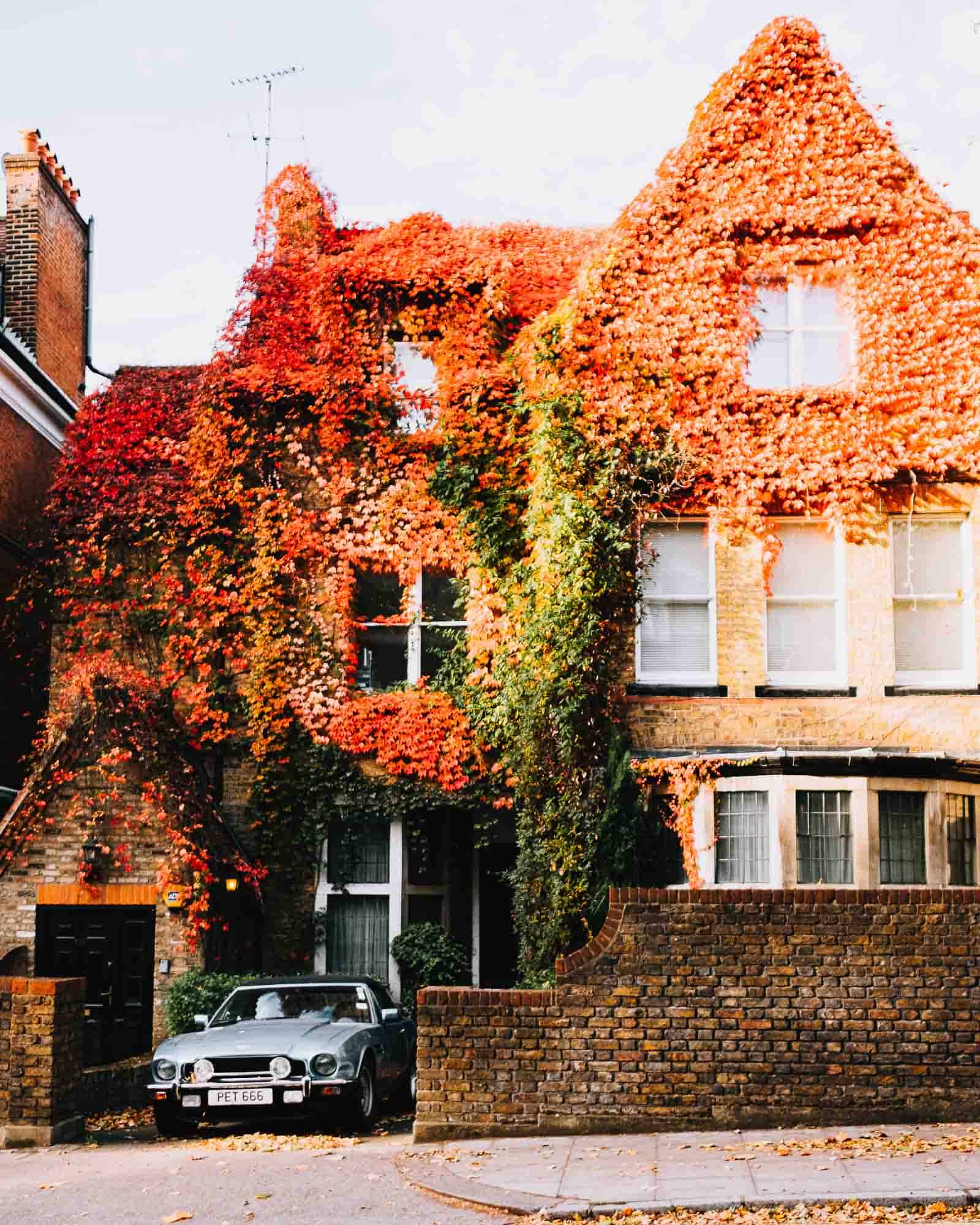
While you won’t be able to find a lens that ticks all of these boxes, they’re all important considerations, and you’ll be able to decide which are most important for your purposes. So let’s get into it.
Portability
This one’s a bit of a no-brainer. You don’t want to be lugging around bulky gear cases or enormous telephoto lenses when you’re on the move.
Doing so will weigh you down and can distract you from your travel experiences. So, it’s best to pack light when it comes to camera travel gear .
Having one good versatile lens, or a couple more specialised lenses, is ideal. I take a less-is-more approach, and you’ll thank me late.
Versatility
Travel photography often means being thrown into a variety of situations and being able to capture moments on the fly as they arise.
So you’ll want to opt for lenses that are versatile enough to perform well in this diverse range of situations.
Due to their variable focal length, zoom lenses are great for versatility. But an excellent prime lens can make the ultimate addition to your travel kit, particularly if you already have a zoom kit lens.
Obviously, the quality of the images you take will be an essential factor. And a lens is often one of the most important elements in dictating image quality.
One of the key things to look out for is the aperture (this is what controls the amount of light passing through the lens).
Aperture is signified by the ‘f’ number on a lens – the lower the number, the larger the maximum aperture. Larger aperture lenses allow more light in, meaning better low-light performance.
They also offer great flexibility and are capable of taking more professional-looking images (with out-of-focus backgrounds and foregrounds and stunning bokeh ).
Of course, there are other elements that dictate quality, and I’ll get into each of them in the reviews.
All I can say about the price is that you should spend what you’re comfortable spending and focus on getting great value for money. The lenses I’ve reviewed here all offer a good bang for your buck.
Now I’ll briefly discuss the different lens types and why each may be suitable for your travel needs. The two main categories are prime lenses and zoom lenses. Here’s a detailed breakdown of each one.
Why Choose a Fuji Zoom Lens for Travel
Zoom lenses have a variable focal length which, as the name suggests, allows you to zoom. A zoom ring on the lens is used to adjust the focal length, which changes the field of view. So you can switch between wide-angle and tighter shots.
All this means that zoom lenses are more versatile than their prime cousins. They can be used for a wider range of purposes and capture subjects at various distances from the camera.

Professionals tend to favour prime lenses over zoom lenses, but that’s not to say that zoom lenses are necessary for inferior quality.
In fact, some incredibly impressive zoom lenses on the market rival even the finest prime lenses. They’ve been gaining popularity as their quality standards improve over time, and their convenience continues to impress.
So is a zoom lens the right travel photography lens for you? Well, if you like to pack light and want versatility in your photography, then a zoom lens will treat you well.
And if you’re not a professional photographer, the quality is very unlikely to be an issue, even with a relatively affordable zoom lens.
Zoom lenses tend to be the more practical option for most travellers. Their diverse functionality, convenience, and ever-improving quality make them ideal for most purposes.
But prime lenses certainly deserve consideration for their exceptional quality. I’ll let you decide for yourself.
Why Choose a prime lens for Travel
Prime lenses are lenses with a single, fixed focal length. Meaning they can’t zoom in or out. But they’ve been the firm favourite of professional photographers since the beginning.
The main draw of prime lenses is the quality. While zoom lenses have been improving in recent years, prime lenses are considered for their high quality and ability to produce images of a professional standard.
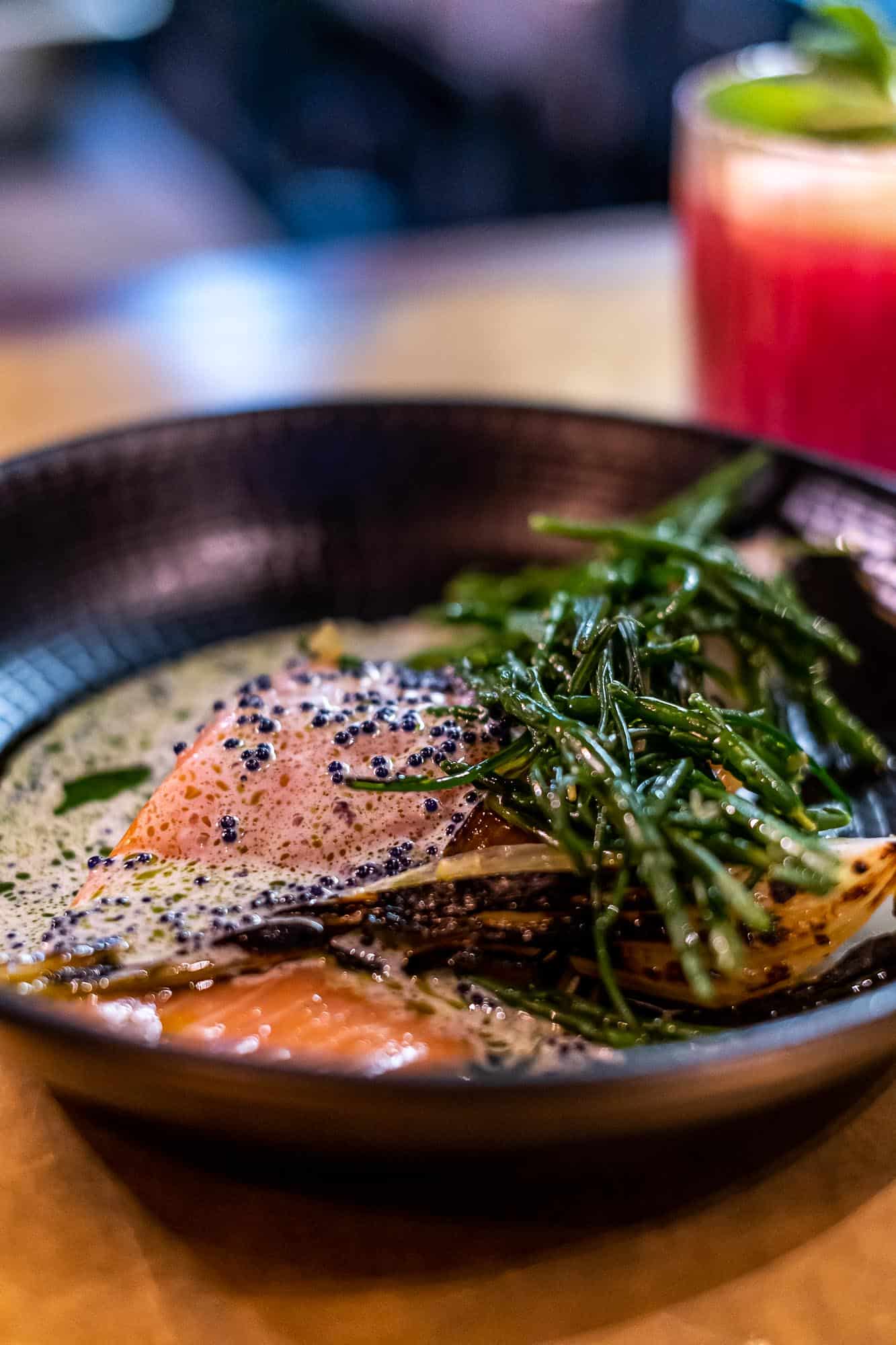
Another attractive feature of prime lenses is their relatively affordable price. It sounds counter-intuitive, I know.
But prime lenses have fewer mechanical structures and moving parts, so the cost can be kept relatively low. They also tend to be lighter and smaller than most zoom lenses for the same reason.
However, seeing as they are not versatile in terms of focal length, most photographers will have multiple prime lenses.
Each with a different focal length and serves a different function. This can mean carrying around a case full of prime lenses rather than a single zoom lens. And it means a higher cost and more weight for comparable versatility.
The last advantage of prime lenses is that they’re able to offer much wider apertures than most zoom lenses.
So are prime lenses right for travel? It’s a tough question. But at the end of the day, it depends on the type of photography you’ll be doing and how light you want to pack.
If you’re sticking to one style of photography, such as portraiture or street photography, you may only need one focal length to play with.
In this case, one quality prime lens could do the job well. But if you want to dabble in a diverse range of photography styles, carrying a case of prime lenses might be inconvenient and bulky.
You’re likely better off opting for a single, high-quality zoom lens that can be used for various styles.
If you don’t mind carrying multiple lenses and have the budget for them, having a couple of prime lenses will serve you well.
Fujifilm as a Brand
Now for a quick rundown of Fujifilm as a brand and why their cameras are great for travel. Seeing as you’re reading this post, it’s likely that you already have a Fuji camera. But for those still considering buying one, this section may come in handy.
Fujifilm has been around since 1934 but has upped their game in recent years with an influx of high-end, high-quality mirrorless cameras taking on the larger full-frame cameras.
While they were initially less performance-focused and more concerned with the design, Fujifilm cameras and lenses now rival the likes of Nikon, Sony, and Canon. They offer impressively high quality and are often on the front lines of innovation.
👉 READ MY GUIDE ON THE BEST FUJI CAMERA FOR TRAVEL
Fujifilm is also one of the strongest brands for mirrorless cameras . In fact, they’ve dropped their SLR range entirely in favour of focusing all their attention on the highest quality mirrorless options and fangirls worldwide like me rejoice.
Mirrorless cameras do away with the bulky mirror mechanisms used in DSLRs without forgoing image quality. This means that they’re lighter and more compact than DSLR cameras , and therefore better for travelling.
Best Fuji Lens for Travel: FAQs
When people ask me about the Best lens for Fujifilm when it comes to travel, here are the answers to some of the most common questions I get!
Do you take a telephoto lens when traveling?
When travelling, many photographers opt to bring along a telephoto lens. These lenses allow you to capture close-up shots of your subject without getting too close, which can be ideal in situations where you don’t want to disturb your subject or be obtrusive.
This is especially useful when photographing wildlife or other shy subjects. Telephoto lenses also compress the foreground and background of your shot, creating a more dramatic effect in your photos.
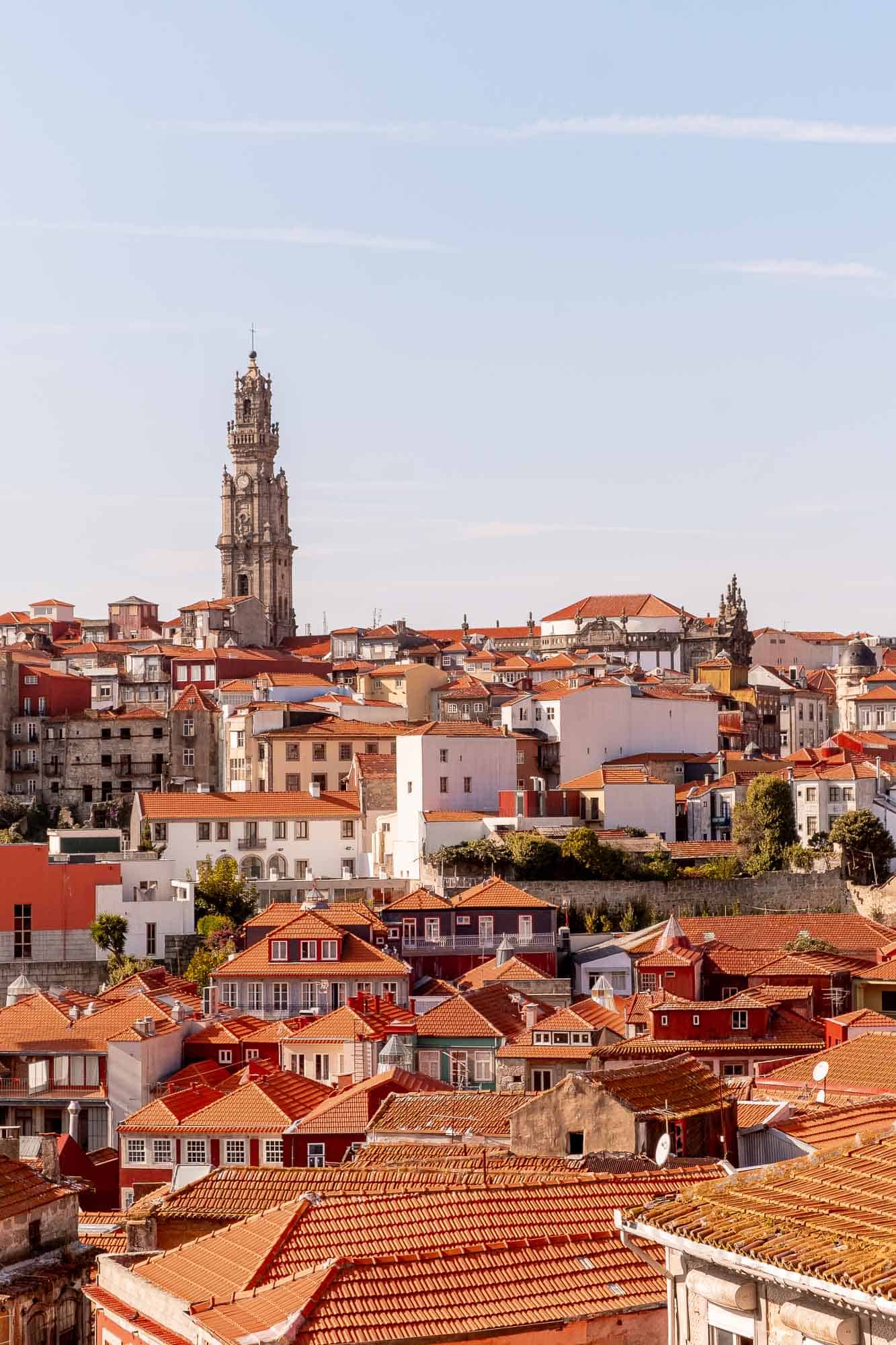
And, of course, they allow you to capture more of the scene in front of you. However, telephoto lenses can be bulky and heavy, so it’s important to consider whether the added weight is worth it for the types of photos you plan to take on your trip.
Which Fuji lens is the sharpest?
When it comes to sharpness, there is no definitive answer as to which Fuji lens is the sharpest. This is because sharpness is relative, and what one photographer considers sharp may not be as sharp as another photographer’s standards.
That said, a few lenses are generally considered to be among the sharpest available for Fuji cameras. These include the Fujinon XF 56mm f/1.2 R, Fujinon XF 16mm f/1.4 R WR, and the Fujinon XF 16-55mm f/2.8 R LM WR. All three of these lenses are designed for high-resolution cameras and offer excellent optics and construction.
As a result, they are all capable of producing exceptionally sharp images. So, if you’re looking for a lens that can give you the best possible results in terms of sharpness, then any of these three would be a great option.
Best Fuji lens for family travel?
When travelling with family, you want a Fuji lens that can capture both wide landscapes and intimate moments. The Fujinon XF16-55mm f/2.8 R LM WR OIS is a great all-purpose lens that offers a versatile zoom range, is weather-resistant, and has image stabilisation for clear photos and videos. Making it ideal for capturing both sweeping landscapes and intimate close-ups.
If you’re looking for something with a little more reach, the Fujinon XF55-200mm f/3.5-4.8 R LM OIS is an excellent option for capturing distant subjects without sacrificing quality.
Whichever Fuji lens you choose, you’ll surely capture beautiful memories of your family travels.
Fujifilm X-T4 best lenses for video
If you’re a Fujifilm photographer looking to get the best lenses for video, the Fujifilm X-T4 is a great option. Its flip-out screen and 4K 60p recording make it an excellent choice for anyone looking to get the most out of their video footage.
But what are the best lenses for Fujifilm X-T4? Here are our top picks of the best Fuji lenses:
- Fujifilm XF 16-55mm f/2.8 R LM WR Lens : This all-purpose zoom lens is great for everything from landscapes to portraits. With a fast maximum aperture of f/2.8, it’s perfect for low-light shooting and video recording.
- Fujifilm XF 50-140mm f/2.8 R LM OIS WR Lens : This telephoto zoom lens is perfect for capturing detailed close-ups and long-distance shots. With optical image stabilisation and a fast maximum aperture of f/2.8, it’s ideal for video recording and low-light shooting.
- F ujifilm XF 18-55mm f/2.8-4 R LM OIS Lens : This standard zoom is a great all-purpose option for photographers and videographers alike. With optical image stabilisation and a fast maximum aperture of f/2.8, it’s arguably the best Fuji lens for low light shooting or capturing smooth video footage.
- Fujifilm XF 23mm f/1.4 R Lens : This fast prime lens is perfect for low-light shooting and shallow depth-of-field effects. With a maximum aperture of f/1.4, it’s one of the fastest wide-angle lenses available for the Fujifilm X system.
- Fujifilm XF 35mm f/1.4 R Lens : Another fast prime lens, the Fujifilm XF 35mm f/1.4 R, is perfect for general-purpose photography and videography alike. With a maximum aperture of f/1.4, it can capture stunning images and videos in low light or with shallower depth-of-field effects than slower lenses can achieve. These are some of the best Fuji camera lenses for video.
Best Fujifilm Lens for Travel: Wrapping Up
So, there you have it – the best Fujifilm lenses for travel. I made sure to review a range of options here that will cover most travel photographers’ needs.
I’m sure one (or more) of these fantastic lenses will be right for you, whether you’re looking for the best budget Fujifilm lenses, the best lenses for Fuji XT2, or just the overall best travel photography lens offered by Fujifilm.
I have all 9 lenses on this list (as I said, I’m a Fuji fangirl), and I’ve even reviewed them on my Youtube channel.
All of these Fuji lenses for travel are a great step up from most standard kit lenses, and they’re sure to help you push your photography to the next level. So, grab your new Fuji lens, get out there, and go take some incredible pictures.
Read More Fuji Lenses Review
📸 fuji 23mm vs 35mm lens.
Fuji 23mm vs. 35mm Lens Showdown : Which One Deserves a Spot in Your Camera Bag? We delve into the strengths of each lens, helping you decide the perfect match for your photography needs!
📸 Best Fuji Prime Lens For Travel
Unlocking the Magic of Fuji’s Prime Lenses : Your Guide to the Best Picks and How They Transform Your Photography. Discover the ideal Fuji prime lens that aligns with your style and elevates your images.
📸 Best Fujifilm Lens for Street Photography
Mastering the Urban Canvas: The Best Fuji Lens for Street Photography and Why It’s a Must-Have. Dive into our top picks that can capture the soul of the city with every shot.
📸 9 Best Fuji Lenses for Portraits
The Best Fuji Lenses for Stunning Portraits and Why You Need One. Explore our top picks that can elevate your portrait photography to new heights.
📸 Fuji 16-55mm vs 18-55mm Lens
The Best Fuji Fuji Zoom Lens For Travel Showdown: 16-55mm vs. 18-55mm – Which One Fits Your Photography Journey? We analyze the strengths of each lens, helping you make an informed decision for your photography ventures.

Sharing is caring!
- Pinterest 7
One Comment
- Pingback: Best of Spain Tourism: The Most Visited Famous Monuments in Spain | Traveling in Spain
Leave a Reply Cancel reply
Your email address will not be published. Required fields are marked *
Save my name, email, and website in this browser for the next time I comment.
Sharing is Caring
Help spread the word. You're awesome for doing it!
The Best Fujifilm X-Series Kits for Travel Photography
A Post By: Matt Murray

Travel has always been my first love. In 1994 I bought my first camera – a Pentax Zoom 90 WR point and shoot – because I was going to Europe for a two-year working holiday. The only way to share photos with family back then was to have the film developed and post the prints home!
While photography (and technology) has changed remarkably in the last 25 years, what you should look for in a camera for travel photography is much the same: small, light, capable of great results and preferably weather resistant.

I’ve used all sorts of camera brands over the years. However, for me, Fujifilm X-Series cameras and lenses are the perfect travel companions. Whether it’s a trip to the Australian outback, visiting remote Buddhist temples in the Javanese jungle, photographing puffins in the Faroe Islands or capturing traffic trails in Taiwan, my X-Series cameras have always produced stunning results. Here are my recommended Fujifilm X-Series kits for your next big adventure.
- Best minimalist kit
Camera: Fujifilm X100F Lens: Fixed F2 Fujinon lens Weight: 469 grams

The best minimalist kit choice was easily the stunning Fujifilm X100F . This is the best compact digital camera ever made. Yes, it really is that good!
Many photographers – including diehard users of other brands – use this as their “take everywhere” shooter. The X100F is small and quiet, and the fast f/2 Fujinon lens creates beautiful images. It may be small, but it boasts an impressive array of features including a leaf shutter and built-in neutral density filter.
Like all the cameras I feature in this article, the X100F can shoot RAW alongside Fujifilm’s array of stunning JPG film simulations, that replicate the look of classic films such as Provia and Velvia. Fujifilm cameras produce the best JPGs I’ve seen straight out of the camera.

This choice is a little unusual as it has a fixed lens. That’s right. You can’t take it off and swap it for another lens. If the 23mm focal length (35mm in full-frame terms) isn’t your preferred choice, the system also has wide-angle conversion and telephoto converter lenses. However, these do add extra weight to your kit. One of the few downsides to the X100F is that it’s not weather resistant. But, at least it’s small enough to fit in your pocket during a downpour.
- One body plus one lens kit
Camera body: X-T30 Lens: XF 18-55mm F2.8-4 R LM OIS lens Approximate weight: 693 grams
If you only have space to take one body and one lens on a trip, I would recommend the brand new Fujifilm X-T30 with the XF 18-55mm F/2.8-4 R LM OIS lens . I’ve been using this line of cameras since buying the X-T10 as a second body back up to my X-T1, and I’ve also used the X-T20. The X-T cameras with a “0” after them are lighter, cheaper, non-weather resistant versions of the flagship models, but usually feature much of the same technology. For example, the X-T30 has the same 26.1MP X-Trans 4 CMOS sensor as the X-T3.
Alternatives for the camera body would be the X-T20 and the X-E3 . The X-T20 gives you a screen that tilts up and down for overhead and low to the ground shots. Whereas, the X-E3 is the more minimalist choice, and features a joystick that controls where the focus point is in the frame. The X-T30 and the X-T3 have both of these features.
My choice of lens for this kit is the XF 18-55mm F/2.8-4 R LM OIS. Not only is it one of my favorite Fujifilm lenses, but it’s also the lens that I’ve used the most over the last three years.
Often sold with camera bodies, many newcomers to the X-Series remark that the XF 18-55mm F2.8-4 R LM OIS lens is “surprisingly good for a kit lens.” In no way is this lens like the subpar beginner kit lenses produced by other manufacturers. The XF 18-55mm F/2.8-4 R LM OIS is a stunningly sharp lens in its own right and has produced some of my favorite images ever.
It may not be weather resistant, but it does feature OIS (optical image stabilization) to ensure your shots are as sharp as possible at lower shutter speeds. It’s a variable aperture zoom lens, meaning that the maximum aperture changes as you zoom through the range. However, you can still shoot at f/2.8 at the 18mm focal length, and f/4 at the 55mm end. It’s a top lens for landscape, cityscape, and portraits.

- Best kit under 1kg
Camera body: X-T30 Lenses: XF 18-55mm F/2.8-4 R LM OIS + XF 35mm f/1.4 R Approximate weight: 880 grams
My picks for the best kit weighing under 1kg include the same choices as the ‘One body plus one lens’ kit above, with the addition of the XF 35mm f/1.4 R . The first time I used this lens, I was blown away by its sharpness and stunning bokeh. It’s a top lens for portraits, still life subjects and even street shooting.

It did have a reputation of being slow to focus, but with Fujifilm’s ongoing firmware updates to both lenses and camera bodies, this has greatly improved. I wouldn’t hesitate to use it in any situation. This lens has a fast maximum aperture of f/1.4 that enables you to shoot images handheld at night without raising the ISO too high or lowering the shutter speed too low.

- One zoom, two fast primes kit
Camera bodies: X-T30 Lenses: XF 18-55mm F2.8-4 R LM OIS + XF 35 1.4 R + XF 60mm f2.4 R Macro Approximate weight: 1.095kg
For a lightweight travel kit weighing just over 1kg and featuring two fast prime lenses, add the XF 60mm f/2.4 R Macro to the kit above. This is another option often overlooked by newer lenses on the block, but it offers superb image quality for portraits and macro shots.
Although it’s not a true macro lens (it offers 1:2 magnification rather than the standard 1:1 magnification for a true macro lens), it is an incredibly light option for close up shots. It weighs less than a third of the weight of Fujifilm’s XF 80mm F/2.8 R LM OIS WR Macro lens.

- Best weather resistant kit
Camera bodies: X-T3 Lenses: XF 16mm F1.4 R WR, 23f2, XF 50-140mmF2.8 R LM OIS WR. Approximate weight: 2.6 kg check

The best weather resistant kit features Fujifilm’s newest X-Series flagship camera. The X-T3 has won high praise from users and critics alike since its release in mid-2018. It is an impressive performer, having the fastest autofocus in the X-Series lineup and a continuous shooting rate of up to 20 frames per second. I’ve really enjoyed using this camera alongside my X-T2, which is still an excellent camera.
The newcomer to this kit is the XF 16 f/1.4 WR lens – often praised as the best lens in the X-Series lineup. Weather resistant, the lens is optically stunning, and a solid performer for landscape, cityscape, and low light shots. With a close focusing distance of 15cm, the XF 16 f1.4 WR lens is highly versatile. I’ve loved using it for food photography.

- Best travel kit with zoom lenses
Camera bodies: X-T3 and X-T30 Lenses: XF 18-55mm F/2.8-4 R LM OIS and XF 50-140mm F/2.8 R LM OIS WR. Weight: 1.8kg

This kit gives you the best of both worlds: the light X-T30 with the XF 18-55mm F/2.8-4 R LM OIS lens, and a weather resistant combo of the X-T3 with the stunning XF 50-140mm F/2.8 R LM OIS WR lens.
Weighing in at 995 grams, you might actually question why I would choose this lens as part of a travel kit? I’ve even been laughed at when I’ve suggested this lens for travel. Although it’s heavy, this lens is a must-have in my travel photography kit.
Like an equivalent focal range 70-200mm, the lens has a constant maximum aperture of f/2.8, meaning that you can shoot with a shallow depth of field throughout the zoom range. This is particularly helpful during low light situations, or to achieve shallow depth of field at any time.
This XF 50-140mm F/2.8 R LM OIS WR lens also features OIS (optical image stabilization) and has a pleasing bokeh. I’ve used this lens for landscape, cityscape, and portraits. If I could only pick one lens for travel, I’d have to flip a coin to choose between the two amazing zooms in this kit.

If you have different weight or budget considerations, you could substitute the excellent XF 55-200mm F/3.5-4.8 R LM OIS lens in this kit. I’ve never regretted taking this lens along with me on trips, but if you plan on shooting in low light at the far range of the zoom, you will be shooting at a maximum aperture of f/4.8, which may slow down shutter speeds. Thankfully, this is another lens with OIS (optical image stabilization).

- My favorite kit
Camera bodies: X-T3 and X-T2 Lenses: XF 16mm F/1.4 R WR + XF 18-55mm F/2.8-4 R LM OIS + XF 35mm f/1.4 R + XF 50-140mm F/2.8 R LM OIS WR Approximate weight: 2.9 kg

This is my favorite kit. It may be the heaviest listed in this list, but this is what I would typically take on my travel adventures. It pairs two weather resistant camera bodies with my two favorite zooms and two favorite primes. This kit has a reach from 16-140mm (24-210 in full-frame terms) and covers many shooting situations. The XF 50-140mm F/2.8 R LM OIS WR lens may not be the longest in the X-Series lineup, but it’s still capable of capturing stunning wildlife images.

- X-Series options I don’t recommend for travel kits
In 2018, Fujifilm released the entry-level X-T100 . Although this attractive looking camera looks very much like the rest of the X-Series line-up, its autofocus can’t match the cameras I’ve featured above.
- 18-135mm lens
The XF18-135mm lens is often on the list of recommended lenses for Fujifilm travel photography. Having owned and used one, it doesn’t make my list. For a slower, all-in-one travel zoom, I don’t think it has enough reach.
The 27mm F/2.8 pancake lens is sharp, and you can often buy them at a bargain price. It’s a firm favorite amongst many Fujifilm photographers, but it doesn’t make my list as it’s the only lens in the lineup not to have a ring on the lens to change aperture.

The Fujifilm X-Series range is perfect for travel photographers for so many reasons.
With an impressive lineup of prime and zoom lenses for all budgets, the X-Series has you covered for a wide range of situations including low light photography and adverse weather conditions. The camera bodies feature retro charm and excellent ergonomics, and no other system can match the beauty of Fujifilm’s straight out of camera JPGs.
Whether it’s a day trip near home or the trip of a lifetime, Fujifilm X-Series is my number one recommendation for travel photography.
Do you use Fujifilm Cameras for your travel photography? Let us know what you use in the comments below.
Table of contents
Travel photography.
- 8 Ideas of What To Do With Your Vacation Photos
- What Skills do You Need to be a Travel Photographer?
- How to Capture the Essence of a Place – Travel Photography Tips
- 7 Tips to Make Travel Photography Interesting Again
- Avoid These 5 Major Mistakes Made By Travel Photographers
- Travel Photography – Do You Ask Permission Before, After Or Not At All?
- Travel Photographers Workflow – At Home and on the Road
- The Photo Critique: Travel Photo Edition
- 6 Reasons Why Your Travel Photos Don’t Look Like the Ones in Magazines
- The Fine Line Between Travel Photography and Having a family Vacation
- 10 Ways to Improve your Vacation Photos
- What is Your Biggest Travel Photography Challenge?
- 7 Travel Photography Hacks to Get You Going Places
- How to Use a Travel Photography Shot List to Come Home with Better Photos
- Why You Need To Be A Guerrilla Travel Photographer – And How To Become One
- How to Get the Most Out of a Travel Photography Location
- Travel Photography, Backpacking and Packing Light
- 6 of the Best Smartphone Apps for Travel and Landscape Photography
- How To Keep Camera Gear Safe While Traveling
- 5 Ways to Find Great Locations for Travel Photography
- 15 Tips for Protecting Your Images While Traveling
- Safety Tips for Travel Photographers (Particularly Women)
- Off Camera Flash for Your Travel Photography
- How to Use Natural Light in Travel Photography
- Photo Composition Tips from Bob Holmes – Composition in Travel Photos
- The Importance of People in your Travel Photos
- Create More Unique Travel Photos by Adding a Model
- 5 Lessons Learned Switching from DSLR to Mirrorless for Travel Photography
- How To Keep Your Batteries Charged While Traveling – Remote Location Edition
- 5 Tips For Travel With Only One Lens
- 5 Lessons Learned While Using a Kit Lens for Travel Photography
- 7 Tips for Using a Tripod in Landscape and Travel Photography
- The First 10 Things You Need to Buy After Your Camera for Travel Photography
- Tiniest Interchangable Lens Micro Four Thirds Cameras for Travel with Amazing Quality
- The Only Three Lenses You Need for Travel Photography
- Must Have Gear for Travel Photography Newbies
- Why Olympus Mirrorless Cameras are Top Notch for Travel Photography
- The Best Travel Photography Lenses: Our Top 12 Picks
- 5 Camera Bags That Every Travel Photographer Needs At Some Point
- A Travel Tripod that can Also Act as a Light Stand
- The iPad as a Photographer’s Travel Helper [a Review]
- 7 Non-Photography Items Which No Travel Photographer Should Leave Home Without
- 7 Reasons Why a Tripod is a Travel Photographer’s Best Friend
- Travel Photography Equipment – What To Pack?
- 10 Ways to Improve Your Travel Photography Portraits
- How to Plan and Take Killer Sunset Photos on Your Next Vacation
- Tips for Photographing Local Parks
- How to Find the Best Kinds of People to Photograph While Traveling
- 4 Ways To Make Better Street Portraits While Traveling
- How to Photograph People When Traveling
- How To Take More Creative Environmental Travel Portraits
- Photographing Signs – Travel Photography Tip
- Tips for Creating Better Documentary Travel Photos
- 6 Tips for How to be a Culturally Sensitive Travel Photographer
- Travel Photography Subjects: Old People
- How to Put the Fine Art into Travel Photography
- Travel Photography without the Travel – Going Local
- How to Tell Better Visual Stories with Travel Photography
- Create a Theme to Step Up Your Travel Photography
- Travel Photography ~ Think Outside The Postcard When Photographing Famous Landmarks
- Photographing Festivals and Events – Tips for Travel Photographers
- Video: Travel Photography Tips – Shoot with a Purpose
- 7 Reasons Why You Should Art Direct Your Travel Photography
- Buy Less Gear: Travel and Experience More
- Editorial Travel Photography – Telling the Story of a Location
- Travel Photography Subjects: Religion
- Travel Photography Subjects: Views
- Travel Photography Tips – Photographing the Coast
- Taking Photos in Busy Tourist Destinations with no People in the Shot
- How to Backup and Manage Your Photos When Traveling Without a Computer
- Tips for Creating a Killer Vacation Photo Book
- Photo Editing Workflow for Travel Photography
- How to Build a Travel Photography Portfolio
- How to Become a Professional Travel Photographer – Two Paths
- 11 Tips for Shooting Travel Stock Photography to Make Money
- How to Sell a Travel Story to a Magazine and Help Fund Your Travels
- 7 Realities That Hit Once You Become a Professional Travel Photographer
- Is a Career in Travel Photography Right for You?
- Travel Inspiration: Bali
- Canadian Travelogue – Introduction
- Travel Photography Inspiration Project: South Africa
- Travel Photography Inspiration Project: Thailand
- Canadian Travelogue – Newfoundland – Gros Morne National Park
- Travel Photography Inspiration Project: India
- Travel Photography Inspiration Project: Japan
- Travel Photography Inspiration Project: Kenya
- Travel Photography Inspiration Project: Morocco
- Travel Photography Inspiration Project: Vietnam
- An Interview With World Traveler Gary Arndt
- Interview: Oded Wagenstein – Author of Snapn Travel Guide and dPS Writer

Read more from our Cameras & Equipment category
Matt Murray is a travel, portrait and stock photographer from Brisbane, Australia. Matt publishes Fujifilm X-series body reviews, lens reviews and photo galleries on his website Matt Loves Fuji . Matt also hosts an analogue photography podcast Matt Loves Cameras featuring reviews of classic film and instant cameras.

- Guaranteed for 2 full months
- Pay by PayPal or Credit Card
- Instant Digital Download

- All our best articles for the week
- Fun photographic challenges
- Special offers and discounts


The Best Fujifilm lenses for traveling in 2024
Choosing the right lens for your Fujifilm camera is crucial for travel photographers looking to capture their journeys in stunning detail. Fujifilm cameras offer a variety of lens mounts, each with its own range of compatible lenses. In this article, we’ll explore the best Fujifilm lenses for traveling, no matter what type of travel photography you’re interested in.
With that in mind, let’s take a closer look at the best Fujifilm lenses for traveling. We’ll cover a range of lenses suitable for different types of travel photography, including wide-angle lenses for landscapes and architecture, telephoto lenses for wildlife and candid shots, and more. Whether you want to travel light or bring a comprehensive lens kit, you will find a Fujifilm lens that suits your needs.
Fujifilm’s Lens mounts
Fujifilm lens mounts allow you to connect a lens to a Fujifilm camera body and communicate between them. The lens mount controls various lens functions, such as aperture, focus, and image stabilization.
Fujifilm has developed multiple lens mounts to accommodate different camera models and formats. The two primary mounts are the X-mount and G-mount, which are used in the mirrorless cameras of the X-Series and GFX-Series, respectively.
Each Fujifilm lens mount has unique specifications and designs that determine the type of lenses compatible with it. For instance, the X-mount has a flange focal distance of 17.7mm and a diameter of 44mm, while the G-mount has a flange focal distance of 26.7mm and a diameter of 65mm.
Fujifilm X-S10 and Fujifilm X-T30 are both examples of cameras that use the X-mount in the APS-C format. The X-mount’s shorter flange focal distance in these cameras enables the design of smaller and lighter lenses, making them more portable and convenient for photographers on the go. In comparison, the G-mount is used in medium-format mirrorless cameras and allows for larger image sensors and lenses, making it a suitable choice for photographers who prioritize image quality over portability.
The GF-mount is a variant of the G-mount used for GFX-Series cameras. Based on the X-mount, the Cine Mount is used for cinema lenses and has additional contacts for electronic control of focus and aperture.
Fujifilm lenses designed for a specific mount are compatible with all cameras that use that mount. However, lenses designed for the GFX-Series may not cover the entire sensor of X-Series cameras because of the difference in sensor sizes.
What is an APS-C format mirrorless camera?
APS-C format mirrorless cameras are a type of digital camera that uses a specific size of image sensor called the APS-C sensor. The APS-C sensor is smaller than a full-frame sensor but larger than a micro four-thirds sensor. It measures approximately 23.6 x 15.6 mm and has a crop factor of 1.5x to 1.6x, depending on the manufacturer.
APS-C format mirrorless cameras are popular among enthusiasts and professionals who want high-quality images without the bulk and weight of a full-frame camera. They are widely used for various types of photography, including portrait, landscape, street, and travel photography, as well as videography.

Lens filters
Lens filters are accessories that are attached to the front of a camera lens to modify the way that light enters the lens and affects the image captured by the camera. They come in various shapes, sizes, and types and can serve various purposes depending on the photographer’s needs.
Lens filters come in different types, such as:
- UV Filter : A UV filter blocks ultraviolet light from entering the lens, which can help reduce haze and improve clarity in outdoor photos. It can also serve as a protective layer for the lens, shielding it from scratches and damage.
- Polarizing Filter : A polarizing filter reduces reflections and glares from shiny surfaces, such as water or glass, and can also enhance color saturation and contrast in landscape photos.
- Neutral Density (ND) Filter : An ND filter reduces the amount of light entering the lens, allowing for a longer exposure and slower shutter speeds. This can be useful in bright daylight conditions to achieve a desired level of blur in motion photography or when shooting video to maintain a cinematic look.
It’s important to pick the right filter size for your lens to ensure that it fits securely and doesn’t interfere with image quality. The size of a filter is determined by its diameter, measured in millimeters. The diameter of the filter should match the diameter of the lens’ front element, which is usually printed on the lens itself or can be found in the lens manual.
The 3 Best Fujifilm Lenses for Landscape Photography
When it comes to traveling and photography, Fujifilm lenses are a great option to consider. In fact, the best Fujifilm lenses for traveling can include wide-angle and telephoto lenses, which serve different purposes in landscape photography.
For travelers who want to capture a broad view of a landscape, a wide-angle Fujifilm lens with a focal length between 14mm and 35mm is a great choice. These lenses allow you to include more of the scene in your shot and create a sense of depth that makes the foreground and background equally important. They’re perfect for photographing vast landscapes, sweeping vistas, and dramatic skies.
On the other hand, telephoto Fujifilm lenses with a focal length between 70mm and 200mm are ideal for capturing the details of a distant landscape. These lenses compress the distance between objects and make them appear closer together, which is great for capturing individual features within the landscape, such as mountains or rock formations. They can also be useful for isolating a specific part of the landscape.
Fujifilm XF 10-24mm f/4 R OIS
If you are a landscape photographer who enjoys traveling, the Fujifilm XF 10-24mm f/4 R OIS lens should definitely be on your list of lenses to consider. This lens is known for its versatility and wide-angle zoom capabilities, allowing you to easily capture expansive landscapes and scenic vistas. Whether you’re shooting sweeping views of mountain ranges, majestic waterfalls, or vast cityscapes, the XF 10-24mm f/4 R OIS will deliver stunning results.
In addition to its impressive image quality, this lens also boasts image stabilization technology, ensuring that your photos remain sharp and steady, even in low-light situations or when shooting handheld. This is a crucial feature for landscape photography, as you often need to shoot in dimly lit environments or when dealing with unpredictable weather conditions.
Furthermore, the lens is compact and lightweight, making it ideal for traveling photographers who need to keep their gear light and mobile.
- Price: $659,99
- Buy on Amazon
Fujifilm XF 16mm f/1.4 R WR
The Fujifilm XF 16mm f/1.4 R WR is a fantastic option for landscape photographers who are always on the go. This wide-angle prime lens is built with a fast aperture of f/1.4, which makes it perfect for capturing stunning low-light shots and shallow depth-of-field landscape photographs. Whether you’re photographing natural landscapes or urban environments, this lens will deliver impressive results with its 16mm focal length, allowing you to capture a wide range of scenery with great detail and clarity.
The XF 16mm f/1.4 R WR is also designed for travel, featuring a compact and lightweight construction that makes it easy to carry with you on any adventure. Additionally, this lens is weather-sealed, so it can withstand even the harshest outdoor conditions, whether it’s heavy rain or strong winds.
- Price: $999,-
Fujifilm XF 55-200mm f/3.5-4.8 R LM OIS
For landscape photographers who want to capture stunning images of distant landscapes, the telephoto zoom lens with image stabilization is a must-have piece of equipment. Among the top options on the market is the Fujifilm XF 55-200mm f/3.5-4.8 R LM OIS , a lens that boasts an impressive focal length range and advanced image stabilization technology. The lens’s range allows photographers to capture everything from sweeping vistas to the most intimate details of a scene, while its image stabilization technology ensures sharp and steady shots, even in challenging conditions.
The XF 55-200mm f/3.5-4.8 R LM OIS is also a great choice for traveling photographers, thanks to its compact and lightweight design. Whether you’re exploring remote wilderness areas or bustling cities, this lens won’t weigh you down or take up too much space in your camera bag. The lens is versatile, allowing you to capture distant landscapes, portraits, wildlife, and other subjects. With its advanced autofocus system and robust build quality, the XF 55-200mm f/3.5-4.8 R LM OIS is a reliable and high-performing lens that will help you capture breathtaking landscapes wherever your travels take you.
- Price: $699,-
The 3 Best Fujifilm Lenses for City Trips
When it comes to traveling with Fujifilm lenses, wide-angle options can be a great choice for city trips. These lenses are perfect for capturing the grandeur and scale of a city’s architecture and cityscapes, allowing you to fit more into your frame and create a sense of depth and perspective in your photos.
In addition to their use in cityscapes, wide-angle Fujifilm lenses are also useful for taking photos in tight spaces such as narrow streets or crowded markets where it can be difficult to step back and get everything in the shot. With a wide-angle lens, you can still capture the essence of the environment even in close quarters. Moreover, the lens can help you create dramatic and dynamic photos by emphasizing the foreground and creating a sense of movement and depth in your images.
Fujifilm XF 18-55mm f/2.8-4 R LM OIS
If you’re a photographer planning a city trip and want a versatile lens that can capture a wide range of scenes and subjects, look no further than the Fujifilm XF 18-55mm f/2.8-4 R LM OIS . This standard zoom lens offers a versatile focal range, capturing everything from sweeping cityscapes to intimate details of architecture and street life. Its advanced image stabilization technology ensures that your shots remain sharp and steady, even when shooting handheld or in low-light conditions. With its high-quality optics and precision engineering, this lens is a reliable and powerful tool for capturing stunning images on your next city adventure.
The XF 18-55mm f/2.8-4 R LM OIS is also a great lens for traveling photographers, thanks to its lightweight and compact design. It won’t take up too much space in your camera bag or weigh you down as you explore new cities and neighborhoods. The lens is also highly versatile, making it a great option for photographers who want to capture more than just city scenes. Whether you’re shooting portraits, landscapes, or close-ups of small details, this lens will help you achieve stunning results with ease. With its fast aperture range and advanced autofocus system, the Fujifilm XF 18-55mm f/2.8-4 R LM OIS is an excellent choice for anyone looking to capture memorable images on their next city trip.

Fujifilm XF 23mm f/2 R WR
When it comes to city trips and street photography, the Fujifilm XF 23mm f/2 R WR lens is a standout option. This lightweight, compact, wide-angle prime lens is an excellent choice for easily capturing cityscapes and street scenes. With its fast maximum aperture of f/2, the lens allows for beautiful background blur and low-light performance, making it ideal for evening or nighttime city shots. The lens’s 23mm focal length also provides a wide-angle view perfect for capturing city life’s hustle and bustle. With its high-quality optics and rugged build quality, the XF 23mm f/2 R WR is an excellent lens for any traveling photographer looking to capture stunning images of city scenes.
One of the key advantages of the XF 23mm f/2 R WR is its portability. This lens is incredibly lightweight, making it a great choice for photographers who want to pack light and avoid heavy camera gear on their city trips. The lens is also weather-resistant, so you can take it out in any weather conditions, rain or shine. With its advanced autofocus system and smooth aperture ring, this lens is easy to use and perfect for capturing candid street shots or urban landscapes.
- Price: $449,-
Fujifilm XF 35mm f/1.4 R
The Fujifilm XF 35mm f/1.4 R is an outstanding choice for city photography enthusiasts. This fast-aperture prime lens is perfect for capturing the vibrant energy of city streets, even in low-light conditions. With a maximum aperture of f/1.4, this lens allows for an incredibly shallow depth-of-field effect, creating beautifully blurred backgrounds that make your subject pop. The lens’s 35mm focal length provides a natural field of view ideal for capturing street photography and candid moments in the city. With its high-quality construction and precision optics, the Fujifilm XF 35mm f/1.4 R is a reliable and versatile tool for photographers looking to capture stunning images on their city trips.
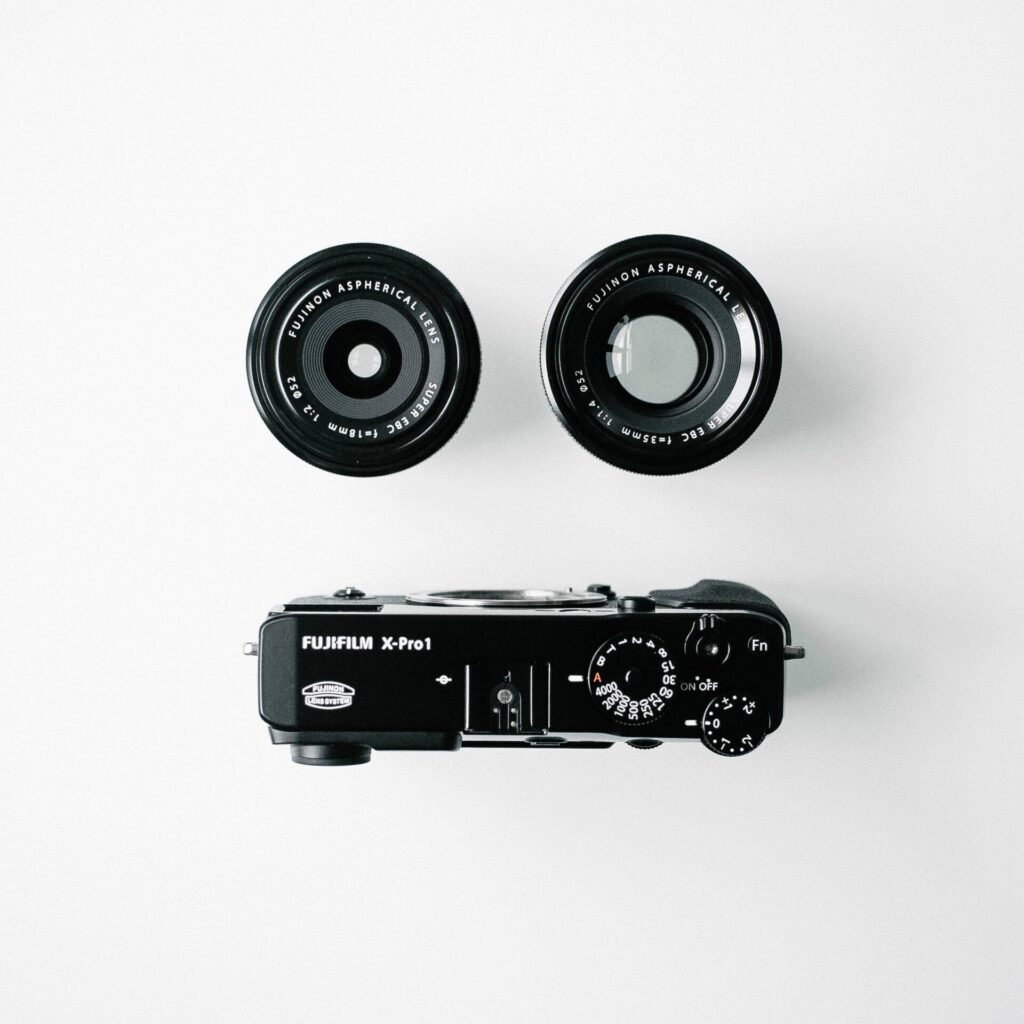
One of the main advantages of the XF 35mm f/1.4 R is its compact and lightweight design. This lens is perfect for traveling photographers who want to minimize the camera gear they carry on their city trips. The lens is also highly versatile, making it a great choice for many subjects and styles beyond cityscapes. With its advanced autofocus system and smooth aperture ring, the Fujifilm XF 35mm f/1.4 R is an easy-to-use lens that provides excellent performance and reliable results.
- Price: $599,-
The 3 Best All-around Fujifilm Lenses for Travel Photography
When it comes to traveling with Fujifilm lenses, a versatile zoom lens is an essential piece of equipment for any travel photographer. It can handle various shooting situations, from wide landscapes to intimate portraits, making it an ideal choice for capturing stunning photos on the go. Fortunately, the Fujifilm X-Series camera system offers several high-quality all-around lenses that can fit the bill.
This article will explore the top three Fujifilm lenses for all-around travel photography, examining their features and capabilities to help you find the right lens for your needs. Whether you’re capturing sweeping vistas or intimate moments, these lenses will help you take your travel photography to the next level.
Fujifilm XF 18-135mm f/3.5-5.6 R LM OIS WR
The Fujifilm XF 18-135mm f/3.5-5.6 R LM OIS WR is a versatile, all-in-one zoom lens that’s perfect for travel and general photography. It features image stabilization, weather resistance, and high-quality optics, making it a reliable and compact lens for capturing stunning images on the go. The linear motor ensures fast and accurate autofocus, and the lens has a minimum focus distance of 45cm for close-up shots with a creamy bokeh effect.
- Price: $899,-
The Fujifilm XF 18-55mm f/2.8-4 R LM OIS lens is a versatile option for photographers who need a reliable and lightweight all-purpose lens while traveling. With a focal range of 18-55mm, it’s perfect for capturing various scenes, from landscapes to portraits. The lens features optical image stabilization, which helps to minimize camera shake, resulting in sharp and clear images even in low light.
The lens also features a fast aperture range of f/2.8-4, which allows for shallow depth-of-field effects and better low-light performance. The aperture range also makes capturing fast-moving subjects and freeze motion easier. The lens has a linear motor that ensures fast and silent autofocus, making it ideal for capturing candid moments and street photography. The lens is also compact and lightweight, which makes it easy to carry around while traveling, so you won’t be weighed down by bulky equipment.

The Fujifilm XF 55-200mm f/3.5-4.8 R LM OIS is an excellent all-around lens that is perfect for travel photography. It is a telephoto zoom lens that provides a focal length range of 55mm to 200mm, making it ideal for capturing distant subjects, whether you’re shooting wildlife or architecture. With a maximum aperture of f/3.5-4.8, the lens can produce beautiful bokeh and is perfect for shooting in low-light conditions. The lens also features image stabilization, allowing you to shoot handheld without worrying about camera shake, even in challenging lighting conditions.
The lens is built to withstand the rigors of travel, with a durable construction that is dust- and moisture-resistant. Weighing just over a pound, the lens is compact and lightweight, making it easy to carry around during travel. Its high-quality optics and versatile zoom range make it a great all-around lens that can be used for various photographic situations.
The 3 Best Budget Fujifilm Lenses for Travel Photography
When it comes to traveling with Fujifilm lenses, not everyone can afford to splurge on high-end equipment. That’s why it’s important to consider budget-friendly options that can still deliver impressive image quality without breaking the bank. Fortunately, the Fujifilm X-Series camera system offers several affordable lenses that are perfect for travel photography.
This article will look at the three best budget Fujifilm lenses for traveling. These lenses strike a balance between affordability, versatility, and quality, making them an ideal choice for those who want to capture great travel photos without spending a fortune. Whether a hobbyist or a professional, these lenses will help you capture stunning images on your travels.
Fujifilm XC 16-50mm f/3.5-5.6 OIS II
The Fujifilm XC 16-50mm f/3.5-5.6 OIS II is a versatile and lightweight lens that’s perfect for photographers looking for an affordable option for their travel photography. With its wide focal range, this standard zoom lens can capture various travel scenes, from wide landscapes to close-up details. Its optical image stabilization feature ensures sharp and steady shots even in low light conditions, making it a reliable companion for capturing unforgettable travel moments.
With a minimum focusing distance of 15cm, this lens lets you get close to your subjects and capture intricate details. Additionally, its compact and lightweight design makes it an ideal lens for traveling. You can easily pack it in your camera bag without adding too much weight to your gear, allowing you to explore new destinations without the burden of carrying heavy equipment. The Fujifilm XC 16-50mm f/3.5-5.6 OIS II is a great option for photographers who want to capture beautiful travel photos without breaking the bank.
Fujifilm XC 50-230mm f/4.5-6.7 OIS II
The Fujifilm XC 50-230mm f/4.5-6.7 OIS II lens is an excellent option for photography enthusiasts who want to capture stunning images while traveling on a budget. This telephoto zoom lens offers image stabilization, allowing you to take sharp and clear photos even when shooting at long focal lengths. With a versatile zoom range of 50-230mm, you can easily capture distant subjects and compress the perspective for dramatic effect. Whether you want to take portraits, landscapes, or wildlife photos, this lens is a reliable choice.
The Fujifilm XC 50-230mm f/4.5-6.7 OIS II lens features a high-precision stepping motor, which provides fast and quiet autofocus, making it ideal for shooting videos as well. It has a maximum aperture range of f/4.5-6.7, which is sufficient for most lighting conditions. This lens is lightweight and compact, making it easy to carry in your camera bag while traveling.
- Price: $399,-
Fujifilm XF 35mm f/2 R WR
For photography enthusiasts who want to capture high-quality images while traveling on a budget, the Fujifilm XF 35mm f/2 R WR lens is an excellent option. This lightweight and affordable prime lens offers a fast aperture of f/2, making it perfect for low-light situations and creating beautiful shallow depth-of-field effects. With a focal length of 35mm, this lens provides a natural field of view that is ideal for capturing a wide range of travel scenes, from stunning landscapes to street photography.
The Fujifilm XF 35mm f/2 R WR lens features a high-speed autofocus system that provides fast and accurate focusing, making capturing sharp and detailed photos easy. It also has a weather-resistant design, which makes it ideal for shooting in various weather conditions while on the go. The lens consists of nine elements in six groups, including two aspherical elements, which help to minimize distortion and improve image quality.
Our favorite Fujifilm lenses for travel photography listed.
Share this:.
Hey there! I'm Elliot Clennam, a passionate photographer based in Brussels, Belgium. My love for capturing the essence of my surroundings has led me on countless adventures, from exciting road trips to bustling city escapes.
Similar Posts
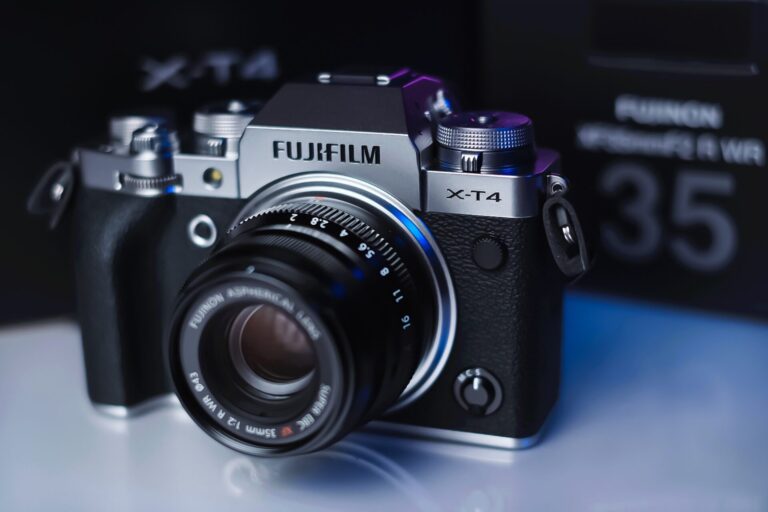
Review: How does the Fujifilm X-T4 hold up after a year of traveling?
The Fujifilm X-T4 is a flagship mirrorless camera released in 2020, and it remains a popular choice for photographers…
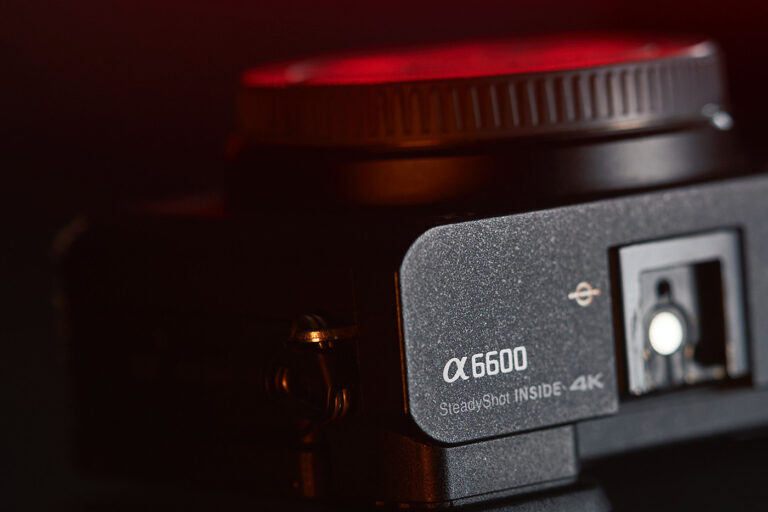
Sony A6600, 2024 Review: A Mighty Camera for Photography Enthusiasts
The Sony A6600 is a mirrorless camera released in 2019 and has been well-regarded by many photographers and videographers….
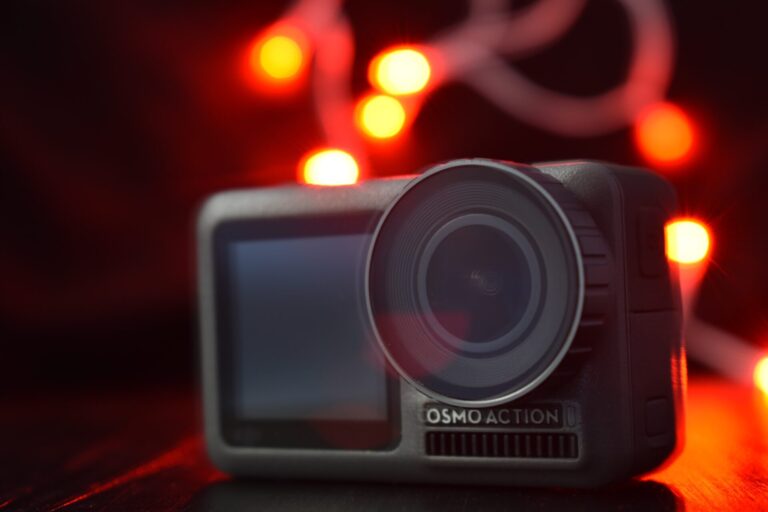
DJI Osmo Action Review: A Worthy Rival to the GoPro Hero 10 Black?
The DJI Osmo action camera has been on the market for a few years now, but is it still…
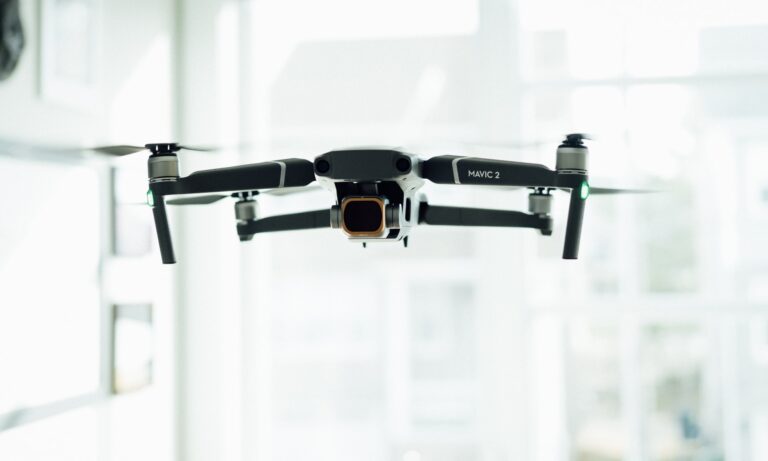
Is the DJI Mavic 2 Pro still the best compact drone in 2024?
We’ve all heard the adage that a workman always blames his tools. The thing is, as a digital creative,…
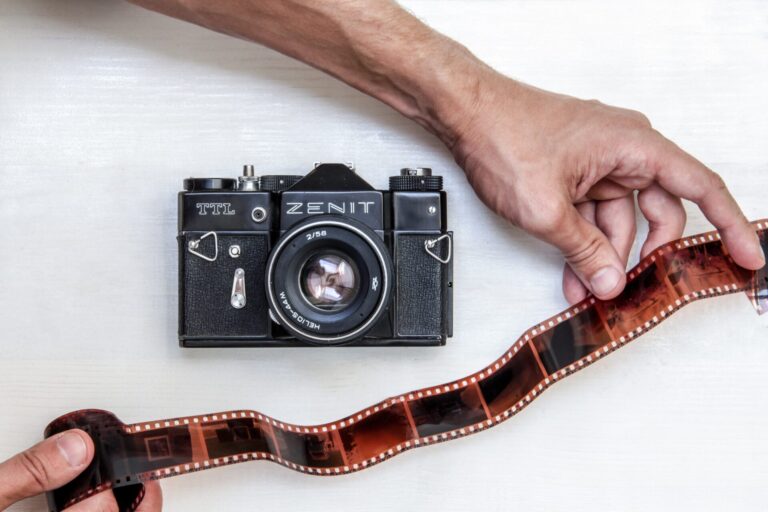
How to convert analog film to digital pictures with Negative Lab Pro
If you’re a film photographer looking to digitize your work, you may have found the process time-consuming and challenging….
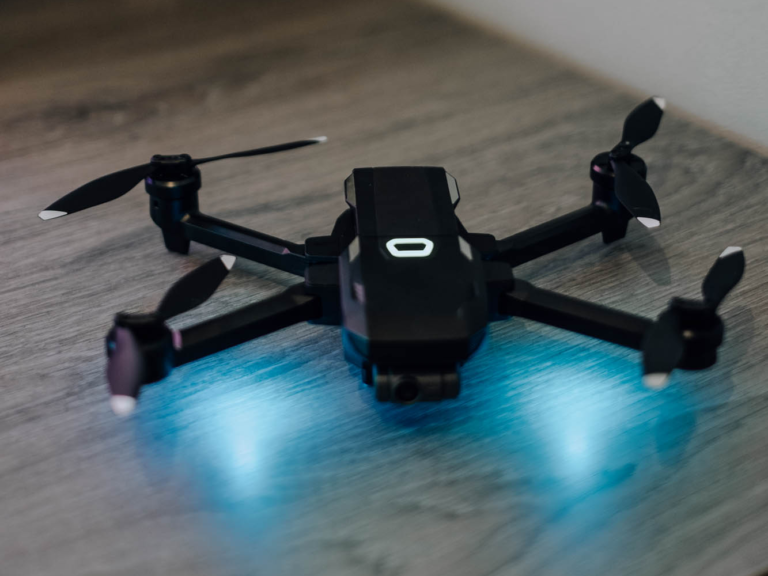
Why you should buy a Yuneec Mantis G drone (review)
Last year, the Chinese drone manufacturer Yuneec released their latest Mantis G drone, which we have been able to…
Fujifilm Corporate Blog
Explore the world of Fujifilm
The Best Fujifilm Travel Lenses for Your Next Trip
By Stefano Ferro I have been running a travel photography website for few years. In conjunction, I also run some workshops and commonly receive many photography questions; however, there is one which comes up frequently:
What is your favourite camera for travelling today? Fair enough, people want to upgrade or just change the model. I find however strange that I almost never get this question:
What lens should I buy for my next trip? Or what lens would you suggest for my travel adventure?
It seems that lenses always come second, based on what is left from the initial camera budget. It’s not uncommon to hear “the kit lens will do” when someone goes travelling.
But is it the right choice?
Maybe not. I may be too drastic, however, I believe that lenses are even more important than the cameras when talking about travel photography. I was once watching a lecture from Prof. Marc Levoy on lenses and differences when using the same camera, it was very interesting. It was part of an 18-lecture workshop that I would suggest everyone watches if they have some spare time. From this I have one lens buying tip: if you buy only one lens then allocate a budget at least similar, if not higher, to the one allocated to the purchase of the camera.
Do not buy a Ferrari with a FIAT engine (although the FIAT Group actually owns the Ferrari brand)!

Sunset on Southgate with the helicopter surprise Fujifilm X-T1 – XF16-55mmF2.8 – F2.8 – 1/400 second – ISO200
How to choose the best travel lens?
If it is true that the best camera is always the one with you then the best lens is the one that will help to capture the majority of your photos in your trip.
Think about what lenses to take when travelling. For example, you should take multiple lenses that will cover a wide focal length through to a telephoto length, but also take into consideration the following:
- Weight of the lens
- Cost of the lens
- Risk of theft
I am in love with the Fujifilm X Series cameras. One of the reasons beside the light weight is the compact size, for instance, I can take a Fujifilm X-T2 in my bag for a full day of shooting and almost not feel it.
This is the way I want to travel. It’s important for me to keep my gear light, which is why I take a maximum of two lenses with me. When I travel on my own I usually change location every 2-3 days. Packing multiple lenses and transporting many of them is just not an option.
When I travel with my child I usually stay in a place for seven or more days. To be honest, I already have so many things that taking several lenses is simply not ideal. There is also a simple equation to think about as well, the more lenses you buy the higher the total cost of them. T he risk factor of leaving multiple lenses in a hotel room is something you simply should not do.
So what do I do nowadays?
I just take two lenses with me and in some rare cases a third one. I make sure to include an all round zoom lens, a prime and an ultra wide angle or super zoom when absolutely needed.

Walking through the tiles Fujifilm X-T2 with XF35mmF2 R WR – F2 – 1/40 second – ISO800
Recommended All Round Zoom Lens for Travelling
My favourite all-round lens for travelling is in the 24-80mm or 24-100mm focal range (35mm equivalent). As a rule of thumb, the wider the aperture the better, as this typically increases the photo opportunities. Personally, I would suggest using a lens that has an aperture of F2.8 or even lower.
Why such a wide aperture for travel photography?
- To have a narrow depth of field. Think of photos of architectural details or simply portraits of local people with a lovely blurred background.
- To make photos in low light environments, as the local markets, without pushing the ISO too high. I still remember how dark the fish market was in Port Louis (Mauritius)!
- To shoot without a tripod at sunset or at night. The wider you can go with the aperture the more light you will receive on your sensor without the need to use higher ISO levels.
Why as wide as 24mm (35mm equivalent)?
Because it’s a nice average wide angle to capture most of the typical photos you might come across when visiting landscapes, lanes/alleys or a new city.
Why 80mm or 100mm?
Because honestly, you will hardly need more than that. Let’s remember that we have legs too and we can move closer to the subject in most cases. Of course, there will be the time when you will regret that you have left behind the longer lens or you have not bought the lens that has a focal length of 400mm. Compromise compromise…
So, what all-round lens works best for a Fujifilm X Series camera?
I am personally in love with the Fujinon XF16-55mmF2.8 R LM WR lens. This lens provides a super fast F2.8 aperture that delivers beautiful bokeh (35mm equivalent focal length of around 24-85mm). This is my favourite all-round Fujinon lens that I would highly recommend for travel photography.

City view from St.Kilda, Melbourne Fujifilm X-T1 with Fujinon XF16-55mmF2.8 R LM WR – 55mm – 2 seconds – F3.2 – ISO200
I had the lens for testing and review. I was really impressed with its sharpness across the entire focal range without compromising on the corners. The autofocus was quick and silent too, which is really a feature you want when travelling. I always try to be invisible when taking photos by not making any noise that would alarm people around me. I found the zoom and aperture rings were very smooth and easy to operate. Lastly, the combined weather resistance was also really important when travelling in unpredictable weather conditions.
The only drawback of this lens is that it does not have image stabilisation. If you really want this feature you should check the XFujinon XF18-55mmF2.8-4 R LM OIS .
If you still think that the focal length of 80mm (35mm equivalent) is still not enough when travelling I would recommend the Fujinon XF18-135mm R LM OIS WR which, with a focal length of around 24-200mm (35mm equivalent), should cover everything you want to capture. The lens also is more affordable as well, however, you have to compromise with a slower aperture that offers F3.5-F5.6.

Fujifilm X-T2 with XF35mmF2 R WR – 35mm – 10 seconds – F16 – ISO100
Recommended Prime Lens for Travelling
Why buy a prime lens with a single focal length?
These are my four main reasons:
- Generally cheaper
- Offers great image quality
- Light in weight
- Smaller in size
A prime lens essentially has only one unique focal length which usually performs at the highest professional level. When travelling, I photograph quite a lot of markets that form an essential part of my work. If you have a mirrorless Fujifilm X Series camera with a small prime lens mounted you will be able to walk around unnoticed. If you arrive at a public place like a market with a zoom lens mounted on your camera then suddenly people around you might start thinking you are a professional photographer with expensive gear. This sort of attention is not something you want, especially in some countries where theft is common.
For a prime, I would suggest going for a focal length in the range of 50mm to 85mm (35mm equivalent). This will allow the most natural portraits to be captured. I personally use a 50mm focal length (35mm equivalent) as I like to get close to my subject, possibly have a talk, even if just with my hands (my Italian background helps a lot).

Love is our truth Fujifilm X-T2 with Fujinon XF35mmF2 R WR – 35mm – 1/13 second – F2 – ISO3200
I personally suggest the Fujinon XF35mm F2 R WR for a prime lens. I used this lens with the Fujifilm X-T2 and I could only love it. The small package was great to shoot with. Fujifilm does also offer the F1.4 version, however, for travelling, I do not feel I can justify the higher price.

Resting time for the chef Fujifilm X-Pro2 with Fujinon XF35mmF1.4 R WR – 35mm – 1/40 seconds – F2 – ISO5000 – handheld
Alternatively, you can look also into the Fujinon XF50mmF2 R WR if you prefer a longer focal length.
Recommended Ultra Wide angle and Super Zoom Lens
I own an ultra wide angle lens and I sometimes rent or borrow a super zoom one.
Why an ultra wide angle lens?
I mostly use it for interior and architectural photography. If I am going to explore a city for a long weekend I may take it with me if I plan to visit churches, cathedrals or unique buildings. I use it also for some landscape photography, however mostly when my subject is actually in the foreground. For example a stone formation at a beach.
The Fujinon XF10-24mm F4 R OIS lens is the widest you can get in the XF range. It’s also optically stabilised which comes in handy when photographing in buildings or places where the tripod is not allowed.
Why a super zoom lens?
I need it rarely and that is why I have not bought it. It’s really mostly needed when travelling on a safari, photographing sports or wildlife. Last year, for instance, I used the super zoom for photographing a zoo safari in the middle of Australia – it definitely came in handy. The new XF100-400mm F4.5-5.6 R LM OIS WR lens is probably all you need if you are photographing any of the mentioned subjects. An important note is that it is also a stabilised lens, something that is really a must for this focal length.

Sali e Tabacchi
Fujifilm X-Pro2 with Fujinon XF35mmF1.4 R WR – 35mm – 1/40 second – F2 – ISO1000 – Handheld
Final thoughts
An equal budget should be allocated for the camera and the all-round lens. If there is any spare money left over then I would recommend investing in a prime lens as the secondary option. Any other lens can wait or can be rented. Remember that a good lens can always be used on a newer camera. Great lenses will always stay with you.
Happy travelling and enjoy your photography.
Leave a Reply Cancel reply
Discover more from fujifilm corporate blog.
Subscribe now to keep reading and get access to the full archive.
Type your email…
Continue reading
The best lenses for the Fujifilm X-T5 in 2024
We pick the best lenses for the Fujifilm X-T5, based on image quality, build quality, features and desirability
The Quick List
- Best standard zoom
- Best fast telephoto
- Best budget telephoto
- Best wide-angle zoom
- Best wide-angle prime
- Best street lens
- Best standard prime
- Best portrait lens
- How to choose
- How we test
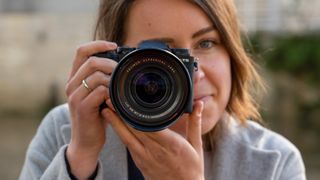
The Quick List ↩ 1. Best standard zoom 2. Best fast telephoto 3. Best budget telephoto 4. Best wide-angle zoom 5. Best wide-angle prime 6. Best street lens 7. Best standard prime 8. Best portrait lens How to choose How we test
The Fujifilm X-T5 is one of the company’s most impressive cameras to date. It manages to combine just about all the most desirable features of Fujifilm’s X-mount cameras and roll them into one. So choosing the best lenses for the Fujifilm X-T5 is all the more important, because they need to match what this camera can do and live up to the resolution of its 40MP sensor.
Of course, that 40MP sensor will show up the slightest optical weakness in the lenses you use. Fujifilm has indicated a list of 20 lenses that resolve all 40.2MP from the Fujifilm X-H2 (which has the same sensor). We’ve taken this into account when compiling our list.
So it’s not as simple as reeling off a list of the best Fujifilm lenses right now. We wanted to pick lenses with the optical quality to do the X-T5 justice, but which were also suited to this camera’s design and handling and its likely audience. We haven’t included a lot of Fujifilm’s more extreme telephotos, for example, because we think photographers who need these are more likely to gravitate towards the high-speed Fujifilm X-H2S .
What we have included is our pick of top-quality professional zooms and premium-quality primes. These are lenses that we think will appeal to the kind of buyer attracted to the X-T5 – the zooms geared towards all-round photography and the primes chosen to reflect the X-T5’s traditional exposure controls.

Rod is an independent photography journalist and editor, and a long-standing Digital Camera World contributor, having previously worked as DCW's Group Reviews Editor. He has used practically every interchangeable-lens camera launched in the past 20 years, from entry-level DSLRs to medium-format cameras, so he has the expertise to select the best Fujifilm lenses for you.

This zoom hits the sweet spot for everyday shooting, with a versatile focal length range and a wide constant aperture for low light. Read more below…

One the X-T5, this zoom gives the equivalent of the classic 70-200mm telephoto range, handling everything from portraits to sports. Read more below…
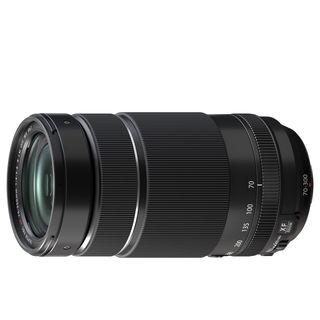
This affordable telephoto has a generous reach that gets you close to wildlife and sports, with weather sealing to handle the elements. Read more below…
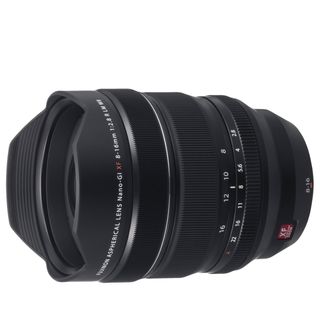
This is a relatively big wide-angle that delivers big images, with an epic viewing angle and a wide aperture to handle the fading light. Read more below…

Prime lenses typically deliver better optical quality than zooms, and this prime delivers superb center sharpness, even at the widest aperture. Read more below…

On the X-T5, this prime has the feel of a classic 35mm street lens, with handling bonuses that include an aperture ring and weather sealing. Read more below…
View the full list ⤵

With a wide aperture, a physical aperture ring and a responsive autofocus system, what’s not to love about this prime lens? Read more below…

This prime gives you the effective focal length of a classic portrait lens on the X-T5, with a super-wide aperture to achieve dreamy bokeh. Read more below…
Best lenses for the Fujifilm X-T5 in 2024
Why you can trust Digital Camera World Our expert reviewers spend hours testing and comparing products and services so you can choose the best for you. Find out how we test.
Best standard zoom for Fujifilm X-T5
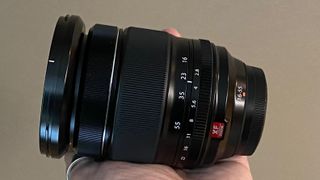
1. Fujifilm XF 16-55mm f/2.8 R LM WR
Our expert review:
Specifications
Reasons to buy, reasons to avoid.
The X-T5 is one of Fujifilm’s flagship cameras, so it makes sense to consider its flagship standard zoom. The XF 16-55mm f/2.8 R LM WR does the same job on the X-T5 as a 24-70mm f/2.8 would on a full frame camera, with slightly longer reach (82.5mm equivalent) at the longer end of the zoom range. It’s an excellent lens, though it’s also a big one, and while the cost is certainly lower than a full frame equivalent, you’re not really saving anything in weight and bulk.
This is one of Fujifilm’s highest performing ‘red badge’ lenses. Naturally, you get an aperture ring, though no in-built image stabilization. The X-T5, however, has its own in-body stabilization system.
Read more: Fujifilm XF 16-55mm f/2.8 R LM WR review
- Back to the top ⤴
Best fast telephoto lens for Fujifilm X-T5
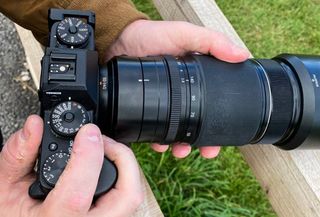

2. Fujifilm XF 50-140mm f/2.8 R LM OIS WR
With an equivalent focal range of 75-210mm, the XF 50-140mm f/2.8 R LM OIS WR is equivalent to the 70-200mm f/2.8 lenses favored by professionals. One of Fujifilm’s ‘red badge’ lenses, it’s perfect not just for short-medium range sports photography, but portrait and even photography too – though it doesn’t offer a particularly close minimum focus distance, so it’s not ideal for smaller wildlife subjects.
The XF 50-140mm f/2.8 delivers excellent optical performance at a very competitive price – although, as with Fujifilm’s other ‘trinity’ lenses, you don’t really save a lot of weight or bulk compared to a full frame equivalent.
Read more: Fujifilm XF 50-140mm f/2.8 R LM OIS WR review
Best budget telephoto lens for Fujifilm X-T5
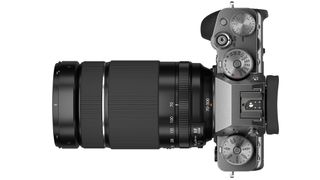
3. Fujifilm XF 70-300mm f/4-5.6 R LM OIS WR
If you’re into sports and wildlife photography, the XF 70-300mm f/4-5.6 R LM OIS WR offers good telephoto reach (up to 450mm equivalent) at an affordable price. There are better telephotos in the Fujifilm range, but at much higher prices, and we’d guess that while anyone really serious about sports and wildlife would gravitate towards these, they’d probably be more likely to go for the X-H2S than the X-T5.
The XF 70-300mm f/4-5.6 is not a small lens, but it handles nicely, it’s weather sealed, has in-built optical stabilization and is compatible with Fujifim’s teleconverters, so you can increase its range still further.
Read more: Fujinon XF 70-300mm f/4-5.6 R LM OIS WR review
Best wide-angle zoom for Fujifilm X-T5
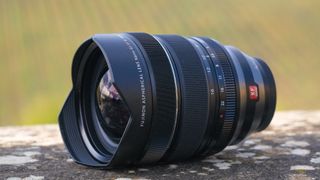
4. Fujifilm XF 8-16mm f/2.8 R LM WR
Fujifilm also makes an XF 10-24mm f/4 lens that’s a little cheaper and lighter than this one, but we’d still recommend the Fujinon XF 8-16mm f/2.8 R LM WR for all-round professional quality.
The XF 8-16mm isn’t just significantly wider than the 10-24mm lens, it’s a stop faster and has better optical quality too. With an effective focal range of 12-24mm, it fits in nicely with the XF 16-55mm lens if you have that too. Not only that, it’s half the price of equivalent lenses for full frame camera systems – it is not, however, half the size. This is a big lens.
Read more: Fujinon XF 8-16mm f/2.8 R LM WR review
Best wide-angle prime for Fujifilm X-T5

5. Fujifilm XF 18mm f/1.4 R LM WR
The traditional styling and external exposure controls are amongst the key reasons why enthusiasts will choose the X-T5, so it makes sense to choose lenses that reflect this classic camera handling. There’s been a resurgence of interest in prime lenses, and Fujifilm has users covered with two sets of lenses. It has a compact range of f/2/2.8 primes that are very affordable and perfect for its smaller cameras, but for the X-T5 we’d recommend Fujifilm’s latest f/1.4 prime lenses, which are steadily replacing earlier versions with more up to date designs and faster linear AF motors.
The XF 18mm f/1.4 R LM WR is a great choice, offering stellar optical performance at a reasonable price. The only issue we noticed is that when the camera is powered down, you can feel and hear parts moving inside the lens. We assume this is perfectly harmless, though, and perhaps because the focus group is not ‘parked’.
Read more: Fujifilm XF 18mm f/1.4 R LM WR review
Best street lens for Fujifilm X-T5
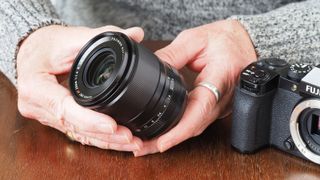
6. Fujifilm XF 23mm f/1.4 R LM WR
Fans of street photography should take a look at the XF 23mm f/1.4 R LM WR. It offers a fast maximum aperture, fast and silent AF and has an effective 35mm focal length. Like Fujifilm’s other new f/1.4 primes, it delivers superb optical performance, it has a neat, unfussy design and it’s weather sealed too. You get a physical aperture ring too, but these newer primes don’t have distance scales – although in MF mode the camera can display both the focus distance and depth of field indicators.
This is another terrific prime from Fujifilm at a competitive price. It’s fairly long in the body for a 23mm APS-C prime, but it is a lot smaller than a 35mm f/1.4 for a full frame camera.
Read more: Fujinon XF 23mm f/1.4 R LM WR review
Best standard prime for Fujifilm X-T5
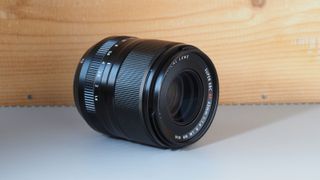
7. Fujifilm XF 33mm f/1.4 R LM WR
The XF 33mm f/1.4 R LM WR has an effective focal length of 49.5mm in full frame camera terms or, as near as makes no difference, 50mm. You probably wouldn’t choose this lens and the XF 23mm as they are fairly close in their angles of view, but it could be a good lens to pair with the XF 18mm.
As usual with this crop of new f/1.4 LM lenses, the XF 33mm f/1.4 produces excellent image quality, with fast and quiet autofocus, weather sealing and a physical aperture ring. For X-T5 owners who are fans of the 50mm focal length, this is a no-brainer.
Read more: Fujinon XF 33mm f/1.4 R LM WR review
Best portrait lens for Fujifilm X-T5
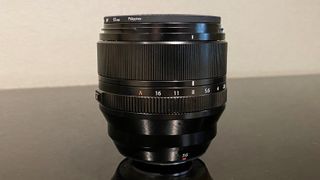
8. Fujifilm XF 56mm f/1.2 R WR
Every lens range needs a professional quality ‘portrait’ lens, and this is Fujifilm’s. The XF 56mm f/1.2 R WR effectively replaces the older APD and non-APD lenses – the APD lens used an apodization element to enhance bokeh, but Fujifilm has clearly decided its newer lens doesn’t need any help. The image quality is excellent, even wide open and right to the edges of the frame.
If you want a classic portrait lens for your X-T5, the XF 56mm f/1.2 is perfect, offering the equivalent of 84mm in full frame camera terms. Its super-fast f/1.2 maximum aperture also gives similar depth of field to an 85mm f/1.8 portrait lens on full frame.
Read more: Fujinon XF 56mm f/1.2 R WR review
How to choose the best lens for the Fujifilm X-T5
Which lenses fit the x-t5.
The X-T5 uses the Fujifilm X-mount, which means it works with all lenses designed for X-series cameras. The model names of Fujifilm’s own X-mount lenses begin with XF or XC (as well as MKX for cine lenses). If you are buying a third-party lens for the X-T5, check that it is made for the Fujifilm X series.
The X-T5 has an APS-C image sensor, so it doesn’t capture the entire picture coming through the lens in the way a full-frame camera does. To get a sense of the type of photo a given lens should capture on the X-T5, multiply its focal length by 1.5.
For example, the Fujfilm XF 56mm lens has roughly the same field of view as an 84mm lens on a full-frame camera.
How do I know which lens to get for my X-T5?
The reason there are so many types of lens in the first place is that different scenes demand different lens designs, particularly when it comes to focal length and aperture rating.
Usually, you will decide what you want to photograph, then get a lens with the focal length that suits the situation. For example, to shoot landscapes you will need a wide-angle lens, while for sports and wildlife you will need a telephoto.
You can watch this video that explains focal length : it helps you work out what kind of lenses you need for different genres of photography.
How we test lenses
The lens experts in our testing lab run a range of tests under controlled conditions, using the Imatest Master testing suite. Photos of test charts are taken across the range of apertures and zooms (where available), then analyzed for sharpness, distortion and chromatic aberrations.
We use Imatest SFR (spatial frequency response) charts and analysis software to plot lens resolution at the centre of the image frame, corners and mid-point distances, across the range of aperture settings and, with zoom lenses, at four different focal lengths.
There's more to it than just the technical side, though! Beyond the lab, our reviewers test lenses in real-world environments – and sometimes on professional shoots! We work with lenses both indoors and outdoors, in studio conditions and in natural light, with as many different subjects as is possible (or appropriate – there's no point testing a landscape lens' ability to shoot a portrait!).
We take into account everything from handling and ease of use to speed of autofocus and the overall quality of the images produced.
Find out more about how we test and review on Digital Camera World
Thank you for reading 5 articles this month* Join now for unlimited access
Enjoy your first month for just £1 / $1 / €1
*Read 5 free articles per month without a subscription
Join now for unlimited access
Try first month for just £1 / $1 / €1
Get the Digital Camera World Newsletter
The best camera deals, reviews, product advice, and unmissable photography news, direct to your inbox!

Rod is an independent photography journalist and editor, and a long-standing Digital Camera World contributor, having previously worked as DCW's Group Reviews editor. Before that he has been technique editor on N-Photo, Head of Testing for the photography division and Camera Channel editor on TechRadar, as well as contributing to many other publications. He has been writing about photography technique, photo editing and digital cameras since they first appeared, and before that began his career writing about film photography. He has used and reviewed practically every interchangeable lens camera launched in the past 20 years, from entry-level DSLRs to medium format cameras, together with lenses, tripods, gimbals, light meters, camera bags and more. Rod has his own camera gear blog at fotovolo.com but also writes about photo-editing applications and techniques at lifeafterphotoshop.com
Related articles

- Hiking Shoes
- Hiking Boots
- Hiking Sandals
- Trail Runners
- Base layers
- Hiking Shirts
- Fleece Jackets
- Softshell Jackets
- Rain jackets
- Down Jackets
- Hiking Pants
- Hiking Shorts
- Base Layers
- Rain Jackets
- Hiking Bras
- Baby Carriers
- Cookware Sets
- Water Filters
- Water Purifiers
- Sleeping Bags
- Sleeping Pads
- Hiking Poles
- GPS Devices
- Solar Chargers
- Dive Regulators
- Dive Computers
- Dive Watches
- Dive Wetsuits
- Dive Gloves
- Dive Lights
- Dive Knives
- Spearfishing Wetsuits
- Spearfishing Masks
- Spearfishing Fins
- Spearfishing Watches
- Freediving Wetsuits
- Freediving Masks
- Freediving Fins
- Freediving Watches
- Sit On Top Kayaks
- Inflatable Kayaks
- Fishing Kayaks
- Tandem Kayaks
- Touring Kayaks
- Kayak Paddles
- Kayak Seats
- Kayak Roof Racks
- Kayak Carts
- Stand Up Paddle Boards
- Touring SUPs
- Inflatable SUPs
- Fishing SUPs
- SUPs For Yoga
- SUPs For Surfing
- SUP Paddles
- Climbing Boots
- Belay Devices
- Climbing Shoes
- Women's Climbing Shoes
- Bouldering Shoes
- Approach Shoes
- Climbing Pants
- Bouldering Pants
- Mountain Bikes for Men
- Mountain Bikes for Women
- MTB Handlebars
- Bike Saddles
- Bike Computers
- Bike Lights
- MTB Jackets
- Bike Helmets
- Bike Packing Gear
- Fat Biking Gear
- Ski Bindings
- Ski Helmets
- Ski Goggles
- Ski Jackets
- Snowboarding Bindings
- Snowboarding Boots
- Snowboard Helmets
- Snowboard Goggles
- Snowboard Pants
- Snowboard Jackets
- Snowshoe Poles
- Avalanche Beacons
- Avalanche Probes
- Avalanche Shovels
- Ski Backpacks
- Surfboards For Beginners
- Surfboards For Kids
- Surfboard For Small Waves
- Soft Top Surfboards
- Foam Surfboards
- Body Boards
- Boogie Boards
- Kiteboarding Kites
- Kitesurfing Boards
- Kiteboarding Harnesses
- Surfing Wetsuits
- Men's Rash Guards
- Women's Rash Guards
- Board Leashes
- DLSR Travel Cameras
- Mirrorles Travel Cameras
- Point and Shoot Travel Cameras
- Fuji Travel Lenses
- Nikon Travel Lenses
- Tripods for Travel
- DLSR Landscape Cameras
- Mirrorles Landscape Cameras
- Point and Shoot Landscape Cameras
- Fuji Landscape Lenses
- Nikon Landcape Lenses
- Canon Landcape Lenses
- Tripods for Landscape Photo
- Wildlife Cameras
- Wildlife Lenses
- Wildlife Tripods
- Wildlife Monopods
- Birdlife Cameras
- Birdlife Lenses
- Surfboards For Small Waves
Best Fuji Lenses for Travel of 2024
What are the best Fuji lenses for travel? With a great selection of products on offer from the Japanese brand, choosing which lens to bring on your next trip can be tricky. Whether you are looking for a versatile all-around lens or you want to specialize in landscapes, portraits, street photography, or wildlife there is something available for you.
Fujifilm produces both prime and zoom lenses for beginners who want to upgrade their standard kit lens or professionals willing to invest in top-of-the-line gear. Many of Fuji’s lenses are weather sealed and freezeproof, allowing you to produce incredibly sharp images even in the most hostile environments.
In this guide we review the ten best Fuji lenses for travel photographers, listing glass built for any kind of activity, from macro shooting to photojournalism.
For more of our top travel photography gear recommendations, check out the Best Travel Lenses .
Quick Answer - The Best Fuji Lenses for Travel Photography
- Fujinon XF35mmF1.4 R View at Amazon
- Fujinon XF18-135mmF3.5-5.6 R LM View at Amazon
- Fujinon XF10-24mmF4 R OIS View at Amazon
- Fujinon XF80mmF2.8 R LM OIS WR View at Amazon
- Fujinon XF16-55mmF2.8 R LM WR View at Amazon
- Fujinon XF 23mm F1.4 R View at Amazon
- Fujinon XF8-16mmF2.8R LM WR View at Amazon
- Fujinon XF56mmF1.2 R View at Amazon
- Fujinon XF55-200mmF3.5-4.8 R LM OIS View at Amazon
- Fujinon XF100-400mmF4.5-5.6 R LM OIS View at Amazon
Comparison Table - Best Fuji Lens for Travel
Reviews - the best fuji travel lenses, fujinon xf35mmf1.4 r.
- Type : Wide Angle
- Aperture : f/1.4
- Dimensions : 2.55 x 1.96 inches
- Focal Length : 35mm
- Weight : 0.41 lbs
- Super Sharp Image Quality
- Realistic Colors With Low Distortion
- Smooth Bokeh In Out-Of-Focus Areas
BEST FOR: THE URBAN EXPLORER
Starting off with a prime lens, meet the Fujinon XF35mmF1.4 R. It is a wide-angle lens with a viewing angle close to a human eye, making it great for landscapes and architectural snapshots. Its fixed focal length allows the lens to have a faster aperture speed, reaching up to f/1.4. What this means is that you can take amazing photos in the dark, be that indoors or outside. Plus, you will have more control over the depth of the scene with selective focus techniques and a wide aperture.
Thanks to its Super EBC lens coating, the XF 35mm takes care of ghosting and flare, as well as different color distortions. It works especially well at larger apertures, such as those you might use for urban photography. Besides optical qualities, this lens impresses with its physical build. Weighing only 6.6 ounces, this small lens is very light and packable – perfect for travel.
Fujinon XF18-135mmF3.5-5.6 R LM
- Type : Multipurpose Zoom
- Aperture : f/3.5-5.6
- Dimensions : 2.98 x 3.85 inches
- Focal Length : 18-135mm
- Weight : 1.1 lbs
- Smooth, Near-silent Autofocus
- Weather Sealed To Protect Against Dust And Moisture
- Adjustable Focal Length To Shoot Everything From Landscapes To Portraits
BEST FOR: VERSATILITY
Moving on to zoom lenses, the Fujinon XF18-135mmF3.5-5.6 R LM OIS WR presents a versatile range of focal lengths. This includes ultra-wide-angle and some telephoto capabilities, giving you much room to experiment as you travel around. To add to this versatility, there is a linear motor and image stabilization. The motor delivers fast and fairly quiet autofocus, while the stabilization reduces camera shake up to 5 shutter speed stops.
As for color fringing and other types of distortions, the lens includes an intricate optical design with extra-low dispersion elements and aspherical elements. Additional color correction comes from an HT-EBC coating that boosts contrast and sharpness. If you want to explore various depth of field techniques, you can do that with the lens’ 7-blade aperture diaphragm, producing a beautiful bokeh effect. And, of course, the lens is protected with 20 different weather seals, so you can record your travels at any time.
Fujinon XF10-24mmF4 R OIS
- Aperture : f/4
- Dimensions : 3.07 x 3.43 inches
- Focal Length : 10-24mm
- Weight : 0.9 lbs
- Powerful Image Stabilization System
- High-speed Autofocus
- Lightweight And Portable
BEST FOR: THE LOVER OF PANORAMAS
If you like taking landscape and architectural photos as you travel, then an ultra-wide-angle lens like the Fujinon XF10-24mmF4 R OIS may be of use. It specializes in very wide angles of view up to 110 degrees – nearly panoramic! Aside from this, the lens has a stepping motor, which is not as fast as a linear one, but it is nearly silent and works well.
Just like the other lenses so far, the XF 10-24mm has image stabilization, a Super EBC coating, and various optical elements that combat distortions. Designed for Fujifilm’s X series, the lens is compatible with mirrorless cameras, as well as a lens modulation optimizer. This function accounts for diffraction, or loss of focus, near the edges of an image that is created when a RAW file is converted into JPEG. So, if you are someone who finds this useful, this lens has you covered.
Fujinon XF80mmF2.8 R LM OIS WR
- Type : Macro
- Aperture : f/2.8
- Dimensions : 3.15 x 5.12 inches
- Focal Length : 80mm
- Weight : 1.6 lbs
- Macro Function To Shoot Small Subjects From Close-up
- Film Simulation Modes For Stunning Image Effects
- Weather And Dust Resistant
BEST FOR: MACRO AROUND THE WORLD
Going back to another prime lens, we have the Fujinon XF80mmF2.8 R LM OIS WR lens. It is made specifically for X-mount mirrorless cameras. This lens works well for macro photography due to its long focal length and high aperture capabilities. They combine to isolate your subject for sharp results. Plus, the lens allows for a 9.8-inch minimum focusing distance, so you can get up close and personal to your subject. Not to mention the magnification of 1:1, which is ideal for macro shots.
In terms of autofocus, this lens has a linear motor and a floating focus system, which uses 2 focus areas to maintain image quality. This gives you lots of flexibility for any type of photography. Finally, any travel photographer would like a weatherproof lens. The XF 80mm has a sealed body that is protected against cold as well as other weather conditions, and a fluorine coating on the front that shields against smudges and moisture.
Fujinon XF16-55mmF2.8 R LM WR
- Dimensions : 3.28 x 4.17 inches
- Focal Length : 16-55mm
- Weight : 1.4 lbs
- High-speed, Quiet Auto Focus
- Elegant, Circular Background Blur
- Excellent Low Light Performance
BEST FOR: THE PHOTOJOURNALIST
If you want something more or less standard, the Fujinon XF16-55mmF2.8 R LM WR meets this need. Spanning 16 to 55mm, this lens provides you with ultra-wide-angle shots as well as portraits. This is perfect for photojournalism as you travel. Moreover, this lens has an aperture of f/2.8, which means it is able to take on difficult lighting and hand-held shots. As for optics, there are extra-low dispersion elements, as well as aspherical ones, so color and other distortions are minimized.
Besides these attributes, there is a twin linear motor, meaning that you are getting a fast and nearly silent autofocus. The aperture has a 9-blade diaphragm, which is a plus if you like portrait photography, as this feature makes a beautiful bokeh background a possibility. Naturally, the lens is fully weather-sealed, so you can photograph in temperatures as low as 14°F, and conditions such as rain.
Fujinon XF 23mm F1.4 R
- Dimensions : 2.83 x 2.48 inches
- Focal Length : 23mm
- Weight : 0.66 lbs
- Ultra-Fast Autofocus Performance
- Beautiful Bokeh For Artistic Images
- Wide Aperture Allows To Shoot Hand-Held Even In Low Light Conditions
BEST FOR: PORTABILITY
Weighing 10.6 ounces and measuring just 2.8 inches in length, the Fujinon XF 23mm F1.4 R is one of the most compact lenses in its series. This makes it highly portable and packable, making your travels a little easier. The focal length of 23mm allows for wide-angle photography, like landscape, urban, and portrait. Plus, the maximum aperture of f/1.4 performs well in poorly-lit conditions and hand-held shots. As for focusing, this lens uses a special internal motor that has an exceptionally fast autofocus even in demanding conditions.
XF 23mm also uses an aspherical element that guards against various distortions. This optical rather than digital image correction results in high-quality shots that you can count on. And several layers of an HT-EBC coating take care of chromatic aberrations, as well as increase the durability of the lens. It has comfortable ergonomics, as the manual focus ring is easy to control, which is definitely a plus if you are a manual shooter on the go.
Fujinon XF8-16mmF2.8R LM WR
- Type : Fisheye
- Dimensions : 3.46 x 4.78 inches
- Focal Length : 8-16mm
- Weight : 1.8 lbs
- Solid Construction And Durable Design
- Bright And Wide Angle, Ideal For Interiors And Vast Landscapes
- Weather Sealed And Freezeproof
BEST FOR: THE FISHEYE SURREALIST
The Fujinon XF8-16mmF2.8R LM WR is the lens with the widest viewing angle on this list. It provides fisheye results, so if this is something that interests you, this lens has you covered. It gives you the possibility of shooting panoramic landscapes and surreal scenes. The lens has 6 extra-low dispersion elements that ensure no chromatic aberrations and 4 aspherical elements that reduce distortion and heighten the sharpness of your image.
The lens also includes a Nano-GI coating that protects against flare and ghosting, helping you out in difficult lighting conditions, such as those in urban photography. Besides this, there is a linear motor that drives fast and quiet autofocus. As for portability, this lens measures about 5 inches in length and weighs 1.8 pounds – not the most packable, but still easy to travel with. And finally, the XF 8-16mm is sealed in 11 different places, permitting work in inclement conditions and cold.
Fujinon XF56mmF1.2 R
- Type : Portrait
- Aperture : f/1.2
- Dimensions : 2.88 x 2.74 inches
- Focal Length : 56mm
- Weight : 0.893 lbs
- Incredible Sharpness And Background Blur Thanks To Wide Aperture
- Built-in Neutral Density Filter For Better Control Over Exposure
- Exceptional Low Light Performance
BEST FOR: QUICK PORTRAITURE
As you travel, you may be inclined to take photos – portraits – of people. And this is when the Fujinon XF56mmF1.2 R will come to the rescue. Its prime focal length of 56mm is ideal for portraiture. Plus, it is coupled with an aperture of f/1.2 that allows for work in low-light conditions and is great at making the subject stand out. A 7-blade diaphragm helps with that, as it produces a nice bokeh effect and gives control over the depth of field.
The optical design of this lens makes it very versatile since the inclusion of extra-low dispersion and aspherical elements suppress all sorts of aberrations and distortions. A Super EBC coating further works to enrich the images you take. If you decide to experiment with video, an internal focusing mechanism promises fast and quiet performance. As a final note, this lens measures 2.7 inches in length, taking up the least amount of space compared to other lenses here.
Fujinon XF55-200mmF3.5-4.8 R LM OIS
- Type : Telephoto
- Aperture : f/3.5-4.8
- Dimensions : 2.95 x 4.65 inches
- Focal Length : 55-200mm
- Weight : 1.28 lbs
- Image Stabilization System
- High-speed Autofocus With Quiet Operation
- Minimum Focal Distance Of 1.1m Across The Entire Zoom Range For Close-ups Shots
BEST FOR: COMFORT OF A SEMI-PROFESSIONAL
The Fujinon XF 55-200mm f/3.5-4.8 R LM OIS is a great basic lens that you can use in a variety of ways. Its linear autofocus motor is made for capturing fast-moving subjects and not making a noise. This is a plus for both landscape and urban photography since your shooting won’t disturb animals or people. Complementing the autofocus, this XF 55-200mm lens has a 4.5 stop image stabilization that reduces camera shake on hand-held shots.
The optical design diminishes chromatic aberrations – distortions – that pile around areas of contrast. This also results in handy control over the depth of field of any travel scene. A special Super EBC coating filters out lens flare, blurring, or ghosting that often plague urban shots. As for the focal length range, it provides all that a traveling enthusiast needs: touristy wide-angle and occasional telephoto. Finally, the lens’ weight of just 20.5 ounces is a definite plus for on-the-go shots.
Fujinon XF100-400mmF4.5-5.6 R LM OIS
- Aperture : f/4.5-5.6
- Dimensions : 3.73 x 8.29 inches
- Focal Length : 100-400mm
- Weight : 3 lbs
- Water And Dust Resistant
- Powerful Image Stabilizations System
- Silent Autofocus
BEST FOR: WALKS IN THE RAIN
The Fujinon XF 100-400mm f/4.5-5.6 R LM OIS WR is an upgrade to the previous lens. And the most obvious update is its focal range. Here, it is oriented more towards telephoto and macro photographers, rather than landscape. Additionally, there is a zoom lock and a focus limiter switch. The zoom lock keeps the zoom that you choose so it doesn’t change, while the focus limiter lets you pick whether you want the focus to operate in the background, foreground, or anywhere else.
This lens further offers twin linear motors, which drive an advanced autofocus that’s perfect for fast subjects. It also has a 5-axis image stabilization that offers up to 5 shutter speed stops which will benefit any type of photography. Lastly, the XF 100-400mm harbors 13 different weather seals, so you can explore any scene, be it rain, hail, or snow, and make the most of it.
THINGS TO CONSIDER WHEN BUYING A FUJI LENS FOR TRAVEL
Focal length.
When we speak of focal length , we refer to the framing angle and the distance from which a lens can capture a subject. Focal length is measured in millimeters. Wide-angle lenses go from 8 to 35 millimeters and are designed to shoot landscapes, architecture, or interiors. Standard lenses have a mid-range focal length of around 50 millimeters, and can be used for portraits or street photography, among other things. With higher focal lengths we enter the telephoto category, traditionally used to shoot wildlife or small subjects.
Focal length can be fixed or adjustable. Fixed lenses are known as “prime,” and while less versatile, they perform very well in low light conditions. Adjustable lenses are known as “zoom,” and allow you to shoot different types of subjects without having to switch lenses.
WEATHER SEALING
If you travel often to different destinations, it’s not possible to predict what weather you will find. A good way to leave home prepared for any climate is to invest in a weather sealed lens. Weather sealed lenses are resistant to dust, moisture, and light rainfall. They are not fully waterproof, but they won’t stop working if you find yourself stuck in bad weather. Many Fuji lenses are also freezeproof – a feature worth looking into if you plan to shoot in cold environments.
The aperture of a lens determines how wide the diaphragm can open to let the light reach the sensor. There are two benefits of working with a lens with a wider aperture, namely better low light performance and shallower depth of field. Because of these properties, lenses with a wide aperture tend to be much more expensive than those with a narrow aperture.
WEIGHT AND SIZE
Mirrorless cameras are great for travel photographers, as they offer exceptional image quality while being much smaller and lighter than traditional DSLRs. However, if portability is a priority, you should keep in mind that lenses can be heavier than the camera body.
Prime lenses are usually the lightest as they are built with the least amount of components. Telephoto lenses designed for wildlife photography can be bulky and require a tripod for support.
FEATURES EXPLAINED
The distance separating the sensor from the lens, measured in millimeters, indicating the framing angle.
A lens with a fixed focal length.
A lens with an adjustable focal length.
The “ background blur ” that occurs when shooting with a wide aperture.
TELEPHOTO LENS
A lens designed to capture distant subjects, commonly used for wildlife photography.
For more of our top outdoor photography gear recommendations, check out these popular buyer's guides:
Landscape Cameras
Landscape Lenses
Cameras for Wildlife Photography
Lenses for Wildlife Photography
Cameras for Travel Photography
Lenses for Travel Photography
How to Pick the Best Fujifilm Camera for Travel
I remember when I first moved to Europe and decided I needed to pick a camera for travel, one that would accompany me throughout my jaunts around the world. A quick Google and you find TONS of different information, with dozens of cameras vying for the title of “ best camera for travel photography .” But which one is actually the best?
The answer is: the answer heavily depends on how YOU want to use your camera.
So I asked around, and eventually a friend of mine recommended Fujifilm to me . He studied Film in university, so I was pretty sure that if anyone knew what camera I should buy, it’s gotta be him!
By now, I’ve been a Fujifilm user for over 5 years and have owned 3 of their cameras and 5+ lenses. It’s safe to say, I am a big fan of Fujifilm’s awesome cameras and the beautiful photos they produce (every single photo on this blog was taken with a Fujifilm camera!).
Table of Contents – Read this Fujifilm camera guide including information on how to make your decision based on your budget and what features you need from the camera.
How to pick a camera for travel
- Why is Fujifilm a great camera for travel?
Pros and Cons: Comparing the best Fujifilm cameras for travel
- Why try a mirrorless camera?
Intro to Fujifilm’s camera system
Good alternatives to fujifilm.
- Sony vs. Fujifilm: Which one is better?
Some links in this post are to affiliate sites. If you purchase something through them, I may earn a small comission — which costs you nothing! I am very grateful when you use my links to make a purchase.
Here are a couple of key things you want to look for when picking a camera for travel, and a few things to consider whether you need them:
- Durability. When traveling there is no time to baby your camera!
- Weather resistence. Will you be traveling in places with rain, snow, or dust?
- Video capability and quality. Do you want to take videos of your travels?
- Lightweight. Don’t leave your camera in the hotel because it’s too heavy!
- Compact. With luggage space a scarce resource, it’s gotta be small.
- Low light abilities. Are you interested in night photos or photos of stars?
These are some of the most important things that I took into account when picking my camera. I like to take photos of people, nature, cities, architecture – basically everything.
So I needed a versatile camera that would be both compact but capable of just about anything .
What makes Fujifilm’s system great for travel?
Extremely durable cameras and lenses. Fujifilm’s cameras are made of metal, not plastic. As are the vast majority of their lenses. My camera gear tends to get a little banged up when I travel, so it’s super important my gear can withstand a bit of abuse!
Weather resistence, because travel happens rain or shine! Not all of Fuji’s camera have this feature, but I definitely use the fact that mine does. I’ve taken my Fujifilm lenses into waterfalls, snow storms, rain showers, and the dusty desert. Still works like a charm.
Ultra professional lenses can be used with budget-friendly cameras. It can be tempting to blow big bucks on your first camera, but with Fujifilm you can choose instead to invest in camera lenses and gradually upgrade your camera body over time.
As I said before, I have used a number of different Fujifilm cameras. These are the top three cameras I recommend depending on a few factors: Budget, Performance, Weather resistence. Check out the table and read on for more details about the differences between them and how to pick.
Fujifilm camera reviews
Now that you have an overview of the cameras, I want to dive in a little deeper to explain the things that really make these cameras different, and which use cases are best for each camera. But the bottom line is this:
You can’t go wrong with any of these cameras from an image quality perspective. The main distinctions come from the performance, frames per second shooting, weather resistence, and so forth.
Yet in terms of image quality, paired with one of the best Fujifilm lenses (and a little bit of practice!) you will produce amazing photos on your trips. So don’t stress too much, and read on for details and the main differences between them.
Fujifilm X-T2: Same performance but less expensive than the X-T3
The Fujifilm X-T series is the flagship line of camera for Fujifilm. Meaning, this one is the one they consider representative of the quality and capability they can offer, at a price that is affordable for consumers and not only professionals .
When the X-T2 was released, it was like a revolution compared to the X-T1 – also an awesome camera, which I still own and use often. The X-T2 brought incredible features like excellent video performance, improved autofocus (especially when paired with modern Fujifilm lenses), dual memory card slots, 4K video recording, a super-charged burst shooting mode capable of 11 frames per second with the mechanical shutter and 14 frames per second using the electronic shutter.
This is SO useful when you are trying to take photos of wildlife or fast moving targets. The difference between my X-T2 and X-T1 when it comes to the continous shooting performance is light night and day.
Fujifilm X-T3: Latest flagship camera
I own the previous generation of this camera, the Fujifilm X-T2. One day I plan to upgrade, but one great thing about Fujifilm is that the gear is so durable that you can usually re-sell your old gear whenever you want to get something new. So while I’m happy with my current camera, I could afford to upgrade anytime!
Buy if: You have a slightly bigger budget and are willing to invest in a camera that will keep you happy for years. Don’t buy if: You DON’T care about weather resistence or performance and would want to save a few hundred dollars and buy an older model.
Fujifilm X-T30: Same image quality with fewer power features
Whenever Fujifilm introduces a new X-T series camera, they usually introduce the same version but with an extra zero. For example, X-T2 / X-T20 and X-T3 / X-T30. Generally speaking, the camera is mostly the same but a slightly smaller size and lighter because it does not have the weather sealing of the X-T3.
If you don’t mind that, the X-T30 is an awesome deal because you can save a good amount of money. There are a few other differences, but as a non-professional you probably won’t notice them.
Buy if: You care about image quality but can’t afford a camera that costs over $1,000. Don’t buy if: You need to take your camera into uncertain weather conditions.
Fujifilm X-T100
This camera is a really good option if you want to spend under $500 on your camera , but still want a ton of benefits: great quality, 4k video, 30 frames per second burst shooting. It’s an excellent camera for starters, and even better than my first Fuji camera I bought 5 years ago. They really improved their entry-level camera!
Buy if: You’re not sure if photography is your thing, but you want to try it out on a lower budget. Don’t buy if: You already know how to use another brand of camera and are looking for the “Fuji equivalent” of your favorite camera.
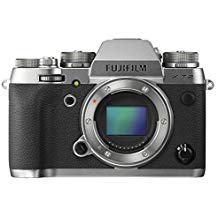
My go-to travel camera I bring on every trip. Both robust and lightweight with gorgeous image quality.
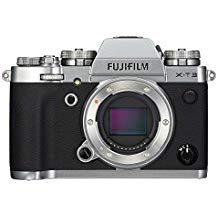
The newer version of the Fujifilm X-T2, Fujifilm's flagship line, with improved performance and video capabilities.
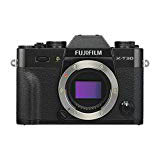
Same sensor as the X-T2 or X-T3 but without weather resistence and less powerful.
Reasons to try a mirrorless camera
The biggest reason I would encourage you to try a mirrorless camera is compact size meets amazing image quality . Mirrorless cameras are usually much smaller than DSLRs because they don’t need to fit a mirror inside (yes, literally!). The mirrorless cameras do have smaller sensors and produce smaller images, but unless you’re going to print your pictures on a wall, your photos will be more than big enough.
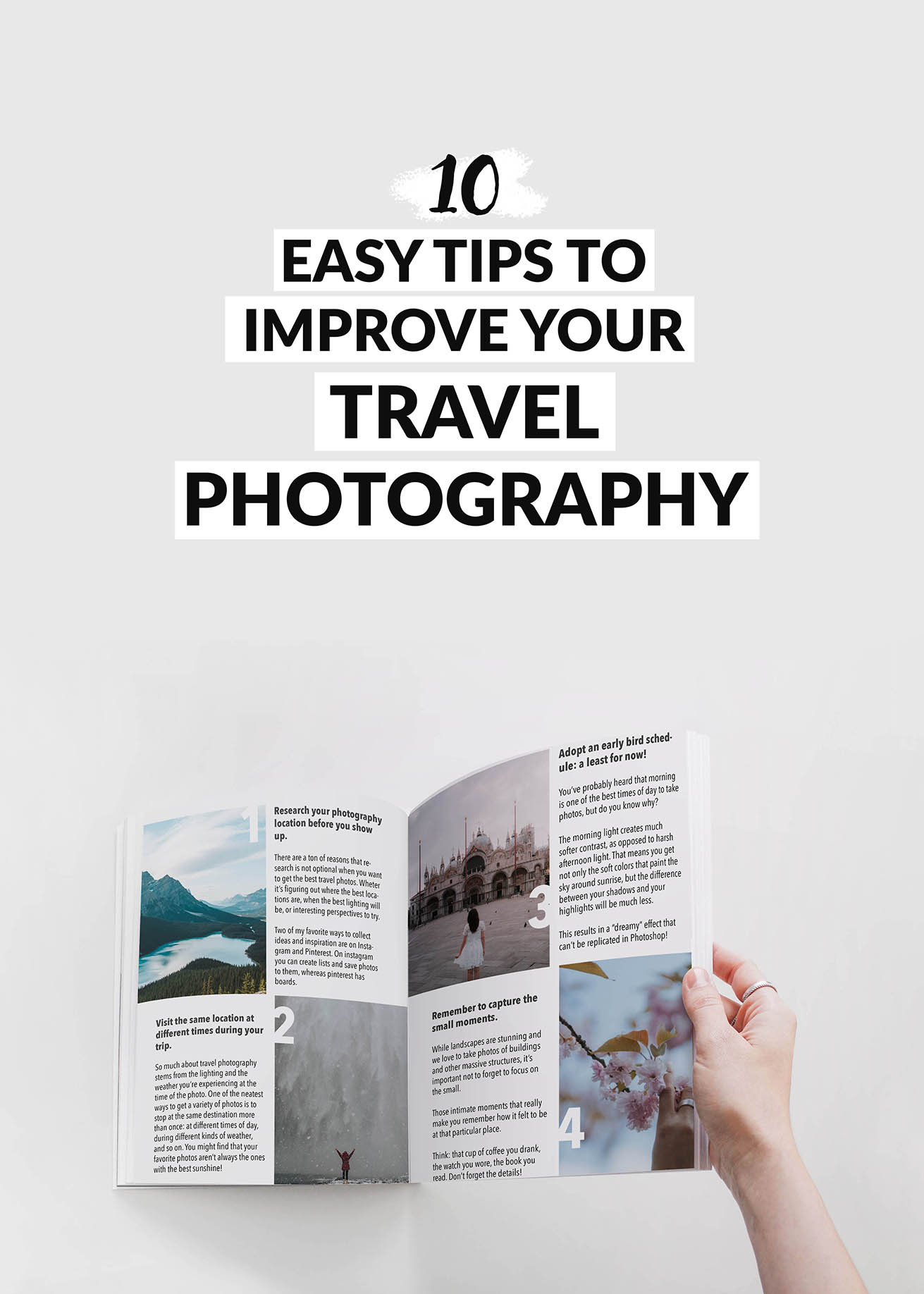
Your privacy is important to us. Unsubscribe at anytime.
If you’re just getting started with Fujifilm, you might be wondering what all the names of the cameras mean and how to decipher the different acronyms next to their lenses. In reality, there isn’t that much going on and with this quick guide you’ll know enough to figure out what each camera name means, as well as what features each lens has.
Fujifilm camera series
- X-T series – This is the so-called “flagship” camera line of Fujifilm, and has been around since basically the dawn of Fuji’s mirrorless camera system. You typically have three main variants: X-T3, X-T30, and X-T100. As mentioned above, these go from most expensive to least expensive, and also slowly downgrade some of the features available to offer the camera at the price point.
- X-H series – This is a quite new camera series, which has a bigger camera body but is capable of shooting even better video. Personally I never had an issue with the video on my Fujifilm camera, but if you are really interested in video you might want to check out this camera range.
- X-Pro series – These cameras are so-called “range-finder” cameras, meaning that the focus mechanism works differently than you might be used to. One positive thing is that they tend to be smaller and more compact, but if you’re not familiar with the focus mechanism it can take time to get used to.
The important thing to note is that ALL of the cameras in these series (the “X series”) work with the accompanying X-series lenses. So no matter which camera you buy from these series, they will work with a bunch of different lenses. And if you upgrade your camera over time, the lenses will still continue to work.
NOTE – Fujifilm also offers a medium-format camera (that is, producing even larger pictures than a full-frame camera), however it costs several thousand dollars and it’s primarily meant for professional photographers.
Fujinon X-series lenses
All of the Fuji X series cameras are compatible with X series lenses, no matter how inexpensive the camera is. That’s awesome because you can gradually upgrade your camera, and instead invest your money into buying high-quality lenses that will last you 10+ years.
When picking out a Fujifilm lens, you want to take a look at the following attributes of the lens and check what it’s capable of:
- f – Short for “F Stop”, this tells you how wide the aperture of the lens will be. For example, “Fujinon XF 35mm f1.4” has a maximum aperture of 1.4. The smaller the number, the more light comes in and the better bokeh you can get!
- WR – Weather Resistent. While this doesn’t mean you should dunk your camera in a river, it provides protection against extreme high and low temperatures, as well as rain, snow, and dust.
- OIS – Optical Image Stabilization. This is a great feature for zoom lenses, since zoom lenses tend to have a longer focal length which makes them prone to problems with “shake” (making your photos blurry).
- Red Badge Zoom – Fujifilm has two categories of zoom lenses, normal lenses and so-called “Red Badge” lenses. You can see it by looking at the lens whether it has a red “XF” logo on it. The red badge lenses are more expensive but extremely high quality.
If you want to learn more, you can definitely check out my guide to the best Fujifilm lenses for travel , which does a thorough review and shares sample images for tons of different Fujifilm X-series lenses.
Naturally, Fujifilm is not the only company making mirrorless cameras. Probably the most popular alternative to Fujifilm is Sony, which produces a really impressive line of mirrorless cameras. The most interesting part is that they also product a full-frame mirrorless camera, whereas Fujifilm produces either crop sensor (smaller) or medium format (larger).
Here’s a quick comparison of the different Sony cameras you might want to consider for a travel camera.
All of these cameras are compatible with the Sony E-Mount system. The main difference is that, except for the Sony Alpha a7II, these cameras full-frame , which also makes them more expensive than Fujifilm. That said, some of the Sony lenses are less expensive than the Fujifilm ones so in the end, it somewhat balances out.
Sony vs Fujifilm: Which one is better?
My biggest recommendation is pick Sony if you are prioritizing video, pick Fujifilm if you are prioritizing photography . Sony’s cameras are undoubtedly superior at video, whereas the Fujifilm lenses and system have very special image quality and color for photography (I mean, before digital they were doing film for many years so they kinda figured that out).
That said, Fujiflm is constantly improving their video offering and I’ve had plenty of success using Fujifilm for making movies. It’s just about if you really see yourself doing that all the time, in which case Sony is a better choice for you!
More Fujifilm accessories
Your camera is probably one of the most importants piece of your arsenal when it comes to producing beautiful images. Some of Fuji’s excellent lenses will help too. But there are also lots of other useful Fujifilm accessories that will help you capture images you can’t get without them! Keep reading this post for accessories to add to your travel photography kit.
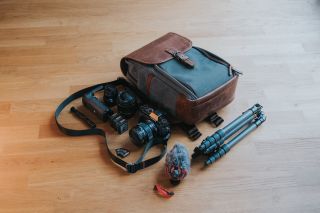
In my 5+ years shooting with Fuji cameras, these are the best Fujifilm accessories that can help you boost your image quality and create stunning photos.
What camera do you use for travel photography?
Let me know in the comments what camera setup you are using, I would love to hear about your experiences!

About the author
Hi there! I'm Monica, an American expat living in Germany for over six years and using every opportunity to explore the world from my homebase in Berlin. My goal is to capture my memories in photos and posts that show how easy it is to start from scratch and travel the world by working abroad.
Follow along on Instagram , Twitter , Bloglovin , & Facebook .
You might also like...
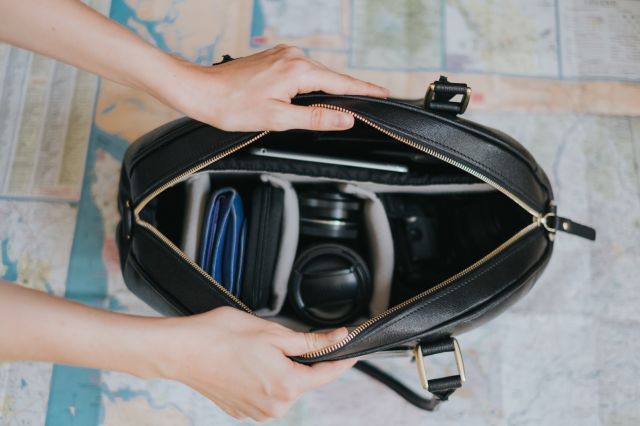
How to choose a camera bag for travel
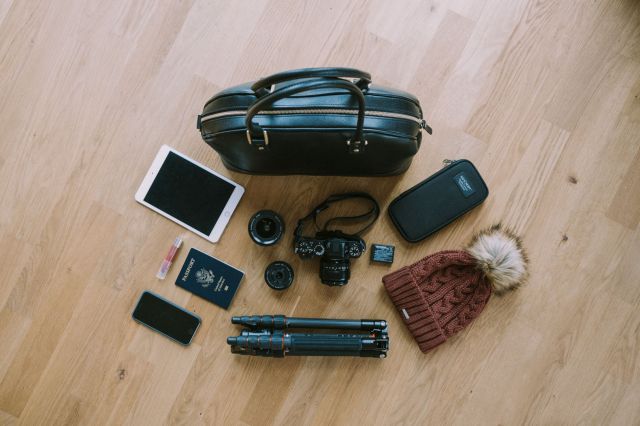
How to craft a minimalist travel photography kit

The Phoblographer may receive affiliate compensation for products purchased using links in this article. For more information, please visit our Disclaimers page .
Want the Best Fujifilm Lens for Travel? Here Are 3 We Recommend
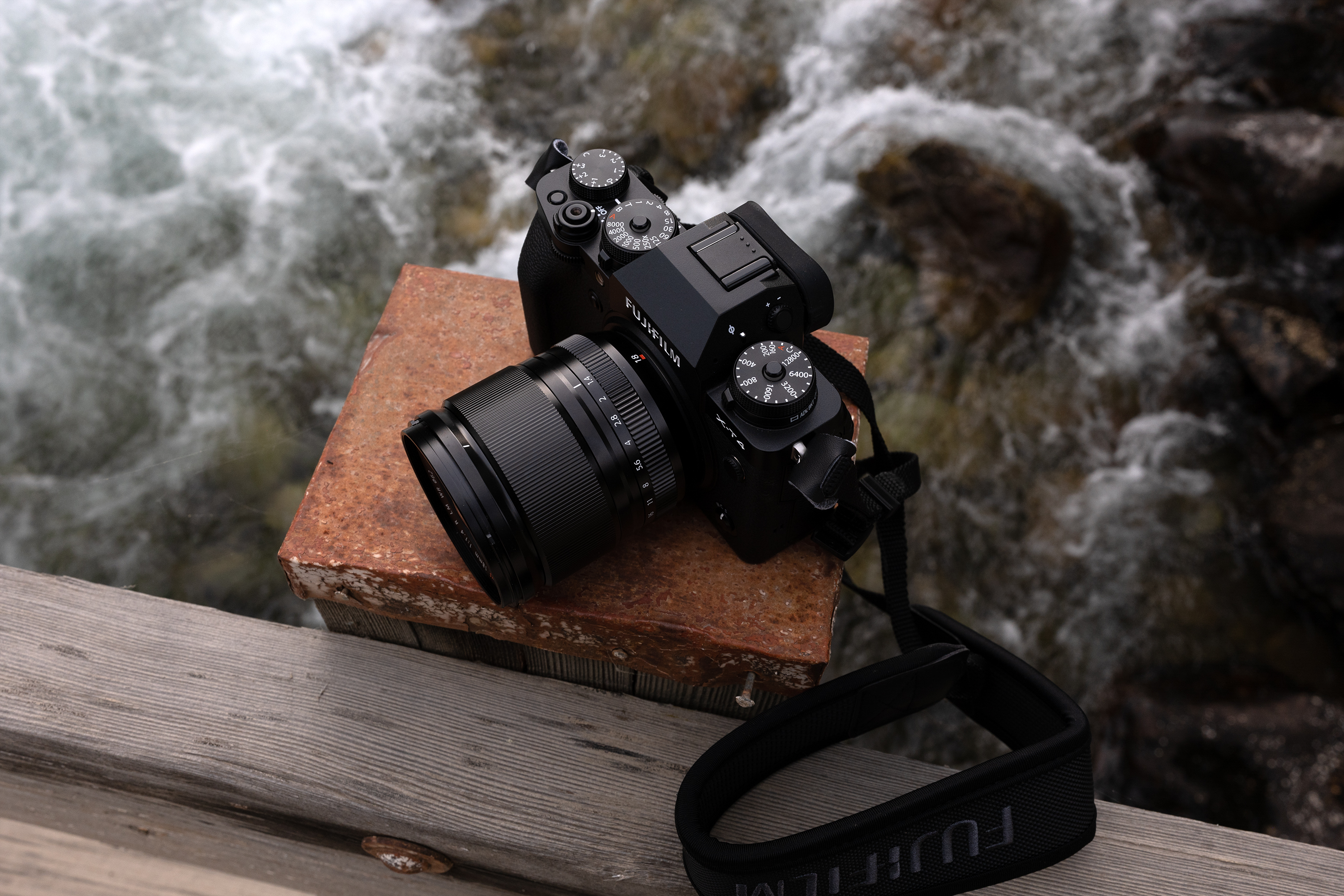
Travel photography with the Fujifilm camera system is strongly recommended for various reasons. They’re small, lightweight, and often have exceptional image quality. We’ve tested most of them, and our staff prefers the prime lenses. What’s more, most of the staff here at The Phoblographer shoots with Fuji. We’re leading you to choose the best Fujifilm lens for travel photography. Take a look with us!
You can view this article and much more with minimal banner ads in our brand new app for iOS, iPadOS , and Android . And for $24.99/year, you can have a banner ad-free experience.
The Phoblographer’s various product round-up features are done in-house. Our philosophy is simple: you wouldn’t get a Wagyu beef steak review from a lifelong vegetarian. And you wouldn’t get photography advice from someone who doesn’t touch the product. We only recommend gear we’ve fully reviewed. If you’re wondering why your favorite product didn’t make the cut, there’s a chance it’s on another list. If we haven’t reviewed it, we won’t recommend it. This method keeps our lists packed with industry-leading knowledge. Some of our stories include affiliate links. If you buy something through one of these links, we may earn an affiliate commission.
Table of Contents
Pro Tips on Using Your Fujifilm Lens for Travel
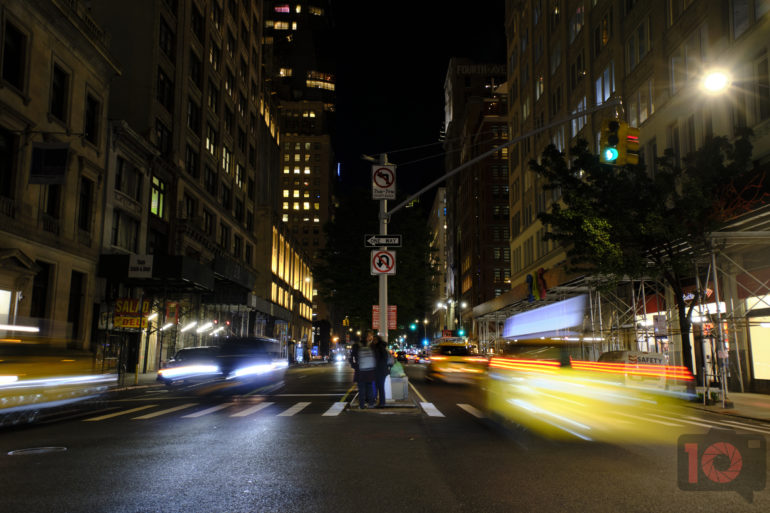
Fujifilm’s major strength is its prime lenses. So with that said, here are some tips to consider before choosing a lens:
- The Fujifilm X-mount zoom lens lineup is good, but not exceptional. A few of their zoom lenses feel like primes. But overall, we recommend other brands when it comes to zoom lenses.
- If you’re choosing a Fujifilm lens for travel, reach for Fuji’s excellent primes. They’re small, lightweight, and many of them have weather resistance.
- Make sure your cameras have the latest firmware.
- Know that when you choose a Fujifilm lens for travel, the image quality is mostly defined by the camera sensor. Choose a film simulation and get to shooting!
- In Capture One, you can apply the Fujifilm film simulations with ease. So that should make choosing a Fujifilm lens for travel photography a bit simpler.
Fujifilm 33mm f1.4 R WR
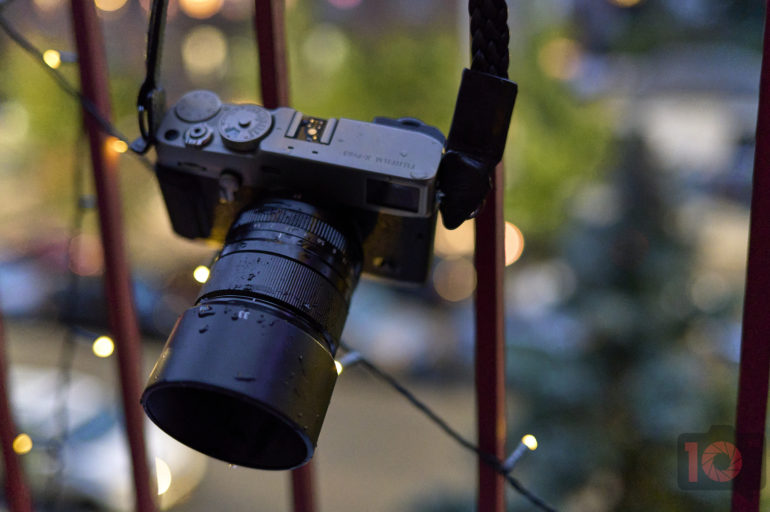
In our review, we state:
“It’s hard not to like the image quality of the Fujifilm 33mm f1.4 R WR LM. It’s sharp, the bokeh does the job, and you’ll always get those Fujifilm colors you adore. Any passionate photographer would be crazy not to want this lens or at least not appreciate it for everything it can do. If Fujifilm had something like the Canon L or Sony G Master lineups, this lens would be included in that easily.”
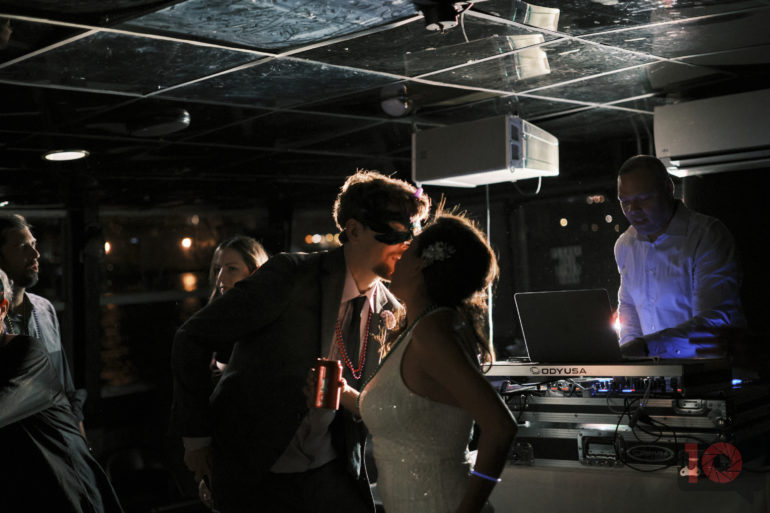
Tamron 18-300mm f3.5-6.3 Di III-A2 VC VXD
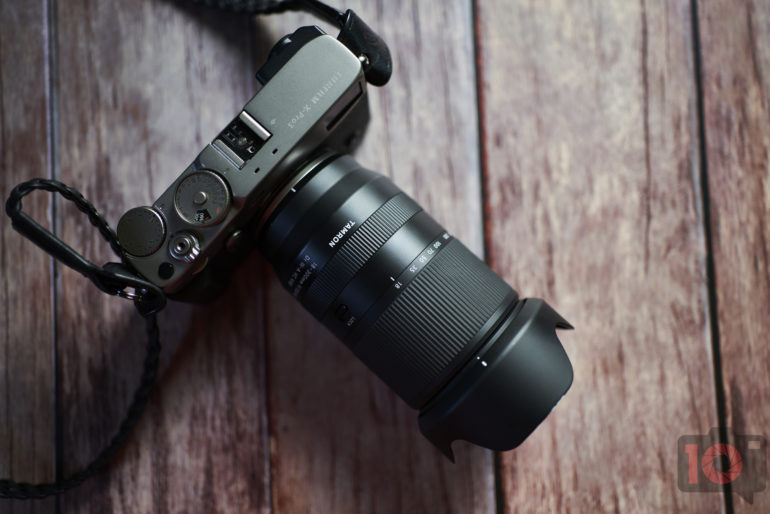
“As I’ve stated, I’ve been using the Tamron 18-300mm f3.5-6.3 Di III-A2 VC VXD with the X Pro 3. Most of the time, I really wish it had Bird autofocus detection. Fujifilm doesn’t have it, but it would’ve made birding in NYC so much easier. Fujifilm’s ergonomics let you quickly choose an autofocus point, but it would be faster if bird detection were built in. For the most part, though, the Tamron 18-300mm f3.5-6.3 Di III-A2 VC VXD is quick to focus and very accurate. Any inaccuracies I’ll blame on Fujifilm and the company’s negligence to the Fujifilm X Pro 3. I’m sure the performance will be even better on the Fujifilm XT4.”
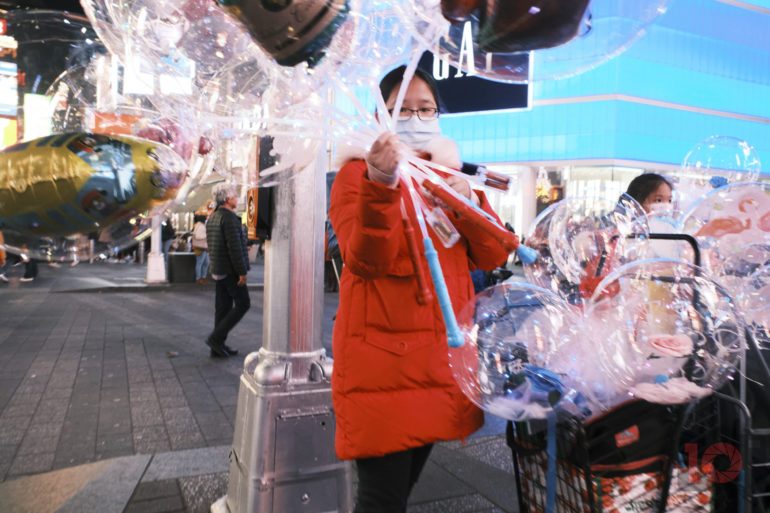
Fujifilm 18mm f1.4 R WR
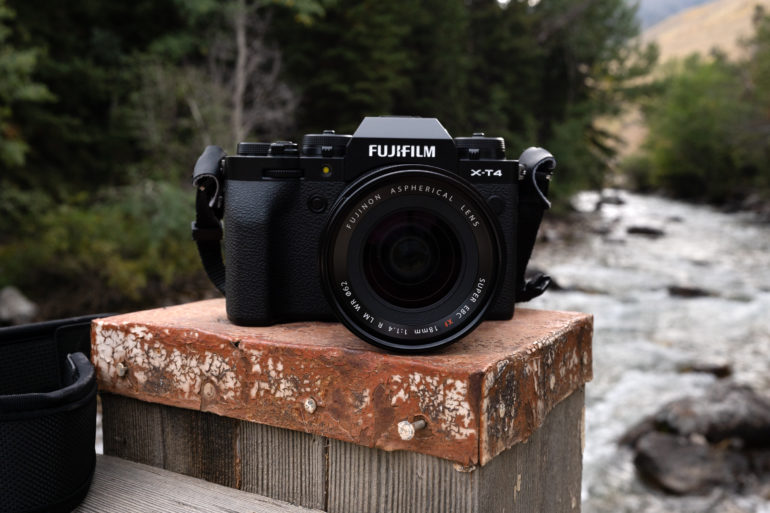
“There’s a lot to love about this lens. It’s sharp. The lens boasts good bokeh that you’ll enjoy. It also keeps any majorly annoying, traditional lens issues at bay. And then there’s Fuji’s color, which comes primarily from its sensor output. No matter what simulation you use, you’re going to adore this lens.”
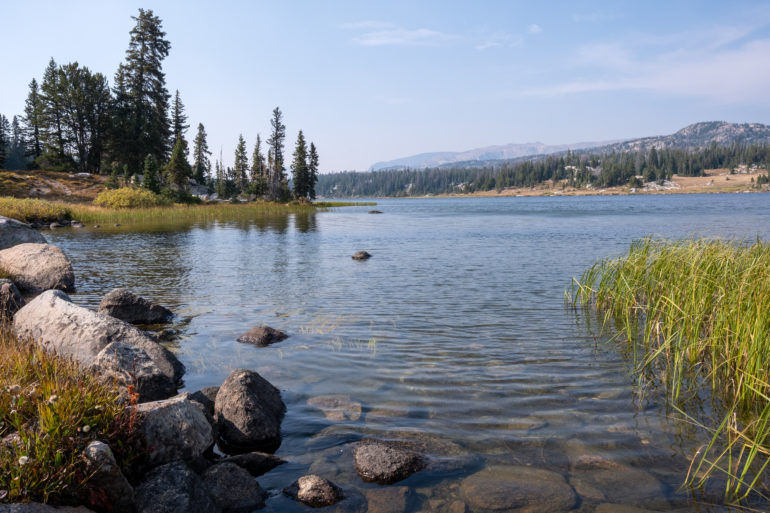

COUNTRY / REGION
Dummy textDummy textDummy text
SELECT YOUR COUNTRY OR REGION
canada ( English , French )
japan ( Japanese , English )
Philippines
belgium ( French , Dutch )
netherlands
switzerland ( German , French )
switzerland ( German , French , Italian )
New Zealand
FUJINON XF16-80mmF4 R OIS WR
Compact zoom with a constant f4 aperture and 6.0-stop ois.
FUJINON XF16-80mmF4 R OIS WR has a maximum aperture value of F4 throughout the focal length of 16-80mm (equivalent to 24-122mm in the 35mm film format). This lens has a minimum shooting distance of 35 cm over the entire zoom range, which gives a maximum shooting magnification of 0.25x. The compact and lightweight lens weighs only 440g which is approximately 40% lighter than an equivalent lens for a 35mm format system. When attached to an X-T3 the kit weighs only 979g and 823g when combined with X-T30, making it the ultimate travel combination. This new standard zoom lens features 6.0-stop OIS, meaning you can comfortably shoot in a wide variety of situations from a night scene or indoors without worrying about camera shake.

Advanced image quality
The lens consists of 16 elements in 12 groups, including three aspherical lens elements and one ED aspherical lens. The aspherical lens elements are controlled at high precision to reduce field curvature and spherical aberration, resulting in an advanced level of image sharpness across the frame. By using an ED aspherical lens as a OIS lens, aberration fluctuation due to image stabilization is suppressed. In addition, This lens has a minimum focusing distance of 35 cm close-up photography over the entire zoom range. The lens has very little breathing making it suitable for movie shooting.
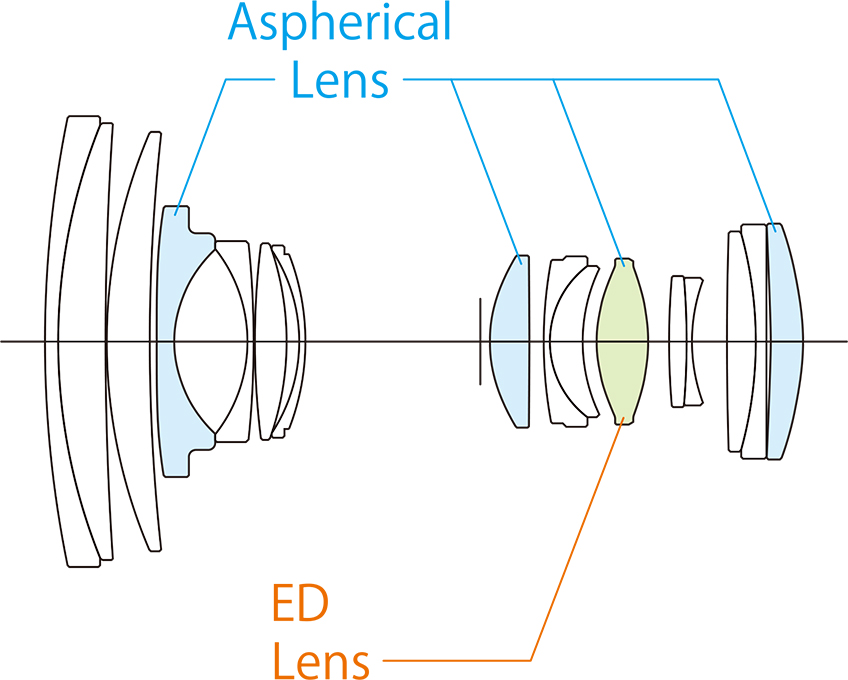
Compact, lightweight and stylish design for superior operability
- The compact 5x zoom lens weighs just 440g for excellent portability. In addition, the total length is the compact size of 88.9 mm. Approximately 40% lighter than a full size 5x zoom lens.
- Metal aspects of the exterior achieve a stylish look that gives additional quality and durability.
- The zoom, aperture and focus rings have just the right amount of torque for better handling.

Powerful OIS
It has the strongest OIS performance equivalent to 6.0 CIPA-guideline standard. The camera automatically detects when it is fixed to a tripod or when panning, and adjusts accordingly.
Fast and silent autofocus
The lens uses the internal focus AF system that drives smaller and lighter focusing elements. It uses a stepping motor, known for its quiet operation and accuracy, to achieve fast and silent autofocus.
Advanced construction
The lens barrel is sealed at 10 locations making the lens dust and weather resistant and capable of operating at temperatures as low as -10°C. Mounting it on weather resistant mirrorless digital cameras such as X-Pro2, X-T1, X-T2, X-T3 and X-H1 allows you to shoot in light rain or a dusty environment outdoors with peace of mind.

Be Inspired
- 02.20.2024 XF16-80mmF4 R OIS WR Firmware Update Ver.1.20
- 04.27.2023 GF / XF Lens Firmware Updates
- 05.31.2022 Fujifilm unveils the latest interchangeable lenses roadmap for the X Series of mirrorless digital cameras
- 10.15.2020 Fujifilm unveils the latest interchangeable lenses roadmap for the X Series of mirrorless digital cameras
- 04.23.2020 XF16-80mmF4 R OIS WR Firmware Update Ver.1.04
RECENTLY VIEWED ITEMS
Mountain View, CA
Mountain View
Around the Globe
Hurricane tracker.
Severe Weather
Radar & Maps
News & features, winter center, news / weather news, overrun japanese town putting up eight-foot barrier to block tourist photos of mount fuji.
Fujikawaguchiko, at the foot of the Yoshida Trail to Mount Fuji, has become overrun with foreign tourists trying to get the perfect photo of Japan’s most famous mountain.
By Lilit Marcus, CNN
Published Apr 26, 2024 4:55 AM PDT | Updated Apr 26, 2024 4:55 AM PDT

A tourist takes a photo at the spot in Fujikawaguchiko where the barrier is due to go up. (Photo credit: Philip Fong/AFP/Getty Images via CNN Newsource)
Editor's note: Sign up for Unlocking the World , CNN Travel’s weekly newsletter. Get the latest news in aviation, food and drink, where to stay and other travel developments.
(CNN) — A picturesque Japanese town is putting up a giant mesh barrier to block a popular selfie spot near Mount Fuji.
Fujikawaguchiko, at the foot of the Yoshida Trail to Mount Fuji , has become overrun with foreign tourists trying to get the perfect photo of Japan’s most famous mountain.
Specifically, they’re standing in front of Lawson’s, an outpost of the large Japanese convenience store chain, to get a shot of the contrast between the busy neon-lit shop and the peaceful mountain behind it.
And now the town has had enough and is putting up the mesh barrier to block the view, a local official told CNN.
The official, who did not want to give her name, said that there have been ongoing problems with tourists leaving trash and not following traffic rules. Despite signs and security guards being posted to warn them, the situation has persisted.
“It is regrettable that we had to take such measures,” the official said.
The net, which measures eight feet (2.5 meters) high and 66 feet across (20 meters), will be erected early next week.

Mt. Fuji and Tokyo skyline (Photo credit: Jackyenjoyphotography/Getty Images)
The town of Fujikawaguchiko is in Yamanashi prefecture, to the north of Fuji and about 62 miles (100 kilometers) west of Tokyo.
The crowds plaguing the small town are part of a larger problem affecting Japan.
Japan has been experiencing overtourism issues since reopening post-pandemic in late 2022. March 2024 was the country’s all-time biggest tourism month ever, with more than three million foreign tourists entering the country.
Many of them head straight to Mount Fuji, an icon of Japan and a UNESCO World Heritage site, leaving garbage and causing erosion along the way.
“Overtourism – and all the subsequent consequences like rubbish, rising CO2 emissions and reckless hikers – is the biggest problem facing Mount Fuji,” Masatake Izumi, a Yamanashi prefectural government official, told CNN Travel last year.
Some locals had even nicknamed the 3,776-meter (12,388-foot) mountain, called Fuji-san in Japanese, “trash mountain.”
In an effort to mitigate the overcrowding, Yamanashi’s prefectural government announced several new policies for tourists , including a 4,000-person daily limit for hikers and a mandatory fee of 2,000 yen ($13) apiece. Previously, the fee had been optional.
Putting up a barrier to block would-be photographers also has precedent elsewhere in the world: The Austrian town of Hallstatt, which was said to have inspired the look of the megahit Disney movie “Frozen.”
Hallstatt – which has about 800 permanent residents and has as many as 10,000 tourists a day in peak season – erected a wooden fence in May 2023 as a deterrent against selfie-takers.

The-CNN-Wire™ & © 2024 Cable News Network, Inc., a Warner Bros. Discovery Company. All rights reserved.
Weather News

LIVE: Violent storms likely into Friday night

How to recognize a 'radar-confirmed tornado'

Two broods of cicadas begin to emerge up and down the East Coast
Top Stories
Trending Today
Accuweather early, accuweather prime, forecast victories.
LATEST ENTRY
Violent storms likely into Friday night
34 minutes ago

High risk of tornadoes, hail and flash flooding for central US
21 minutes ago

This map may save lives when there's a tornado threat

Weather Forecasts
Warmth to surge over much of Northeast; 1st 90s F in some areas
52 minutes ago

911 call frenzy as cicadas invade South Carolina towns

Featured Stories
10 types of tornadoes that occur in the US

Overrun Japanese town erects barrier to block photos of Mount Fuji
3 hours ago

Indian voters battle extreme temperatures amid intense heat wave
5 hours ago

A lake in Mexico’s ‘magical town’ is disappearing

More than 100 prisoners flee after rainfall destroys prison in Nigeria

We have updated our Privacy Policy and Cookie Policy .
Get AccuWeather alerts as they happen with our browser notifications.
Notifications Enabled
Thanks! We’ll keep you informed.
Russia Travel Blog | All about Russia in English
- About our blog
- RussiaTrek.org
Sidebar →
- Architecture
- Entertainment
- RussiaTrek.org News

- Send us a tip with a message
- Support RussiaTrek.org
- Travel Guide to Ukraine
- Comments RSS
← Sidebar
The trains and stations of the Moscow Metro
2 Comments · Posted by Alex Smirnov in Cities , Travel , Video
The Moscow Metro is the third most intensive subway system in the world after Tokyo and Seoul subways. The first line was opened on May 15, 1935. Since 1955, the metro has the name of V.I. Lenin.
The system consists of 12 lines with a total length of 305.7 km. Forty four stations are recognized cultural heritage. The largest passenger traffic is in rush hours from 8:00 to 9:00 and from 18:00 to 19:00.
Cellular communication is available on most of the stations of the Moscow Metro. In March 2012, a free Wi-Fi appeared in the Circle Line train. The Moscow Metro is open to passengers from 5:20 to 01:00. The average interval between trains is 2.5 minutes.
The fare is paid by using contactless tickets and contactless smart cards, the passes to the stations are controlled by automatic turnstiles. Ticket offices and ticket vending machines can be found in station vestibules.
Tags: Moscow city
You might also like:

The bridge over Zolotoy Rog Bay in Vladivostok
The views of St. Petersburg from the TV tower >>
Tomás · August 27, 2012 at 11:34 pm
The Moscow metro stations are the best That I know, cars do not.
Alberto Calvo · September 25, 2016 at 8:57 pm
Great videos! Moscow Metro is just spectacular. I actually visited Moscow myself quite recently and wrote a post about my top 7 stations, please check it out and let me know what you think! :)
http://www.arwtravels.com/blog/moscow-metro-top-7-stations-you-cant-miss
Leave a Reply
XHTML: You can use these tags: <a href="" title=""> <abbr title=""> <acronym title=""> <b> <blockquote cite=""> <cite> <code> <del datetime=""> <em> <i> <q cite=""> <s> <strike> <strong>
- February 2024
- January 2024
- December 2023
- November 2023
- October 2023
- September 2023
- August 2023
Claudia Looi
Touring the Top 10 Moscow Metro Stations
By Claudia Looi 2 Comments

Komsomolskaya metro station looks like a museum. It has vaulted ceilings and baroque decor.
Hidden underground, in the heart of Moscow, are historical and architectural treasures of Russia. These are Soviet-era creations – the metro stations of Moscow.
Our guide Maria introduced these elaborate metro stations as “the palaces for the people.” Built between 1937 and 1955, each station holds its own history and stories. Stalin had the idea of building beautiful underground spaces that the masses could enjoy. They would look like museums, art centers, concert halls, palaces and churches. Each would have a different theme. None would be alike.
The two-hour private tour was with a former Intourist tour guide named Maria. Maria lived in Moscow all her life and through the communist era of 60s to 90s. She has been a tour guide for more than 30 years. Being in her 60s, she moved rather quickly for her age. We traveled and crammed with Maria and other Muscovites on the metro to visit 10 different metro stations.

Arrow showing the direction of metro line 1 and 2

Moscow subways are very clean
To Maria, every street, metro and building told a story. I couldn’t keep up with her stories. I don’t remember most of what she said because I was just thrilled being in Moscow. Added to that, she spilled out so many Russian words and names, which to one who can’t read Cyrillic, sounded so foreign and could be easily forgotten.
The metro tour was the first part of our all day tour of Moscow with Maria. Here are the stations we visited:
1. Komsomolskaya Metro Station is the most beautiful of them all. Painted yellow and decorated with chandeliers, gold leaves and semi precious stones, the station looks like a stately museum. And possibly decorated like a palace. I saw Komsomolskaya first, before the rest of the stations upon arrival in Moscow by train from St. Petersburg.
2. Revolution Square Metro Station (Ploshchad Revolyutsii) has marble arches and 72 bronze sculptures designed by Alexey Dushkin. The marble arches are flanked by the bronze sculptures. If you look closely you will see passersby touching the bronze dog's nose. Legend has it that good luck comes to those who touch the dog's nose.

Touch the dog's nose for good luck. At the Revolution Square station

Revolution Square Metro Station
3. Arbatskaya Metro Station served as a shelter during the Soviet-era. It is one of the largest and the deepest metro stations in Moscow.

Arbatskaya Metro Station
4. Biblioteka Imeni Lenina Metro Station was built in 1935 and named after the Russian State Library. It is located near the library and has a big mosaic portrait of Lenin and yellow ceramic tiles on the track walls.

Lenin's portrait at the Biblioteka Imeni Lenina Metro Station

5. Kievskaya Metro Station was one of the first to be completed in Moscow. Named after the capital city of Ukraine by Kiev-born, Nikita Khruschev, Stalin's successor.

Kievskaya Metro Station
6. Novoslobodskaya Metro Station was built in 1952. It has 32 stained glass murals with brass borders.

Novoslobodskaya metro station
7. Kurskaya Metro Station was one of the first few to be built in Moscow in 1938. It has ceiling panels and artwork showing Soviet leadership, Soviet lifestyle and political power. It has a dome with patriotic slogans decorated with red stars representing the Soviet's World War II Hall of Fame. Kurskaya Metro Station is a must-visit station in Moscow.

Ceiling panel and artworks at Kurskaya Metro Station

8. Mayakovskaya Metro Station built in 1938. It was named after Russian poet Vladmir Mayakovsky. This is one of the most beautiful metro stations in the world with 34 mosaics painted by Alexander Deyneka.

Mayakovskaya station

One of the over 30 ceiling mosaics in Mayakovskaya metro station
9. Belorusskaya Metro Station is named after the people of Belarus. In the picture below, there are statues of 3 members of the Partisan Resistance in Belarus during World War II. The statues were sculpted by Sergei Orlov, S. Rabinovich and I. Slonim.

10. Teatralnaya Metro Station (Theatre Metro Station) is located near the Bolshoi Theatre.

Teatralnaya Metro Station decorated with porcelain figures .

Taking the metro's escalator at the end of the tour with Maria the tour guide.
Have you visited the Moscow Metro? Leave your comment below.
January 15, 2017 at 8:17 am
An excellent read! Thanks for much for sharing the Russian metro system with us. We're heading to Moscow in April and exploring the metro stations were on our list and after reading your post, I'm even more excited to go visit them. Thanks again 🙂
December 6, 2017 at 10:45 pm
Hi, do you remember which tour company you contacted for this tour?
Leave a Reply Cancel reply
You must be logged in to post a comment.
Please go to the Instagram Feed settings page to create a feed.

Overrun Japanese town putting up eight-foot barrier to block tourist photos of Mount Fuji
E ditor’s Note: Sign up for Unlocking the World , CNN Travel’s weekly newsletter. Get the latest news in aviation, food and drink, where to stay and other travel developments.
A picturesque Japanese town is putting up a giant mesh barrier to block a popular selfie spot near Mount Fuji.
Fujikawaguchiko, at the foot of the Yoshida Trail to Mount Fuji , has become overrun with foreign tourists trying to get the perfect photo of Japan’s most famous mountain.
Specifically, they’re standing in front of Lawson’s, an outpost of the large Japanese convenience store chain, to get a shot of the contrast between the busy neon-lit shop and the peaceful mountain behind it.
And now the town has had enough and is putting up the mesh barrier to block the view, a local official told CNN.
The official, who did not want to give her name, said that there have been ongoing problems with tourists leaving trash and not following traffic rules. Despite signs and security guards being posted to warn them, the situation has persisted.
“It is regrettable that we had to take such measures,” the official said.
The net, which measures eight feet (2.5 meters) high and 66 feet across (20 meters), will be erected early next week.
The town of Fujikawaguchiko is in Yamanashi prefecture, to the north of Fuji and about 62 miles (100 kilometers) west of Tokyo.
The crowds plaguing the small town are part of a larger problem affecting Japan.
Japan has been experiencing overtourism issues since reopening post-pandemic in late 2022. March 2024 was the country’s all-time biggest tourism month ever, with more than three million foreign tourists entering the country.
Many of them head straight to Mount Fuji, an icon of Japan and a UNESCO World Heritage site, leaving garbage and causing erosion along the way.
“Overtourism – and all the subsequent consequences like rubbish, rising CO2 emissions and reckless hikers – is the biggest problem facing Mount Fuji,” Masatake Izumi, a Yamanashi prefectural government official, told CNN Travel last year.
Some locals had even nicknamed the 3,776-meter (12,388-foot) mountain, called Fuji-san in Japanese, “trash mountain.”
In an effort to mitigate the overcrowding, Yamanashi’s prefectural government announced several new policies for tourists , including a 4,000-person daily limit for hikers and a mandatory fee of 2,000 yen ($13) apiece. Previously, the fee had been optional.
Putting up a barrier to block would-be photographers also has precedent elsewhere in the world: The Austrian town of Hallstatt, which was said to have inspired the look of the megahit Disney movie “Frozen.”
Hallstatt – which has about 800 permanent residents and has as many as 10,000 tourists a day in peak season – erected a wooden fence in May 2023 as a deterrent against selfie-takers.
CNN’s Emiko Jozuka and Junko Ogura contributed reporting.
For more CNN news and newsletters create an account at CNN.com
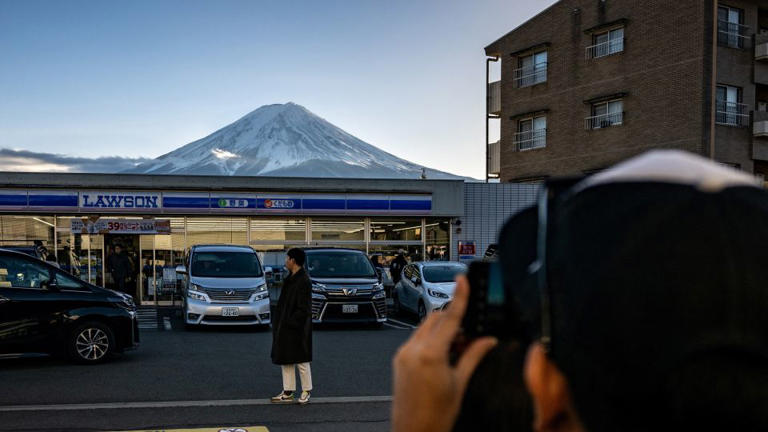

IMAGES
VIDEO
COMMENTS
Check current price. The Fujifilm XF 55-200mm f/3.5-4.8 is another incredible lens that clearly earns its seat at the table of best Fuji lenses for travel. It has very much been designed to be paired with the Fuji XF 18-55mm f/2.8-4 lens. With this pair of lenses, you have a very comprehensive travel kit.
16-55mm f2.8 WR - Considered the highest quality wide-to-midrange zoom in Fujifilm's lineup. Weather resistant, though a little bit on the heavy side. With the the latest Fujifilm camera bodies you can even bundle this lens as your kit lens for a steal. 10-24mm f4 - Possibly the best lens for landscape photographers.
Fujifilm XF 16-55mm F2.8 R LM WR - Best All-round Travel Lens. FUJIFILM XF 10-24mm f/4 R OIS WR Lens - Best Fuji Lens For Landscape. Fujifilm XF 16-80mm f4 R OIS WR Lens - Most Versatile Lens. Fujifilm 18-55mm f/2.8 - 4 - Best Kit Travel Lens. Fujifilm 23mm f/2 WR - Best Lens For Street Photogrpahy.
Best Fujifilm telephoto zoom lens (Image credit: Digital Camera World) 4. Fujifilm XF 50-140mm f/2.8 R LM OIS WR ... Ideal for travel and walkabout photography, this 'superzoom' XF18-135mm f/3.5-5.6 R LM OIS WR takes you all the way from wide-angle coverage to serious telephoto reach, equivalent to 27-206mm on a full-frame camera. Naturally ...
The XF18-135mm lens is often on the list of recommended lenses for Fujifilm travel photography. Having owned and used one, it doesn't make my list. For a slower, all-in-one travel zoom, I don't think it has enough reach. 27mm lens. The 27mm F/2.8 pancake lens is sharp, and you can often buy them at a bargain price. It's a firm favorite ...
The Fujifilm XF 55-200mm f/3.5-4.8 R LM OIS is an excellent all-around lens that is perfect for travel photography. It is a telephoto zoom lens that provides a focal length range of 55mm to 200mm, making it ideal for capturing distant subjects, whether you're shooting wildlife or architecture.
I just take two lenses with me and in some rare cases a third one. I make sure to include an all round zoom lens, a prime and an ultra wide angle or super zoom when absolutely needed. Walking through the tiles Fujifilm X-T2 with XF35mmF2 R WR - F2 - 1/40 second - ISO800. Recommended All Round Zoom Lens for Travelling
Quick Summary of the Best Travel Lenses for Fujifilm: Best All-in-One Travel Lens: Tamron 18-300mm f/3.5-6.3 Di III-A VC VXD. Best Telephoto Travel Lens: Sigma 100-400mm f/5-6.3 DG DN OS Contemporary. Best Wide-Angle Travel Lens: Fujinon XF 8-16mm f/2.8 R LM WR. Best Prime Travel Lens: Fujinon XF 33mm f/1.4 R LM WR.
The X-T5 is one of Fujifilm's flagship cameras, so it makes sense to consider its flagship standard zoom. The XF 16-55mm f/2.8 R LM WR does the same job on the X-T5 as a 24-70mm f/2.8 would on a full frame camera, with slightly longer reach (82.5mm equivalent) at the longer end of the zoom range.
BEST FOR: VERSATILITY. Moving on to zoom lenses, the Fujinon XF18-135mmF3.5-5.6 R LM OIS WR presents a versatile range of focal lengths. This includes ultra-wide-angle and some telephoto capabilities, giving you much room to experiment as you travel around.
A Traveler's Review: Sony 70-200mm F2.8 GM II OSS Lens. A Traveler's Review of the Sigma 16-28mm F2.8 DG DN Lens. A Traveler's Review of the Sigma 85mm F1.4 DG DN Art Lens. the best travel lenses for the Sony a6500. why Sigma 56mm F1.4 is the best travel photography lens for Sony APS-C.
The Fujifilm X-E4 is the smallest interchangeable-lens camera with an electronic viewfinder offered by Fujifilm. The compact size of the X-E4 is an important aspect of this travel kit. I have an X-T30, which is a small camera that's a little bigger than the X-E4, and it does fit into the camera bag, but barely—it's much more snug than I want it to be.
When picking out a Fujifilm lens, you want to take a look at the following attributes of the lens and check what it's capable of: f - Short for "F Stop", this tells you how wide the aperture of the lens will be. For example, "Fujinon XF 35mm f1.4" has a maximum aperture of 1.4.
No matter what simulation you use, you're going to adore this lens.". Buy Now. fujifilm fujifilm 18mm Fujifilm 18mm F1.4 LM WR fujifilm 33mm fujifilm 33mm f1.4 fujifilm lens fujifilm lenses ...
Unofficial Fujifilm subreddit for Fuji photographers to share photos, ask questions, discuss digital photography, cameras and lenses, and share gear news and rumors. ... I'm 99% a prime shooter, but if I needed a travel zoom, the most balanced option, imo, is the 16-80 f/4. Wide enough aperture for most shooting situations, IS, 16mm on the wide ...
Compact zoom with a constant F4 aperture and 6.0-stop OIS. FUJINON XF16-80mmF4 R OIS WR has a maximum aperture value of F4 throughout the focal length of 16-80mm (equivalent to 24-122mm in the 35mm film format). This lens has a minimum shooting distance of 35 cm over the entire zoom range, which gives a maximum shooting magnification of 0.25x.
A handful of wide prime lenses are available, too. The compact XF 8mm F3.5 R WR is a good match for landscapes, architecture, travel, and vlogs. For more moderate wide view, look at the XF 14mm or ...
Best Fuji Weather-Sealed Travel Zoom? I recently took advantage of the low price of the XH-1 and bought it bundled with the XF 16-55 zoom. I have a limited budget and can only afford to save for and buy a new lens about once a year. I could only afford the XH-1 and XF 16-55 by selling off my old gear.
Hundreds of visitors have been flocking to Fujikawaguchiko after travel bloggers began posting videos and pictures of the epic 3,776m mountain, known as Fuji-san, framed on top of a popular local ...
Some locals had even nicknamed the 3,776-meter (12,388-foot) mountain, called Fuji-san in Japanese, "trash mountain." Maiko participate in a bean festival in Kyoto. The Asahi Shimbun/Getty Images
Japanese town blocks panoramic Mount Fuji views to tackle crowding by unruly foreign tourists - Fujikawaguchiko official says 'regrettable' decision to install mesh net at a popular photo spot ...
A picturesque Japanese town is putting up a giant mesh barrier to block a popular selfie spot near Mount Fuji. Go Back LIVE: Severe storms threaten central U.S. with twisters, damaging wind.
Drive • 1h 3m. Drive from Elektrostal to Moscow 58.6 km. RUB 450 - RUB 700. Quickest way to get there Cheapest option Distance between.
2 Comments · Posted by Alex Smirnov in Cities, Travel, Video. The Moscow Metro is the third most intensive subway system in the world after Tokyo and Seoul subways. The first line was opened on May 15, 1935. Since 1955, the metro has the name of V.I. Lenin.
Revolution Square Metro Station. 3. Arbatskaya Metro Station served as a shelter during the Soviet-era. It is one of the largest and the deepest metro stations in Moscow. Arbatskaya Metro Station. 4. Biblioteka Imeni Lenina Metro Station was built in 1935 and named after the Russian State Library.
Rabochaya ulitsa, 35А, postal code 144001 — plot a route to the address in Yandex Maps. Find places nearby, check businesses inside and service organizations
A picturesque Japanese town is putting up a giant mesh barrier to block a popular selfie spot near Mount Fuji. Fujikawaguchiko, at the foot of the Yoshida Trail to Mount Fuji, has become overrun ...